Three kilometres of pipe.

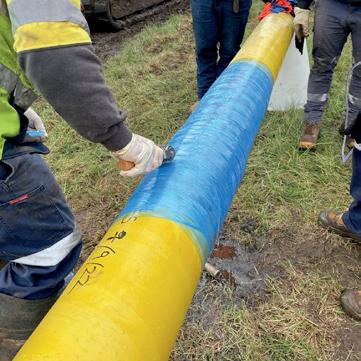
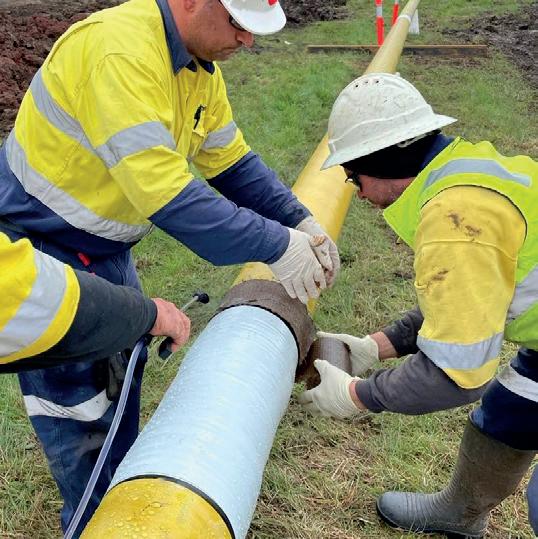

Two outstanding Denso™ systems.
One corrosion prevention solution.

SCAN TO VIEW OUR LATEST DENSO BORE-WRAP™ AND DENSO™ BUTYL TAPE SYSTEM (S43-R23) CASE STUDY. A MEMBER OF WINN & COALES INTERNATIONAL
® Volume 23 Number 10 - October 2023
Artificial intelligence solutions are driving life extension, the energy transition, and zero-incidents in the pipeline industry. Combining decades of in-line inspection results, metadata for tens of thousands of pipelines worldwide, and a dedicated team of experts, ROSEN’s Integrity Analytics initiative is the future. As partners we deliver unique insights that enable reliable decision-making for the safety, lifetime, and performance of your assets.

Integrity Analytics
www.rosen-group.com
Editor's comment 05. Pipeline news
With news on the Chevron subsea pipeline row in Cyprus, new proposed rules from PHMSA, AI for the energy transition, and more.
KEYNOTE ARTICLES: AFRICA AND THE MIDDLE EAST
09. Much potential, many pitfalls
Contributing Editor Gordon Cope offers a comprehensive guide to the pipeline sector in Africa and the Middle East.
14. Advancing pipeline infrastructure in Africa
MS Prakash, Vice President and General Manager, Africa - Emerson Automation Solutions, outlines some key challenges faced by pipeline operators in Africa.
18. Africa's time to shine

Arun Behl, Head of Business Development – Middle East & Africa, and John Downer, Senior Project Manager, Penspen, UK, describe how energy producers in Africa can benefit from Europe’s shift in energy policy.
TURBOMACHINERY
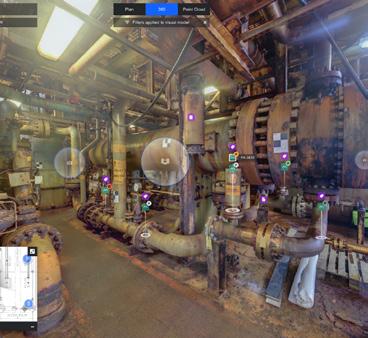
35. CO2 compression challenges
Klaus Brun, Brian Pettinato, Stephen Ross and Todd Omatick, Elliott Group, and Joseph Thorp, Aramco Ventures.
SUBSEA REPAIR
41. Making subsea connections count


Aiden Hardy, STATS Group, UK.
PIPELINE ISOLATION AND INTERVENTION

46. Surge relief in liquid pipelines
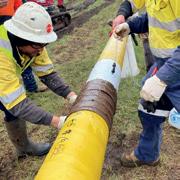

Eduardo Zani and Pedro Flores, Celeros Flow Technology, USA.
23. Conquering digital distrust in Nigeria
Adeshina Adebusuyi, Regional Business Development at James Fisher AIS, provides a blueprint for overcoming the gaps in Nigeria’s oil and gas digital transformation journey.
PUMPS
27. Green and lean: data driven asset optimisation for transmission pipelines

Dr Liam Trimby and Robyn Eveson, Klarian Ltd, UK.
31. Lifetime performance assurance

Red Paley and Gary Fitch, Sulzer.
53. Removing the guesswork
Aaron Madden, T.D. Williamson, USA.
TRENCHLESS TECHNOLOGY


57. HDD going green
Simon Herrenknecht, Herrenknecht AG, Germany.
61. Guided boring at its best
John Barbera, Barbco, USA.
CBP019982
Winn & Coales International Ltd has specialised in the manufacture and supply of corrosion prevention and sealing products for over 90 years. The well-known brands of Denso and Premier offer a cost-effective and long-term solution to corrosion on buried or exposed steel or concrete, pipes, tanks and structures. Their Denso Bore-Wrap™ and Denso™ Butyl Tape System (S43-R23) products feature in the latest case study from their Australian subsidiary, Denso (Australia) Pty Ltd.
ISSN 14727390 Member of ABC Audit Bureau of Circulations ON THIS MONTH'S COVER Reader enquiries [www.worldpipelines.com] C O NTENTS Copyright© Palladian Publications Ltd 2023. All rights reserved. No part of this publication may be reproduced, stored in a retrieval system, or transmitted in any form or by any means, electronic, mechanical, photocopying, recording or otherwise, without the prior permission of the copyright owner. All views expressed in this journal are those of the respective contributors and are not necessarily the opinions of the publisher, neither do the publishers endorse any of the claims made in the articles or the advertisements. Printed in the UK. WORLD PIPELINES
VOLUME 23 | NUMBER 10 | OCTOBER
|
2023
03.
41
57 23 SCAN TO VIEW OUR LATEST DENSO BORE-WRAP BUTYL TAPE SYSTEM (S43-R23) Three kilometres of pipe. Two outstanding Denso™ systems. One corrosion prevention solution. WCD WP Cover_Oct 2023.indd ® Volume 23 Number 10 - October 2023 PAGE 18 W ith 492 projects expected to commence that oil and gas producers in Africa are in for decidedly busy time would be something phenomenal surge in activity is primarily down to the European Commission’s plans to end Europe’s dependence on Russian fossil fuels following the Kremlin-sanctioned invasion of the succeeding at an all-time high, but there are number of key benefits to producers are to be realised. fuel’ en route to zero emissions target has opened key opportunity for African producers to take up the slack of, supplies. The European Parliament, in response to the energy crisis, also now considers new investments in gas as ‘climate friendly’ change of heart that is already proving an area of Africa currently provides around 20% of Europe’s gas imports. percentage that’s likely to increase considerably with natural gas delivered directly to the EU via pipeline and LNG transported by Why the EU/Africa attraction is mutual climate-neutral economy, with member nations having achieved zero carbon targets by that time. Although African countries don’t have the tapped reserves or extensive infrastructure looking to diversify their suppliers and routes to meet their existing energy needs. Africa can certainly be part of that mix, particularly as home to 13% of global gas reserves, 7% of the Europe’s appeal to Africa as region to export to is its tremendous market size and the creditworthiness of consumers. towards expanding and improving the production, processing and transport capacity of Africa’s energy producers. The EU appetite for imports of petroleum oils from Russia to 15.1% as of 3Q22, with further falls predicted. opportunity for Africa to make more use of its energy reserves, Arun Behl, Head of Business Development – Middle East & Africa, and John Downer, Senior Project Manager, Penspen, UK, describe how energy producers in Africa can benefit from Europe’s shift in energy policy. 19 18
PAGE 46 Surge relief in liquid pipelines urge relief in liquid pipelines reducing the pressure surge in pipeline system due to sudden fluid velocity or flow rate that travels through the pipeline and can cause damage to the system, such as pipe ruptures, leaks, or Consequences of high-pressure pipeline surge may include fatigue at welds, or longitudinal splits of the pipe. Pumps can be knocked out of alignment, piping and piping supports, as well as specialised components such as hoses, filters, bellows, result in unplanned downtime and product loss or spoilage, impacting consequences, too, ranging from environmental pollution and clean-up costs to injury or loss of Surge relief devices are typically installed at strategic points the pipeline system to protect against include relief valves, surge tanks, or other specialised equipment the surge energy and reduce the pressure spikes that can occur. The selection and design of various factors, including the type of fluid being transported, the length and diameter of the of the area, and the operational conditions of the pipeline system. of liquid pipelines and ensuring reliable and efficient transport of Anyone responsible for the design, operation, and maintenance of fluid handling systems must transient pressure surges and ensure adequate mitigation measures are Causes of surge Any hydraulic system, from a complex petrochemical process network, will be subject to surge pressures operational changes pressures may vary from being virtually undetectable to having catastrophic failure leading to major disaster. Many of us have experienced our garden hose. This effect often referred to as ‘water surge causes the sound. When an appliance’s low pressure and small larger piping and high-pressure arrangements commonly found in tanker terminals, oil and gas plants, that little thump can become big problem. The noise alone terrifying, and its surge is Rapid changes in pipeline flow rate are usually caused by generating pressure waves, which travel upstream and downstream from the point of origin. The these propagating waves rapidly increases or decreases. Typical propagation velocities can range pipeline to 3300 ft/sec. for typical crude oil line. as line pack, where pressure slowly builds. Due to frictional losses in higher discharge pressures to move the liquid column downstream. Pump flow maintained as the pump packs the pipeline. Using the IoT to capture pressure data in real-time adds further functionality and analysis of surge events, says Eduardo Zani and Pedro Flores, Celeros Flow Technology, USA. s 46 47




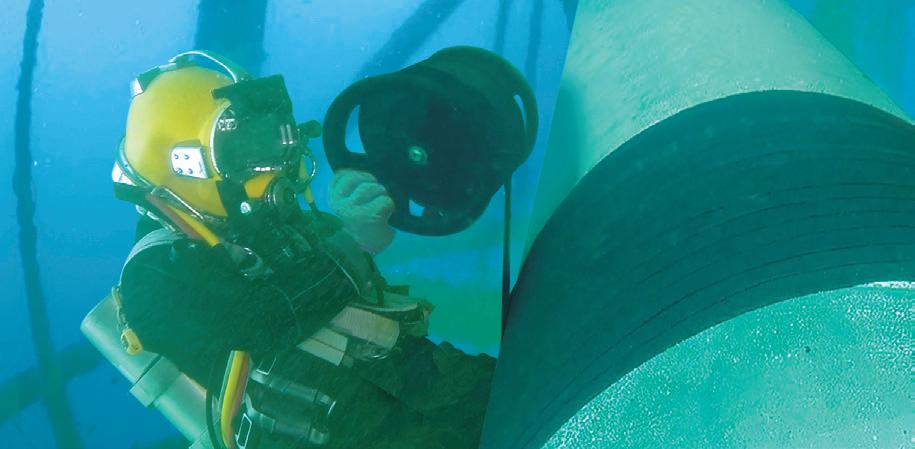


ONSHORE /OFFSHORE OIL & GAS POWER STRUCTURAL
EDITOR’S COMMENT
CONTACT INFORMATION
MANAGING EDITOR
James Little james.little@palladianpublications.com
EDITORIAL ASSISTANT
Isabel Stagg isabel.stagg@palladianpublications.com
SALES DIRECTOR

Rod Hardy rod.hardy@palladianpublications.com
SALES MANAGER
Chris Lethbridge chris.lethbridge@palladianpublications.com
SALES EXECUTIVE
Daniel Farr daniel.farr@palladianpublications.com
PRODUCTION DESIGNER
Kate Wilkerson kate.wilkerson@palladianpublications.com
EVENTS MANAGER
Louise Cameron louise.cameron@palladianpublications.com
DIGITAL EVENTS COORDINATOR
Merili Jurivete merili.jurivete@palladianpublications.com
DIGITAL ADMINISTRATOR
Leah Jones leah.jones@palladianpublications.com
ADMINISTRATION MANAGER
Laura White laura.white@palladianpublications.com
Palladian Publications Ltd, 15 South Street, Farnham, Surrey, GU9 7QU, UK
Tel: +44 (0) 1252 718 999
Website: www.worldpipelines.com
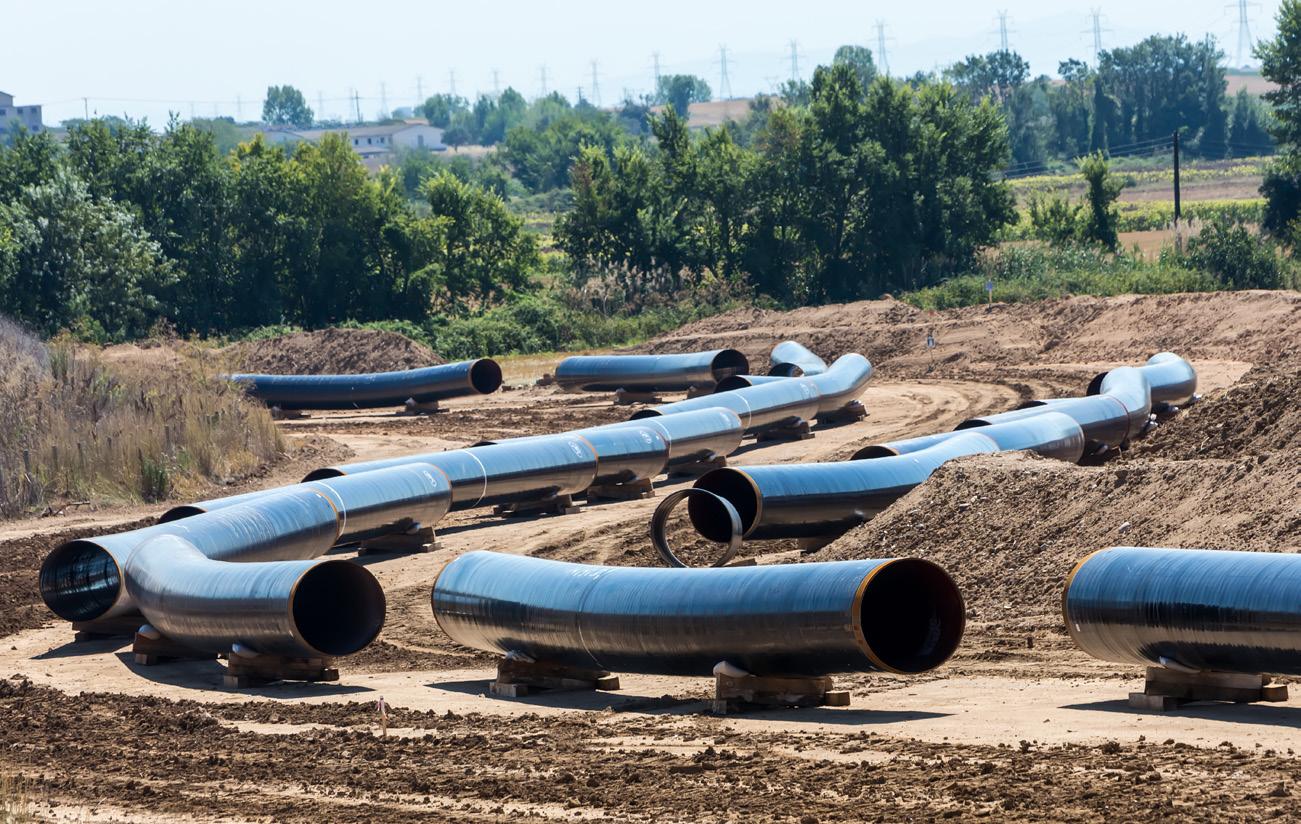
Email: enquiries@worldpipelines.com
Annual subscription £60 UK including postage/£75 overseas (postage airmail). Special two year discounted rate: £96 UK including postage/£120 overseas (postage airmail). Claims for non receipt of issues must be made within three months of publication of the issue or they will not be honoured without charge.
Applicable only to USA & Canada:
World Pipelines (ISSN No: 1472-7390, USPS No: 020-988) is published monthly by Palladian Publications Ltd, GBR and distributed in the USA by Asendia USA, 701C Ashland Avenue, Folcroft, PA 19032. Periodicals postage paid at Philadelphia, PA & additional mailing offices. POSTMASTER: send address changes to World Pipelines, 701C Ashland Avenue, Folcroft, PA 19032
The EU Commission has named six major technology companies as gatekeepers of the digital economy under the Digital Markets Act (DMA). Five American companies (Alphabet, Amazon, Apple, Meta, and Microsoft) and one Chinese company (ByteDance) will face stricter rules due to their substantial market dominance. The DMA aims to rein in their power, promote competition, and protect user choice and privacy. The rules will take full effect in six months, with very high fines for non-compliance.
The European Commission announced that:
“These are the first six companies designated as ‘gatekeepers’ under the Digital Markets Act. This status will prevent them from imposing unfair conditions on businesses and end users, and ensure the openness of crucial digital services. From social networks to operating systems, they have six months to ensure their core platform services comply with the Digital Markets Act, including: allowing users to unsubscribe and remove pre-installed services; allowing users to download alternative app stores; banning tracking outside of their services without consent, and banning ranking their products and services more favourably.” 1
The new EU law speaks to the phenomenon of ‘digital distrust’: a growing sense of mistrust in technology and the cyber-verse. Some recent reports characterise digital distrust as: information scepticism, mistrust of tech giants, surveillance fears, and a rise in cybercrime. 2 Until now, the way in which gatekeepers conducted their businesses has been either largely unregulated or based on sets of rules that, in the majority, pre-date the digital economy. The DMA will work towards making markets in the digital sector fairer and more contestable.
Digital distrust is a topic in this issue of World Pipelines: in an article starting on p. 23, Adeshina Adebusuyi, from James Fisher AIS, offers a blueprint for success for Nigeria’s oil and gas digital transformation journey. The article acknowledges that, while Nigeria is home to the highest number of technology hubs in the continent, it has a long way to go to fulfil its digital potential. One of the hurdles it faces is digital distrust, with the article explaining: “most [Nigerian] oil and gas decision makers will have at least one story to tell of how they were sold a vision of digital transformation, only to be left with an inferior product and no support to assist with implementation.” Adebusuyi lays out some steps to overcome this digital disillusionment and ensure Nigeria reaches its target of being a gas-powered economy by 2030.
Adebusuyi’s article sits alongside three others in our keynote section, which focuses on pipelines in Africa and the Middle East. On p. 9, World Pipelines’ Contributing Editor Gordon Cope offers information on pipeline capacity and projects in Iraq, Iran, Algeria, Egypt, Nigeria, Mozambique, Angola, and Uganda. On p. 14, Emerson Automation writes about the key challenges faced by pipeline operators in Africa, focusing on how best to manage infrastructure and assets. Finally, Penspen outlines how energy producers in Africa can benefit from the recent shift (away from Russia) in Europe’s energy policy, offering some regional case studies (p. 18).
1. https://www.linkedin.com/company/european-commission
2. https://www.sld.com/blog/digital-experiences/how-fake-news-scams-and-trolls-could-cause-digital-disruption
SENIOR EDITOR Elizabeth Corner elizabeth.corner@palladianpublications.com




The experts you can trust CRC Evans’ market-leading welding and coating services, technologies and high-performance equipment ensures efficient, on-time delivery of your global onshore and offshore energy projects. Americas Europe Middle East Africa Asia Pacific crcevans.com enquiries@crce.com @crcevansglobal 2-5 October - Abu Dhabi, UAE Visit us at Stand 8350, UK Pavilion, Hall 8
WORLD NEWS
US backs Chevron-led consortium in Cyprus subsea pipeline dispute
Washington has weighed into a dispute between Cyprus and international companies led by Chevron over how to develop a giant offshore gas field, backing the US company’s plan to link it to neighbouring Egypt, Reuters reports.
Reuters reports: The Chevron-led consortium proposed connecting the Aphrodite gas field via a subsea pipeline and existing infrastructure to Egypt, where the gas can be sold in the domestic market or liquefied and shipped to Europe, which has largely been cut off from Russian supplies.
Cypriot Energy Minister George Papanastasiou confirmed that the government had rejected the latest plan, which omitted a previous proposal to build a floating gas processing plant at the field which lies 160 km (100 miles) southeast of Cyprus. “The modification has been rejected. The expectation of the Republic of Cyprus is (that) the consortium honours what was mutually agreed by the parties in 2019,” Papanastasiou told Reuters.
The partners have engaged in a new round of talks with the Cypriot government, Israel’s NewMed, which is a partner in the Aphrodite field, said earlier this week.
The US is backing Chevron’s plans, which it believes will help to get gas to the market faster and with a lower carbon footprint as it does not involve building large infrastructure, according to a US source.
“Connecting (Aphrodite) to Egypt will help them with peak domestic consumption in the summer, add stability and reduce tensions in the region, and allow exports for Europe,” the US
source said.
The Biden administration is “making the distinction between expensive and unnecessary infrastructure projects” and less work-intensive interconnections that are necessary as economies transition to cleaner forms of energy, the source said.

Aphrodite, discovered more than a decade ago, holds an estimated 124 billion m3 of gas. Chevron is a partner in the field with NewMed and Shell.
Its development would give a vital boost to the Eastern Mediterranean gas basin which has attracted huge investment in recent years, particularly in the wake of Russia’s invasion of Ukraine as Europe sought to replace Russian fossil fuel.
According to two industry sources, Nicosia objected to Chevron’s plans to drill three production wells rather than five and avoid the construction of a floating production unit above the field.
A Chevron spokesperson said the consortium was working to progress the Aphrodite project. “We have submitted a modified development plan to the Cypriot Government, which we hope will lead to the development of the Aphrodite field and delivery of gas to Egyptian and global markets via existing LNG plants on the north coast of Egypt.”
“We believe it is important that Aphrodite is expeditiously developed for the benefit of Cyprus, the Eastern Mediterranean region and European and other international markets,” Chevron said.
AGA and others recommend improvements to PHMSA proposed rule
The American Gas Association (AGA) has filed joint comments together with the American Public Gas Association (APGA), Interstate Natural Gas Association of America (INGAA), American Petroleum Institute (API), GPA Midstream, American Fuel & Petrochemical Manufacturers (AFPM), and Northeast Gas Association (NGA) with the Pipeline and Hazardous Materials Safety Administration (PHMSA) regarding PHMSA’s Notice of Proposed Rulemaking, ‘Pipeline Safety: Gas Pipeline Leak Detection and Repair.’
These comments make substantive suggestions for improving the implementation of the proposed rule. As stated in the comments, “The Associations support the intent of the proposed rule and share PHMSA’s goal of addressing methane emissions. However, the Associations have significant concerns with PHMSA’s proposed rule, its proposed implementation of the Congressional mandates… and its expanded interpretation of its regulatory reach in the NPRM which is far beyond Congress’ mandate.”
Among the issues identified in the proposed rule is flawed accounting of the costs and benefits by PHMSA, unrealistic timeframes for implementation, mandates for leak detection methodologies that do not necessarily yield tangible improvements in public or environmental safety, and the presumption that all leaks must be managed as hazardous
leaks. One major goal of these comments is to help align the proposed rule with the Environmental Protection Agency’s (EPA) anticipated final rule, “Standards of Performance for New, Reconstructed, and Modified Sources and Emissions Guidelines for Existing Sources: Oil and Natural Gas Sector Climate Review”, and other regulations aimed at reducing methane emissions.
This objective is reflected in the comments. “Based on the proposed rule, it is the perception of the Associations that PHMSA has shifted its primary focus from pipeline safety to pursue environmental goals. Both goals – improving pipeline safety and reducing emissions – can be accomplished. However, extensive changes must be made to PHMSA’s proposed rule in order for it to be consistent with Congress’ intent in the PIPES Act of 2020 and for it to be technically and economically feasible.”
“Our industry has made and continues to make a sincere commitment to leak detection and repair” said Karen Harbert, AGA President and CEO. “We support improving pipeline safety and reducing emissions and are confident these goals can be met. However, extensive changes to this proposed rule are necessary to ensure that the final rule is viable and not contradictory to other federal guidance. Our comments provide a roadmap for these essential changes.”
OCTOBER 2023 / World Pipelines 5
UK
Wood, a global consulting and engineering company, and Harbour Energy, the UK’s largest oil and gas producer, have entered into a new strategic partnership for UK North Sea operations agreeing a new master services agreement (MSA) and associated contracts valued at around US$330 million.
SAUDI ARABIA
ABB has signed a framework agreement with Samsung Engineering in Saudi Arabia to collaborate in engineering and procurement activities in the Kingdom. With this agreement, ABB becomes a single-source vendor for gas analyser system integration for Samsung in Saudi Arabia.
GUYANA
Strohm’s first deepwater/high pressure thermoplastic composite pipe (TCP) Jumper in South America has been successfully installed, commissioned and is up and running for ExxonMobil Guyana at its Liza field.
USA
Building on the oil and natural gas industry’s commitment to ensuring safe operations, the American Petroleum Institute (API) and the Liquid Energy Pipeline Association (LEPA) has released a carbon dioxide (CO2) pipeline safety tactical guide for pipeline operators and emergency response personnel.
GLOBAL
Exploration spend (excluding appraisal) will recover from historic lows to average US$22 billion/yr in real terms over the next five years, according to a new report from Wood Mackenzie.
USA
PHMSA announces new social equity mapping tools, allowing viewers to visualise pipeline accidents and incidents across the US.
WORLD
DNV: Artificial intelligence can accelerate the energy transition, but must gain the trust of the sector
The energy sector must overcome a lack of trust in artificial intelligence (AI) before the technology can be effectively used to accelerate the energy transition, a DNV report has found. Based on interviews with senior representatives from energy companies across the UK, DNV’s research determined that while AI is already being used across the sector, companies are largely cautious of its new and unestablished uses. Interviewees include industry personnel from the Centre for Data Ethics and Innovation, EnQuest, National Gas, National Grid Electricity System Operator (ESO) and the Net Zero Technology Hub, among other organisations.
‘AI insights: Rising to the challenge across the UK energy system’ outlines how AI can contribute to the energy transition and that an industry-wide approach to standards and best practices is required to unlock its potential. While AI can be key to advancement and innovation in energy supply chains, the research found that putting in place the foundations for trust in the providers of AI solutions and the outputs of those solutions must be prioritised in light of recent geopolitical events highlighting the need for countries to have energy sustainability, security and affordability – in effect, a parallel trilemma for AI as it is increasingly democratised and utilised. It was also found that data policies
and industry culture present significant barriers to its widespread adoption.
At industry level, data sharing has been identified as the area which requires the greatest improvement. In terms of culture, it was found that the engineering community has a high level of risk aversion and low tolerance to error.
Hari Vamadevan, Executive Vice President and Regional Director UK and Ireland, Energy Systems at DNV said: “To truly harness the benefits of AI in the energy sector, it’s critical this technology is trusted.”
The emergence of artificial intelligence also poses cyber security risks in the sector, with heightened geopolitical tensions and the accelerating adoption of digitally connected infrastructure sparking concern over industry’s vulnerabilities to cyber threats.
Shaun Reardon, Head of Section, Industrial systems, Cyber Security at DNV said: “Accurate, accessible, reliable, and relevant – digital technologies and AI tools must be all these things if we are to trust them. But they must also be secure. Digital technologies – set to be enhanced by AI –are being connected to control systems and other operational technology in the energy industry, where safety is critical. The industry needs to manage the cyber security risk and build trust in the security of these vital technologies.”
EQT completes acquisition of Tug Hill and XcL Midstream

EQT Corporation announced in August that it has closed its previously announced acquisition of THQ Appalachia I Midco, LLC and THQ-XcL Holdings I Midco, LLC.
Final consideration after purchase price adjustments was comprised of approximately US$2.4 billion of cash and 49.6 million shares of EQT common stock. EQT funded the cash portion of the consideration with US$1.25 billion of term loan borrowings, US$1 billion of cash on hand and the US$150 million cash deposit previously held in escrow.
Toby Z. Rice, President and CEO, said, “We are excited to complete this strategic transaction and welcome the Tug Hill and XcL Midstream teams to EQT. These assets have among the lowest breakeven prices in
Appalachia, and should reduce our pro forma NYMEX free cash flow breakeven price by approximately US$0.15/MMBtu, providing greater resiliency to our business moving forward. We also see the potential for more than US$80 million/yr of synergies, which could drive additional reductions to our corporate cost structure over time.”
Tug Hill’s upstream assets are currently producing approximately 800 million ft3/d of gas equivalent with a 20% liquids yield. XcL Midstream’s gathering and processing assets add 145 miles of owned and operated midstream gathering systems that connect to every major long-haul interstate pipeline in southwest Appalachia. The company plans to provide pro forma financial guidance with its Q3 earnings results.
6 World Pipelines / OCTOBER 2023
NEWS IN BRIEF
GripTight ® Test & Isolation Plugs

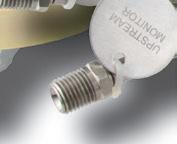







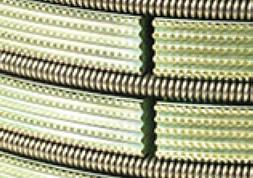

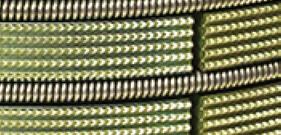



Confidently test open-end pipe, pipelines & pressure vessels without welding, and isolate & test flange-to-pipe weld connections with GripTight Test & Isolation plugs from Curtiss-Wright.




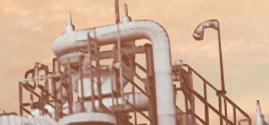

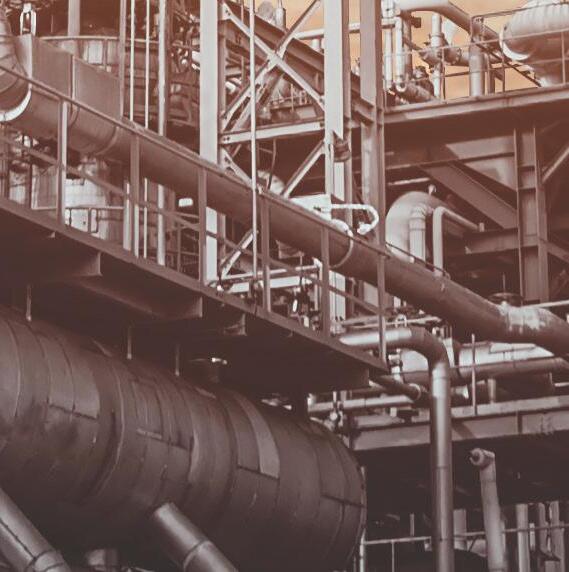

• Standard pressure ratings up to 15,000 PsiG (1034 BarG)



















• Patented gripper design for increased safety in high-pressure applications








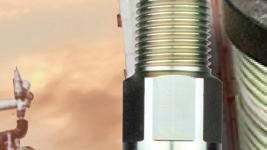



• Eliminate welding end caps for pressure testing pipe spools and piping systems













• Test flange-to-pipe welds without pressurizing entire systems






• Isolate & monitor upstream pressure and vapors during hot work



• ASME PCC-2 Type I, III & IV Testing Devices

877.503.0768 l est-sales@curtisswright.com l cw-estgroup.com/wpl-23
CONTRACT NEWS
EVENTS DIARY
2 - 5 October 2023
ADIPEC 2023
Abu Dhabi, UAE www.adipec.com
24 - 26 October 2023
OMC 2023
Ravenna, Italy www.omc.it/en
2 November 2023
3rd Global Hydrogen Conference VIRTUAL EVENT https://www.accelevents.com/e/3rdghc2023
14 - 15 November 2023
Gas, LNG & The Future of Energy Conference
London,UK
https://www.woodmac.com/events/gas-lngfuture-energy/
30 January - 3 February 2024
76th annual PLCA Convention 2024
Nassau, Bahamas
https://www.plca.org/annual-convention-events
12 - 16 February 2024

PPIM 2024
Houston, USA
https://ppimconference.com/exhibition/
13 - 15 February 2024
AMI Pipeline Coating
Vienna, Austria
https://www.ami-events.com/
3 - 7 March 2024
AMPP Annual Conference + Expo 2024
New Orleans, USA
https://www.ampp.org/
ROVOP secures new long term contract award from Energean PLC
ROVOP has secured a new five year contract with Energean PLC, the leading independent, gas-focused E&P company in the Eastern Mediterranean.
This milestone contract is ROVOP’s first dedicated field support award for an E&P company. The ROV system had been strategically placed in the region to support scopes such as this contract.
ROVOP will deploy a work class ROV onboard Energean’s owned field support vessel, the Energean Star. The Star is a newly converted platform supply vessel (PSV) designed to carry out a range of support tasks for Energean.
Following a safe and successful mobilisation in Cyprus, the vessel has transited to the strategically important Karish gas field, located approximately 75 km offshore Israel in 1750 m water depth. The ROV system and offshore team will carry out a range of tasks from general ROV support to subsea survey and intervention works to support the maintenance and further development of the field.
Mark Gilmartin, ROVOP’s Business Development Director, said: “We are
thrilled to have been awarded this contract, highlighting our capability to support our clients no matter their location, task or scopes. The award is a real milestone contract and reflects our strategic approach to breaking into the field support ROV market. It has been an outstanding start to the year for ROVOP. It is a testament to our people’s expertise and professionalism, our global reach and unrivalled capability across the complete project lifecycle that we continue to go from strength to strength.”
Lenas Mylonas, Energean Head of Subsea said: “We are delighted to be working with ROVOP on this long-term contract. ROVOP’s dedicated focus on standalone ROV services was a key reason behind our decision to award this contract. Energean expect a high quality, responsive contractor able to quickly change priorities, in a safe manner, and we believe ROVOP are the best positioned company to be able to do this and support us in our operations. We’re looking forward to a long and successful relationship with the team as we both maintain and grow the Karish Gas field.”

EnerMech and TSI form strategic joint venture to accelerate Asia Pacific growth
EnerMech has entered a strategic joint venture (JV) with PT. Titian Servis Indonesia (TSI), an integrated turn around services firm with deep local expertise in Indonesia’s oil and gas sector. This collaboration marks an important milestone in EnerMech’s expansion strategy and underscores its commitment to establishing a strong presence in the Asia Pacific market.
The two businesses have worked together on various projects since early 2022. The new entity (‘EnerMech Titian JVA’) will leverage EnerMech’s extensive global expertise across its specialist service lines, cutting-edge technology and equipment fleet, combined with TSI’s intimate understanding of the Indonesian market, its local capabilities, and industry experience.
THE MIDSTREAM UPDATE
• Dominion Energy announces agreements to sell gas distribution companies to Enbridge
• Celeros Flow Technology launches new valve packing system to reduce fugitive emissions from pipelines
• New pipeline to accelerate Scotland’s green hydrogen export potential
• Comment: MVP Southgate; the next domino to fall
• PHMSA proposes new safety requirements for gas distribution pipelines
• Report – Bridging the gap: storage and distribution in the hydrogen value chain
Follow us on LinkedIn to read news articles and more linkedin.com/showcase/worldpipelines
8 World Pipelines / OCTOBER 2023
AFRICA AND MIDDLE EAST KEYNOTE SECTION
Welcome to the Africa and Middle East keynote section, providing information about oil and gas pipeline activity in this important region. Read on for a country-by-country guide, along with insight into pipeline infrastructure, energy policy, and digital transformation.


IN EVERYTHING WE DO, WE MAINTAIN THE HIGHEST STANDARDS. OR AS WE CALL IT: THE QAPQA PROMISE.



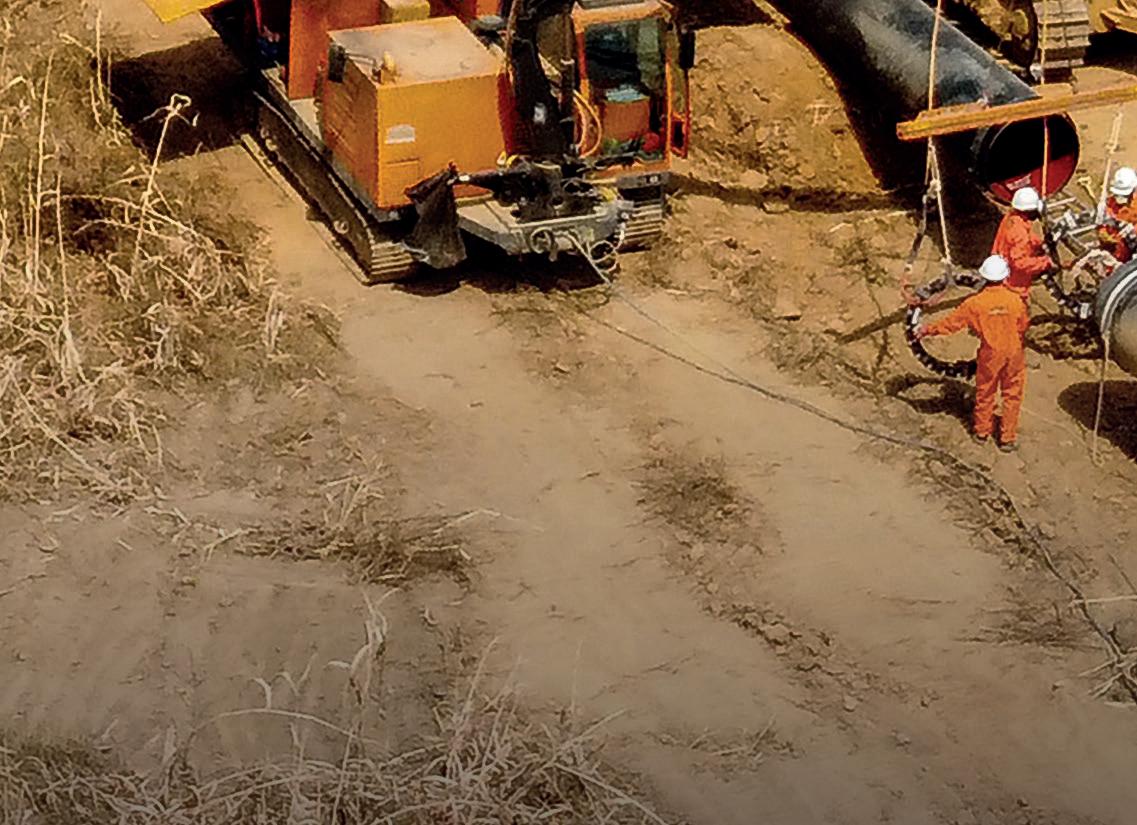
www.qapqa.com









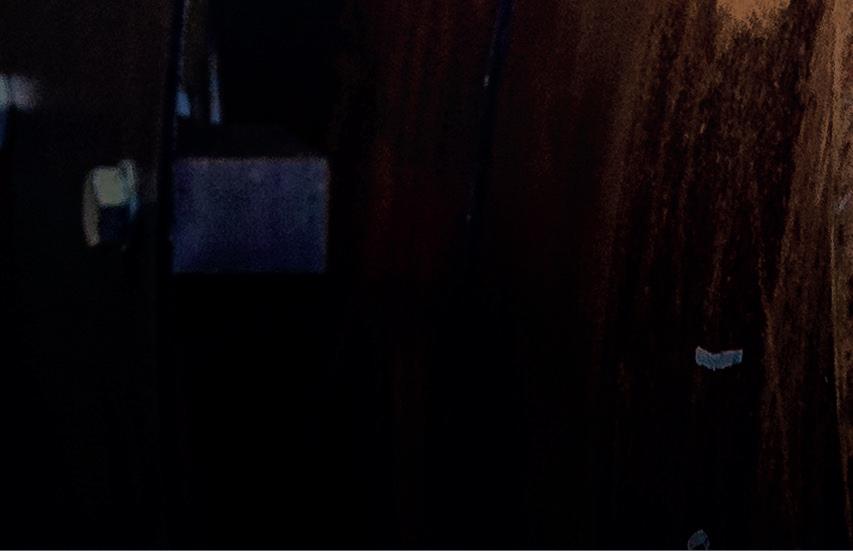







• Increase productivity • Increase quality • Lower repair rates • High level of support www.qapqa.com PWT AUTO XCS WELDING SYSTEM THE
OPERATOR’S CHOICE
Much potential, many pitfalls
Africa and the Middle East are blessed with some of the largest reserves of oil and gas in the world. They are also beset with internal strife, regional conflicts, geopolitical machinations and the fallout from the Ukraine war. The wide spectrum of challenges compels each jurisdiction to find unique solutions, many of which involve the building and expansion of midstream assets to meet domestic needs and lever export opportunities.
Middle East
Iraq
Geopolitical flare-ups are a constant source of uncertainty in Iraq. For several decades, Kurdistan has been shipping 450 000 bpd of crude through the Iraq-Turkey pipeline that runs to the port of Ceyhan, obviating the need to pass through Iraq territory. Iraq had filed a complaint with the International Chamber of Commerce, arguing that the flow through Turkey should not occur without Baghdad’s approval. In March 2023, the Chamber ruled in favour, which resulted in operators shutting down production in Kirkuk oilfields as local storage tanks reached their limits. The sudden disruption, coming on the heels of a banking crisis, temporarily roiled international
markets; although regional crude trade has since compensated for the loss, Iraq has shown little desire to reach any agreement with Kurdistan regarding resumption of exports, and the situation remains in stalemate.
High level negotiations between Jordan and Iraq continue as the latter seeks a tidewater outlet in the Red Sea for its crude production. The project involves a 1700 km pipeline that would run from Iraq’s oil producing region in Basra to the Jordanian port of Aqaba, located on the northern end of the Red Sea. The US$9 billion line would carry up to 1 million bpd; Jordan would have the right to buy 150 000 bpd as feedstock for the Jordan Petroleum Refinery Company in Zarqa.
Iran

For several decades, Iran has been seeking ways to circumvent the vulnerability of shipping energy products through the contentious Strait of Hormuz. In 2021, it commissioned the Goreh Jask crude pipeline, which runs overland for 1000 km from producing fields near Goreh to the port of Jask in the Gulf of Oman. The US$2 billion project, which took two years to complete, has a capacity of 1 million bpd.
Gas exports have proved more problematic. In 2009, Iran and Pakistan agreed to build the Iran-Pakistan (IP) pipeline
9
Contributing Editor Gordon Cope offers a comprehensive guide to the pipeline sector in Africa and the Middle East.
to service customers in the latter’s populated regions; Iran subsequently constructed the 750 million ft3/d line to the border. But Pakistan’s Inter-State Gas Systems has not built its portion, a 781 km stretch running from the border to the densely populated corridor of the Indus River valley, partly due to complications arising from US sanctions against Iran’s nuclear development program. In early 2023, Iran warned Pakistan that it could be liable for penalties amounting to as much as US18 billion for not holding up its end of the agreement. In August, 2023, Pakistan officially served Iran with a notice of ‘Force Majeure and Excusing Event’ under the Gas Sales and Purchase Agreement (GSPA), essentially cancelling the deal until US sanctions are lifted.
With the Iran-Pakistan project essentially dead in the water, plans for other new pipelines connecting the Middle East to Asia are rising to the fore. Oman is promoting a 2000 km line that would run offshore through the Arabian Sea to India. Other schemes call for Iranian gas to pass through the Oman Sea in an offshore pipeline to Oman, where it would be converted to natural gas for export to Asia.
Africa
Algeria
Algeria is Europe’s largest North African gas exporter. The country’s conventional gas reserves are approximately 140 trillion ft3. Gas production has remained steady at 9 billion ft3/d; major gas lines include the 1620 km MaghrebEurope line (from Algeria to Spain via Morocco), the 2475 km TransMed line (running from Algeria via Tunisia to Sicily and mainland Italy), and the 575 km MedGaz line from Algeria to Spain.
In light of the Ukraine war and subsequent Russian gas disruptions, Spain, France and Italy have been making strong political and business inroads to the North African country, seeking guarantees for increased supplies. In 2022, Paris and Algiers signed a declaration of renewed cooperation marking the 60th anniversary of the former French colony’s independence; one of the key goals was to augment Algerian imports by 50%. Italy’s ENI stated in late 2022 that its gas flows from Algeria are expected to double from 9 million m3/yr to 18 million by 2024. Spain’s ENAGAS is hoping to increase volumes through the Medgaz line, which has a capacity of 10 billion m3/yr.
But EU hopes for greater imports could be misplaced. Algiers’ government is facing internal pressure to force France to pay for its colonial-era misrule and to ease visa requirements; talks between France’s ENGIE and Algiers’ Sonatrach are also stalled over contract length and prices. Spain is in a dispute with Algeria over Morocco’s claims to the Western Sahara. Algeria and Morocco recently cancelled diplomatic relations; the former closed the Maghreb-Europe pipeline, cutting off supplies to both Morocco and Spain (Spain subsequently reversed flows to Morocco, further irking Algeria). Russia is also a strong military partner with Algeria, holding frequent joint military exercises and supplying arms. The former has a clear interest in limiting Algerian gas exports to Europe; Algeria can fruitfully play both sides of the fence to achieve financial, political and military goals.
Egypt
Over the last decade, exploration and drilling have uncovered vast natural gas reserves in the Levant. Egypt is home to the supergiant Zohr field, holding an estimate 30 trillion ft3 of non-associated gas. Israel lays claim to the Leviathan field (22 trillion ft3), and Tamar field (10 trillion ft3). Cyprus holds ownership of the Aphrodite field (7 trillion ft3), and the Calypso discovery region (10 trillion ft3). The Eastern Mediterranean now has the potential to produce almost 30 billion m3/yr, well in excess of regional needs.
In January, 2020, Greece, Israel and Cyprus signed the final agreement for the Eastern Mediterranean (EastMed) project, an 1800 km gas pipeline designed to connect the participating country’s gas reserves to Europe. The ROW will start in Cyprus and connect to Greece, and then to Italy, running roughly 1200 km offshore and 600 km onshore. Italy’s Edison, a subsidiary of France’s EDF and Greece’s DEPA International Projects, are promoting the project through their joint venture IGI Poseidon. The US$6.7 billion line will have a capacity of 10 billion m3/yr in the first phase, with the potential to double capacity in the second phase.
Prior to the Ukraine war, the project faced several challenges. Turkey opposed EastMed because it ignores its rights over natural resources in Cypriot territorial waters and that the cost of transport would make the gas comparatively costly to Russian sources. The subsequent scramble to wean Europe off Russian gas has given the project renewed vigour. The pipeline, which has the potential to transport hydrogen, is on the list of EU Projects of Common Interest, and the EC has announced it would be interested in partially funding the project. In March, 2023, Edison announced that it planned to make an FID by the end of 2023, with a tentative start-up date set for 2027. In the meantime, Cyprus officials expressed doubts regarding the viability of EastMed, citing the cost and challenges of laying pipe in the deep waters west of the island, preferring instead to build only the 300 km link between Israel and Cyprus, then constructing an LNG plant to deliver gas to Europe.
Nigeria
In September, 2022, Nigeria and Morocco signed a memorandum of understanding (MOU) to build the NigeriaMorocco gas pipeline (NMGP). Although the project has been touted for several years, the Ukraine war, higher gas prices (and Morocco’s desire to eliminate Algeria’s stranglehold on supplies), has given the National Nigerian Petroleum Company (NNPC) and the Moroccan Office of Hydrocarbons and Mines (ONHYM) new impetus. The 6000 km line would travel through 13 African countries and deliver up to 5 billion m3/yr of gas to Morocco, where it would hook up to the (currently) inactive Maghreb Europe line and the European gas network. The project, which would cost an estimated US$23 billion, does not have a construction or completion timetable. Algeria, in turn, is promoting a competing line, the Trans-Saharan Gas Pipeline (TSGP), that would link Nigeria to Algeria’s Mediterranean coast via the Sahara desert, and hence to Europe. The 4130 km gas line would cost an estimated US$19 billion. Critics have questioned the viability of both projects, citing the
10 World Pipelines / OCTOBER 2023







complexities of negotiating ROWs, vulnerabilities to jihadists, and financing.
The theft of crude from pipelines remains a significant problem in Nigeria. In October, 2022, Nigerian authorities uncovered a sophisticated crude pipeline network in the Niger Delta region that was being used to siphon off state crude. The 4 km line diverted oil to the Atlantic Ocean, where it was loaded onto barges and vessels. It was part of the US$3.3 billion worth of petroleum products that are stolen annually, and a contributing factor to the decrease in domestic production, from 2.5 million bpd in 2011 to approximately 1 milllion bpd in 2022.
Mozambique
Mozambique possesses significant gas reserves in its offshore waters in the Indian Ocean. In late 2022, ENI’s Coral Sul Floating LNG (FLNG) plant celebrated its first shipment. The 3.4 million tpy plant, under construction since 2019, uses 450 million ft3/d of gas derived from the ultra-deep Coral reservoir. Unfortunately, the region is located in a disputed region of the country, creating security and social problems that have complicated the development of two other projects, ExxonMobil’s Rovuma plant and TotalEnergies’ Mozambique LNG.
Angola
Angola produces approximately 1 million bpd of crude, primarily from offshore oilfields. In 2022, state-owned Sonangol revitalised a project to build a pipeline to transport fuels to land-locked Zambia. The line, which is estimated to cost US$5 billion, would stretch over 2000 km from the Angolan coast to a storage hub near the urban region of Lusaka. From there, branch lines could be extended to the seven other countries that border Zambia. The region, which traditionally relies on Middle East countries to supply its fuels, would benefit from regional proximity and commercial advantages. Angola, which currently has 60 000 bpd of refining capacity, has plans to expand output to 425 000 bpd through greenfield projects.
Angola also has 11 trillion ft3 of gas reserves, primarily associated with its oilfields. While most associated gas production is either flared or re-injected, a 500 km network of pipelines with a capacity of up to 1 billion ft3/d was built to feed gas to the 5.2 million tpy Soyo LNG terminal. Due to insufficient gas flow, the LNG plant has been operating well under capacity; in 2022, Sonongol announced that the Quiluma and Maboqueiro gas fields would be connected to the network to add up to 4 billion m3/yr of gas feed by 2026.
Uganda
Land-locked Uganda has approximately 1.4 billion bbls of recoverable oil located in the complex graben-structures that bisect the country. Several fields are now reaching production phase. Operator CNOOC expects to produce 40 000 bpd from the 560 million bbl Kingfisher oil field. TotalEnergies’ Tilenga oil field is eventually expected to add an additional 190 000 bpd.
In late 2022, Uganda and Tanzania finalised an agreement to build the East Africa Crude Oil Pipeline (EACOP). The US$4 billion line, which is being promoted by TotalEneries and partners, will run from Uganda’s Lake Albert district to the Tanzanian port at
Tanga, a distance of 1443 km. The 24 in. line, which will have an initial capacity of 216 000 bpd, will be insulated to keep the waxy crude from solidifying en route. The line can be ramped up to 246 000 bpd as production increases come on-stream.
Green hydrogen
Major consuming regions in Asia, North America and Europe have instituted regulatory initiatives to evolve their energy infrastructure away from fossil fuels to the benefit of solar, wind and green hydrogen. The latter, especially, has attracted the attention of Middle East countries, who see the switch as an opportunity to transition away from oil and gas toward renewable hydrogen.
Saudi Arabia’s ACWA Power Corporation and US-based Air Products & Chemicals are constructing a US$5 billion plant in the desert city of Neom to produce 220 000 tpy of green hydrogen through the use of solar-powered electrolysis. The output will then be converted into up to 1.2 million tpy of green ammonia by mixing the hydrogen with nitrogen. Green ammonia, which has a higher energy density than hydrogen, is much easier to transport to market. A comprehensive dedicated infrastructure will be needed to service domestic and export markets, however.
In March 2023, Dubai invited bidders to participate in the sixth phase of the Dubai Electricity and Water Authority (DEWA) Rashid Al Maktoum Solar Park. The park, which uses solar photovoltaic power to produce hydrogen, just completed its third phase, and now has the capacity of 2 GW (1GW of capacity is roughly equivalent to the production of 160 000 tpy of hydrogen). The Solar Park, which is to reach 5GW of clean energy output by 2030, is the cornerstone of the country’s strategy to provide 100% of its total power production capacity from clean energy sources by 2050.
Oman is moving aggressively to become an international leader in hydrogen production. Its national oil company, OQ, and the state hydrogen company Hydrom recently signed binding agreements for six green hydrogen projects with a total cost estimated at US$20 billion. The Sultanate’s goal is to produce 1 million tpy of hydrogen by 2030, and up to 8 million tpy by 2050.
In early 2021, Helios Industries announced plans to build a green ammonia production facility in the Khalifa Industrial Zone Abu Dhabi. The US$1 billion plant will produce 40 000 tpy of green hydrogen using an 800MW solar photovoltaic grid and electrolysis. Output will be converted into 200 000 tpy of green ammonia for export and domestic use.
The future
While Africa and the Middle East have tremendous energy potential, their future prospects are complicated by many factors, including geopolitics, corruption, financing, political will and domestic needs. Many jurisdictions are successfully navigating their countries toward success, focusing on leveraging conventional midstream assets and investing in new forms of clean energy, while others struggle with conflicting goals and impediments. For good or bad, they offer both intimidating challenges and tantalising opportunities for the midstream sector.
12 World Pipelines / OCTOBER 2023

AdvAncing pipeline infrAstructure IN AFRICA

14
The African continent is diverse with vast energy resources and diverse economies – each with their unique opportunities and challenges. While some nations are energy producers and exporters, others have to depend on imports to meet their energy needs. Export, cross country and intra country pipelines are critical infrastructure that support the transfer of energy from producers to consumers. As a global leader in automation solutions, Emerson supports pipeline operators to safeguard operations, enable efficient product transfer and support energy security across Africa.

A few of the key challenges faced by pipeline operators in Africa, where pipelines stretch across vast distances and traverse diverse landscapes, are issues around challenges to meet customer demands and maximise pipeline profitability. With ageing infrastructure and an evolving regulatory environment, maintaining the integrity of assets is becoming more difficult, and the potential consequences of pipeline failures are becoming more and more severe. Pipeline leaks can result in substantial economic losses and even pose risks to human and environmental safety.
On the project front, intra-African pipeline development relies on cooperation between multiple nations in which policy, legal and sectoral differences may cause challenges. Political will and regional regulatory alignment are essential to the realisation of Africa’s regional pipelines. The process also involves securing adequate funding, since the high costs of infrastructural developments often prevent project take-off.
To combat these challenges, Emerson offers a comprehensive suite of integrated systems designed to enhance the efficiency and reliability of pipelines. These solutions cover planning, operations, asset management, and more, ensuring optimised pipeline performance while minimising integrity concerns. From advanced leak detection to asset maintenance, Emerson provides a holistic approach for streamlined operations, from field devices to enterprise management. With these solutions, pipeline operators can achieve greater throughput and operational excellence.
15
MS Prakash, Vice President and General Manager, Africa - Emerson Automation Solutions, outlines some key challenges faced by pipeline operators in Africa.
A few ways that automation can support pipeline operators meet these goals are listed below.
Integrate operational and commercial activity to maximise pipeline throughput
Integrated solutions spanning from intelligent field devices and instrumentation to automation and control systems, operations management and enterprise management along with a range of lifecycle services options to ensure peak performance and maximum uptime.
Leak detection systems
Leak detection systems use an array of cutting-edge technologies – including ultrasonic, acoustic, and fibreoptic sensors – to promptly identify leaks in pipelines. By providing early detection, these systems play a crucial role in averting significant spills and mitigating potential environmental harm.
Corrosion protection systems
Corrosion protection systems help to prevent pipelines from corroding, which can lead to leaks and other problems. Employing an array of advanced technologies, including cathodic protection, insulation, and specialised coatings, these systems effectively mitigate the risks from corrosion and erosion of pipelines.
Pumping station, compressor stations, and block valve station controls
Pumping and block valve station controls help to ensure that pipelines are operated efficiently and safely. These advanced controls monitor the pressure, flow, and temperature of the fluid in the pipeline, and can deploy appropriate pump or compressor controls to ensure optimal operation of the pipelines.
Custody transfer metering skids: ensuring accurate transactions
Once energy resources such as crude oil or natural gas reach their destination, ensuring precise custody transfer becomes paramount. Emerson’s custody transfer metering skids offer the most advanced and accurate solutions for measuring and transferring oil or gas from one company to another. These skids ensure transparency and fairness in transactions, fostering trust between trading partners.
Emerson’s flow metering technology guarantees high accuracy, minimising discrepancies and disputes in the measurement of transferred resources. This not only bolsters the financial wellbeing of the businesses involved but also promotes a stable and reliable energy market across the continent.
Supporting Africa’s internal gas networks
Apart from inter-country pipelines, Africa’s internal gas networks play a crucial role in delivering energy to various sectors of society. LPG-powered vehicles and compressed natural gas vehicles are prevalent in many African countries, necessitating gas filling stations throughout cities. To ensure the safe and uninterrupted distribution of gas, natural gas pressure regulating skids are deployed.
Emerson’s pressure regulating skids are highly favoured by many African countries for their effectiveness and reliability. These skids protect gas distribution networks from potential spikes in pressure, minimising risks and ensuring consistent supply to end-users.
Emerson’s commitment to local partnerships
In addition to providing pipeline automation solutions, Emerson also partners with local businesses in Africa to help them develop their own automation capabilities. Embracing a strong belief in fostering sustainable growth and development in the regions it operates, Emerson actively engages with and empowers local businesses across Africa. Through knowledge transfer, skill development programs, and technology partnerships, Emerson aims to create a positive impact on African economies.
By collaborating with African enterprises, Emerson provides training and support to equip local talent with the expertise required to manage and maintain the advanced automation solutions. This not only enhances employment opportunities but also stimulates economic growth by encouraging innovation and entrepreneurship. Emerson also works with local businesses to develop customised solutions that meet the specific needs of their customers. This tailored approach further enhances the relevance and effectiveness of the automation industry in the region. The company’s solutions are helping to improve the safety, efficiency, and reliability of pipeline operations in Africa, and they are also helping to create jobs and economic opportunities in the region.
The future of pipeline infrastructure in Africa
The demand for energy in Africa is growing rapidly, and the pipeline industry is playing a key role in meeting this demand. Emerson is committed to providing the products and services that African countries need to build and maintain safe, efficient, and reliable pipeline infrastructure.
As Africa continues to evolve in its pursuit of energy security and economic prosperity, pipeline infrastructure remains a critical factor. Emerson’s automation portfolio has emerged as a key enabler, empowering the safe and efficient transportation of energy resources across diverse landscapes. Through cutting-edge leak detection systems, custody transfer metering skids, and pressure regulating solutions, Emerson has solidified its position as a reliable partner in Africa’s energy journey.
What sets Emerson apart is its dedication to empowering local businesses through knowledge transfer and technology partnerships, demonstrating a commitment to sustainable growth on the continent. The company’s solutions are helping to improve the safety, efficiency, and reliability of pipeline operations in Africa. Moreover, these advancements have contributed to the creation of job opportunities and economic development in the region. As Africa and the Middle East face unprecedented challenges and opportunities, Emerson’s role as a driving force in pipeline automation and a catalyst for socioeconomic development is poised to create a lasting impact on the region’s energy landscape.
16 World Pipelines / OCTOBER 2023
IT IS MY DEDICATED PASSION
for pipelines that compels me to partner with others in the industry, share best practices and collaborate on ideas for future innovations and advanced applications.

It is who I am. I am a pipeliner.
We are pipeliners too.
We share this passion and, like you, we are committed to keeping pipelines running safely and reliably. By providing top-of-the-line tools to address your threats, and applying the most advanced assessment techniques, we ensure you get the best return on your pipeline asset, both economically and environmentally. The world counts on you. You can count on us.



©2023 T.D. Williamson

18
Arun Behl, Head of Business Development – Middle East & Africa, and John Downer, Senior Project Manager, Penspen, UK, describe how energy producers in Africa can benefit from Europe’s shift in energy policy.
With 492 projects expected to commence operations between 2023 and 2027, to say that oil and gas producers in Africa are in for a decidedly busy time would be something of an understatement.1 Of course, the trigger for this phenomenal surge in activity is primarily down to the European Commission’s plans to end Europe’s dependence on Russian fossil fuels following the Kremlin-sanctioned invasion of the Ukraine. Positive sentiment in the energy market towards Africa succeeding is at an all-time high, but there are a number of key considerations that will need to be taken into account if the benefits to producers are to be realised.
The decision by the EU to label natural gas as a ‘transitional fuel’ en route to a zero emissions target has opened a key opportunity for African producers to take up the slack of, the now banned, Russian gas that provided around 30% of EU supplies. The European Parliament, in response to the energy crisis, also now considers new investments in gas as ‘climate friendly’ – a change of heart that is already proving an area of investment interest for European banks and other financiers. Africa currently provides around 20% of Europe’s gas imports.2 It’s a percentage that’s likely to increase considerably with natural gas
delivered directly to the EU via pipeline and LNG transported by ship from now until 2050.
Why the EU/Africa attraction is mutual
The 2050 line in the sand is the EU’s aim to be the world’s first climate-neutral economy, with member nations having achieved zero carbon targets by that time. Although African countries don’t have the tapped reserves or extensive infrastructure to replace Russian supplies entirely, European countries are looking to diversify their suppliers and routes to meet their existing energy needs. Africa can certainly be a part of that mix, particularly as it is home to 13% of global gas reserves, 7% of the world’s oil and has boundless green-energy potential.3
Europe’s appeal to Africa as a region to export to is its tremendous market size and the creditworthiness of consumers. The capital generated by serving the EU also goes a long way towards expanding and improving the production, processing and transport capacity of Africa’s energy producers.
The EU appetite for imports of petroleum oils from Russia has now dropped markedly from 27.6% as recently as 3Q21 to 15.1% as of 3Q22, with further falls predicted.4 Here the opportunity for Africa is to make more use of its energy reserves,

19
to earn hard currency export income to the EU and in parallel to develop energy for its own continental use – making a hugely transformative difference to the region’s economic growth and people’s lives. For an economy to develop you need energy.
European consumer and business perception that gas pipeline projects also bring key benefits to Africa, and the transited countries, by the dropping off of gas en route (to bring new energy to energy poor regions) is also a big attraction. In short, it gives rise to an element of altruism that is a happy by-product.
Key considerations – it’s all in the delivery
As you would expect, delivering oil and gas resources from African producers to Europe involves several key considerations to ensure smooth and efficient operations. Encompassing various aspects of the supply chain, logistics, regulations, and geopolitical dynamics, some of the essential factors to be taken into account include:
Infrastructure and transportation
Establishing robust and reliable infrastructure is crucial. This includes pipelines, ports, terminals, and storage facilities to transport oil and gas from production sites to European markets. Also, incorporating a degree of future proofing within the design of new systems so that they can transition to products such as hydrogen will ensure alignment with future EU energy demands and prolong asset life and usefulness.
Political and regulatory stability
Nigeria has the tenth largest gas reserves in the world. However, the gas is dispersed in various fields – many of which are offshore – and a network to collect and treat the gas in sufficient quantities for all the various projects has yet to be developed. Although stalled for 17 years since it was initiated in 2005, Nigeria’s Brass LNG Project presents the perfect opportunity for Africa to interact with the world LNG market if it can overcome the pre-FID hurdles that have affected its completion. The post Ukraine situation is again reviving interest in the project, whetted by the estimated US$400 million gas sales each week to the EU that could have occurred since 2022.6 Also stemming from Nigeria, the West African Gas Pipeline (WAGP) was commissioned in 2006 and was the first regional natural gas transmission system in sub-Saharan Africa.
With regard to areas attracting potential finance injections, Energy Capital & Power, the Africa-focused energy investment platform, identified the top 10 African countries with the largest natural gas reserves in 2021 as: Nigeria (206.53 trillion ft3), Algeria (159.1 trillion ft3), Senegal (120 trillion ft3), Mozambique (100 trillion ft3), Egypt (77.2 trillion ft3), Tanzania (57.54 trillion ft3), Libya (53.1 trillion ft3), Angola (13.5 trillion ft3), Congo (10.1 trillion ft3), and Equatorial Guinea (5 trillion ft3).7
All eyes are on the Nigeria-Morocco prize August 2021 saw the announcement from Nigeria’s Petroleum Minister, Timipre Sylva, that the government of Nigeria would look at supplying Europe with natural gas via the NigeriaMorocco Gas Pipeline (NMGP).
A key issue for any energy supply is the security
and
reliability of that supply. African pipelines, particularly in the Niger delta, have made headlines from attacks and supply interruptions which, if they occurred to a contracted EU supply, would evoke deep questions over the continued reliance on such a supply with possible contractual penalties applied.
Investment and financing
Development finance institutions and multilateral development banks have long been the go-to sources for investment in all types of energy projects throughout Africa. A growing network of African-based lenders has emerged to take advantage of the boom. Blended finance initiatives, specialist funds and other innovative international lending mechanisms are providing private investors with a more secure platform, shored up by attractive rates for financing and guarantees from DFIs and MDBs. For the European market though, price competitiveness and end-to-end contractual agreements are the certainties that backers look to have locked in place from the outset to ensure maximum return on investment.
Some regional cases in point
Keeping the key considerations listed above in mind, let’s take a look at some of the major players in African country terms. Algeria is one of the region’s largest natural gas exporters and its gas connectivity infrastructure with Europe is well developed. On the good news front, April 2022 saw Italy strike up a new gas supply agreement with Algeria that would increase its gas imports by close to 40%.5 This was a major move for Italy as it sought to cut ties with Russian supplies.
A 5660 km long regional onshore and offshore gas pipeline, starting from Nigeria and ending at the Moroccan port of Tangiers on the Strait of Gibraltar, the NMGP is planned to deliver natural gas to 13 countries in the West and North Africa as a continuation of the existing WAGP pipeline and will be extended to Europe through Spain.8 To be completed in phases over a 25 year period, the completion date is expected to be in 2046 at a cost that was estimated pre-COVID-19 to be US$25 billion.9
A remarkable feat of engineering, the NMGP promises to be a life-changing achievement for all of the countries it serves, and a triumph of cooperation.
The value of knowhow shared
It’s important to acknowledge that Africa isn’t going it alone when it comes to developing and optimising the energy infrastructure required to improve access to its resources for the benefit of communities, economies and export. Penspen has been a leading, independent provider of engineering (FEED, feasibility study, detailed engineering), project management services (PMS) and asset integrity services to the oil and gas industry for over 70 years. The company’s influence extends across major cross-country pipeline projects in Europe, the Middle East, Africa, the Americas, and the Asia Pacific region.
The experience and expertise of western companies is evident in the large-scale compressor technology needed for the systems being developed. Project governance, asset integrity and management, and feasibility and engineering studies are typically the purview of western companies too, while Asian contractors – including Indian and Chinese contractors – are most heavily
20 World Pipelines / OCTOBER 2023
Wax-Tape® #2
Self-Firming Anticorrosion Wrap:
A unique, microcrystalline-wax-saturated wrap that slowly firms up to provide excellent above and belowground protection. Comes in a variety of colors and usually requires no outerwrap.
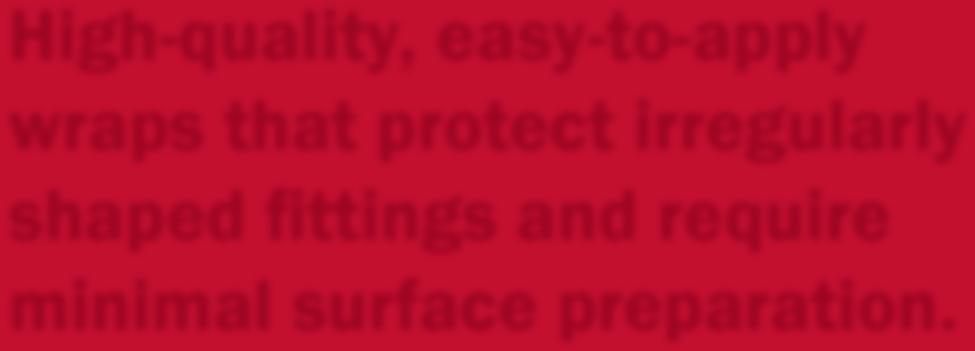

Temcoat™ 3000 Primer




Temcoat™ 3000 is a high-temperature microcrystalline waxbased coating compound that will not melt and can be applied at ambient temperatures up to 110°C (230°F).


Wax-Tape® HT-3000
High-Temperature Anticorrosion Wrap:


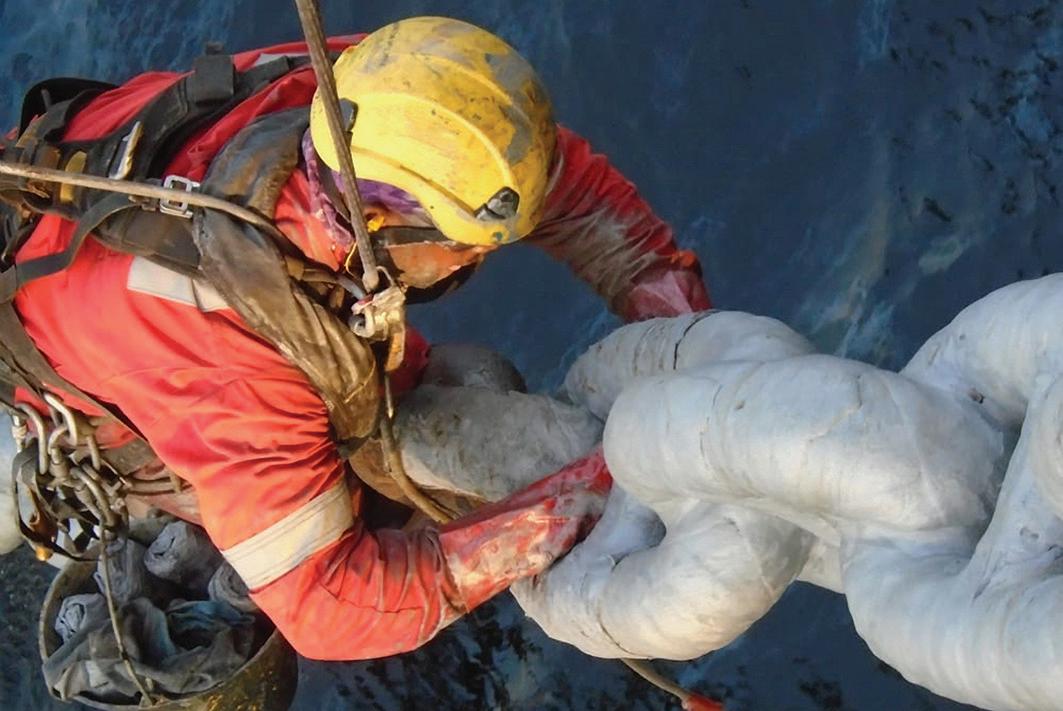
Designed for operating temperatures up to 110°C (230°F), Wax-Tape® HT-3000 wrap can be used on high-temperature oil and gas piping, on compressor station discharge piping, beneath thermal insulation and in high ambient temperature conditions.

High-quality, easy-to-apply wraps that protect irregularly shaped fittings and require minimal surface preparation.
Only Trenton offers Wax-Tape® brand anticorrosion wrap systems, with primers, wraps and outerwraps.
Wax-Tape® #2 wrap was applied to large mooring chains on a platform off the west coast of Africa.
A customer in the Middle East chose Temcoat™ 3000 primer and Wax-Tape® HT-3000 wrap to apply to a 30” pipeline before insulation was applied.
involved when it comes to construction. Together, the skills and insight of businesses from many nations are bringing projects of a massive scale to fruition in Africa.
The future looks bright, and renewable…
If you take ‘beneficial, affordable and reliable’ as the hallmarks of success for African oil and gas producers to aspire to over the years to 2030, then the not-too-distant future will be in great shape as well given North Africa’s enormous renewable energy potential. Solar and wind power are the obvious winners, especially with regard to exporting the surplus to Europe. But it is the production of green hydrogen that is most likely to prove vital to the EU and its goals to decarbonise industrial sectors across the board.
The opportunity to construct pipelines today that can be adapted to transport green hydrogen 20 to 30 years from now when the market for oil and gas has diminished should be incorporated into current project thinking. Far from a pipe dream, the ideal scenario would be to have future proofing designed and built in. The presence of critical raw materials essential to the energy transition, and an up-and-coming young, welleducated workforce in North Africa that could help take R&D and manufacturing technology to the next level, also bodes well for the future.
The European Commission’s Green Deal of 2019 views tackling climate and environmental-related challenges as ‘this generation’s defining task’.10 The EU and its member states can leverage the sentiment of the deal’s energy transformation
Connecting pipelines to populations
strategy to stimulate investment in Africa in support of clean energy.

The EU’s pledge to give Nigeria US$1.4 billion (€1.3 billion) in climate funding to support 60 projects focused on agriculture, climate and digital technology through to 2027, also speaks to the aspect of altruism we mentioned earlier in this piece.11 It’s not just about the energy crisis in Europe, it’s about improving the fortunes and wellbeing of the people of Africa on the road to achieving economic growth through low carbon, resource efficient and climate resilient development.
For European energy consumers this is Africa’s time to shine.
References
1. “Africa Oil and Gas Project Market Overview”, GlobalData, April 2023.
2. “Europe’s energy switch may boost African producers”, GIS Reports, January 2023.
3. “Why Africa is poised to become a big player in energy markets”, The Economist, July 2023.
4. Europe’s ‘energy war’ in data: How have EU imports changed since Russia’s invasion of Ukraine? euronews.green February 2023
5. “Ukraine crisis: Can Africa replace Russian gas supplies to Europe?”, BBC,May 2022.
6. “Nigeria misses millions of dollars on failed Brass, Olokola LNG projects”, BusinessDay, November 2022
7. “Top 10 African countries sitting on the most natural gas”, Energy Capital & Power, July 2021.
8. “A timeline of the Nigeria-Morocco Gas Pipeline Project”, Further Africa, August 2021.
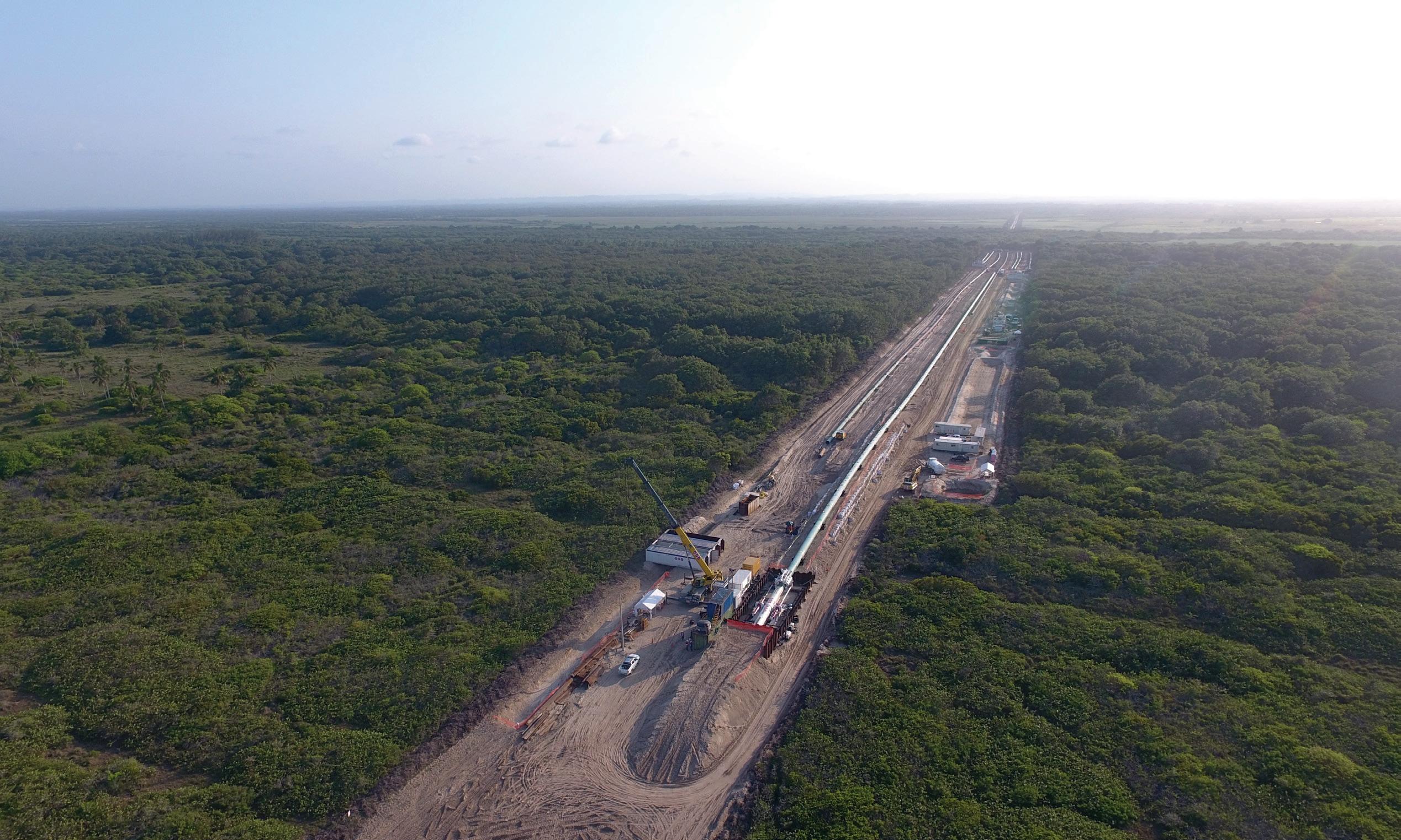
9. “Unlocking Africa’s gas riches: Nigeria-Morocco gas pipeline”, Further Africa, July 2022.
10. “Communication from the Commission – The European Green Deal”, EUR-Lex, December 2019.
11. “EU pledges US$1.4billion in climate funding to Nigeria”, Further Africa, July 2022.
in remote locations Visit www.iploca.com to find out more
Conquering digital distrust in Nigeria
Adeshina Adebusuyi, Regional Business Development at James Fisher AIS, provides a blueprint for overcoming the gaps in Nigeria’s oil and gas digital transformation journey.

Digital transformation in Africa is advancing in leaps and bounds, with Nigeria leading the charge as home to the highest number of technology hubs in the whole continent. This advancement, coupled with global initiatives such as the Biden Administration’s ‘Digital Transformation with Africa’, will see the continent’s digital infrastructure grow significantly.
Despite this technology spike, Nigeria’s energy industry is lagging behind its global peers, putting its big ambition –to be a gas-powered economy by 2030 – at risk.
23
Is Nigeria’s decade of gas in jeopardy?
Nigeria is on the cusp of a big oil and gas infrastructure boom, which could see the country finally unlock the economic prosperity residing in its abundant natural resources. This could lift millions out of energy poverty by augmenting domestic supply as well as boosting exports.
Historically, Nigeria has been severely hampered by a lack of oil and gas infrastructure, however progress is finally being made as a result of President Buhari’s ‘Decade of Gas Initiative’, alongside the long-awaited reforms delivered through the Petroleum Industry Act (PIA).
Although the pace has been slow, there are large infrastructure projects happening, such as the Dangote Refinery, the 614 km long AKK natural gas pipeline, and several LNG plants that are anticipated to be commissioned over the coming months and years. In addition to this, the state-owned refineries in Port Harcourt, Warri, and Kaduna are also being rehabilitated, which will be another boost to the Nigerian economy.
Despite the planned projects, Nigeria’s chequered history with the use of digital technology within the oil and gas industry is in danger of jeopardising this potential success story, with many companies becoming disillusioned by digital transformation.
The pitfall of digital distrust
impact, whether on production, maintenance, resourcing, construction etc. For some workers in the industry, this has created an element of doublethink: many have ambitions to mirror their global peers when it comes to digital innovation but are hesitant to do so based on their past experiences.
While industry leaders elsewhere are benefiting from the latest innovations in digital twins, data analytics and preventive and predictive maintenance, many Nigerian workers are still struggling to piece together their maintenance schedules from incomplete plant plans and records kept in Excel. Employees waste a lot of their time looking for data that has been siloed into several systems and documents or, worse, has not been captured at all, residing solely in colleagues’ memories.
Diverless Systems working off DP vessels
This frustration is only amplified when, year on year, they attend the same industry conferences but are left out of conversations for being no further along in digitally transforming their Nigerian operations. This deflated feeling is particularly acute for the globally mobile portion of the workforce who have benefitted from digital transformation first-hand in the United States, Middle East and Europe, and previously gained satisfaction from using digital tools to amplify their decision making.
Land make-up andBottom TowInstallation
Most oil and gas decision makers will have at least one story to tell of how they were sold a vision of digital transformation, only to be left with an inferior product and no support to assist with implementation. These purchases not only failed to contribute any productivity or financial improvements; but in many cases, did not solve the issues that they were bought to resolve. It’s become an all-too-common pitfall, engineered by unscrupulous salesmen that are only in it for the win.
Understandably, this has led to distrust and hesitance in adopting new innovations that would have a positive
Overcoming digital disillusionment
Trench
Without digital transformation, Nigeria will continue to trail its global peers. Although domestic supply and exports will rise, economic prosperity would not be unlocked to the fullest potential. To mend the rift created by digital disillusionment, a new approach to digital transformation is needed.
Collaborative partnerships with an innovative ethos offer a compelling alternative to previous digital transformation attempts. Built on mutual trust and understanding, they can wash away the hesitance and disenchantment of the past, revealing the almost limitless opportunity of a digital future.
Cable TrenchingSled
James Fisher AIS’s rollout of its R2S digital twin technology is one example of how Nigeria is benefitting from a different approach.
Digital twins are commonly used in upstream and downstream projects, but they can also be used to simulate and manage midstream operations. From transportation to storage, there is huge value in having ‘eyes’ on these facilities, particularly when they are prone to safety risks, ranging from aging pipelines to corrosion or cracks in tanks.
There is even the risk of attacks on pipelines, particularly as large stretches of pipeline can be found in more remote areas. However, technologies, such as digital twins

OESPtyLtd Lincoln Consulting
Figure 1. James Fisher AIS’ R2S digital twin software.
Floatation
Shore Crossing Cofferdam Diverless Systems working Diverless Systems working Diverless Systems working off DP Diverless Systems working off DP vessels
24 World Pipelines / OCTOBER 2023
Above and below - Indonesian Buaya Besar Barge 1.2 m to 20 m depth.

Brasil Post Trenching Rough Shore Approach (Lead Keel Machine)
Above and below—Ultra shallowwater system 0.6 m to 3 m depth.
Typical Deck Layout On DP Vessel for Deep Water Trenching 80 to 400 meters
Post Trenching in rough swells off Brazil. Cutter Suction
TRENCHINGCAPABILITES
Above and below - Indonesian Buaya Besar Barge 1.2 m to 20 m depth. Above and below—Ultra shallowwater system 0.6 m to 3 m depth.
OES INTERNATIONALLOCATIONS


Above and below - Indonesian Buaya Besar Above and below—Ultra shal system 0.6 m to 3 m depth.
Above and below - Indonesian Buaya Besar Above and below—Ultra shal system 0.6 m to 3 mdepth.
First Trenching by Dynamic Positioned Vessel 1992 New Zealand
• Trenching in largest Seas 28 ft 1992 New Zealand


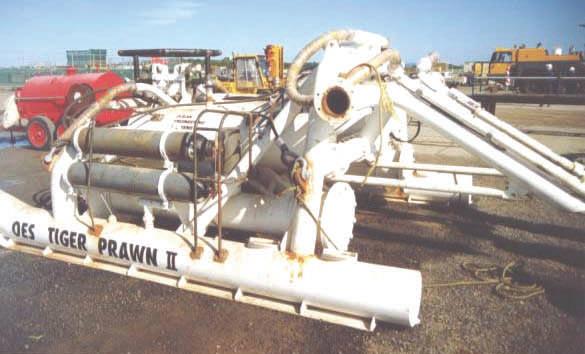
• Trenching Hardest Soils with proprietary high pressure system 150 kpa shear strength Thailand 1993
First and only Post Rock Trencher ‘Tiger Shark’ 1994 to 2008
•
• Trenching Deepest Pipelines 400 meters 1999 Bass Strait
Trenching Deepest trench 7 meters 2000 Indonesia
• Trenching in strongest water current 11 knots China 2004
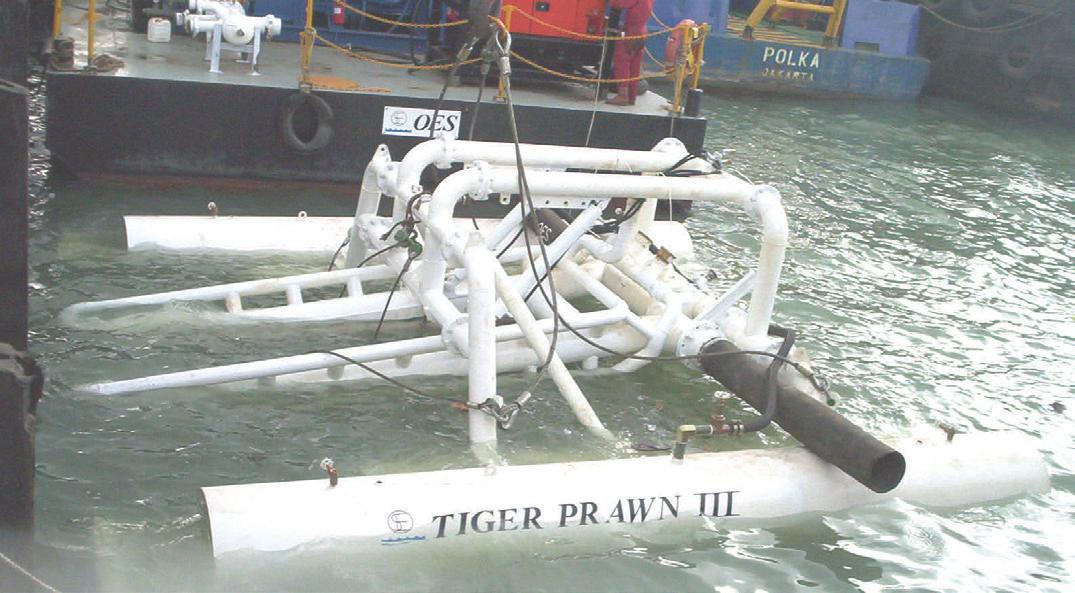
Busan, Korea
Trenching Stress Relieving of Directional drilled pipelines by others Australia 2004
• Trenching Live Gas Pipelines Indonesia 2006

Singapore
•
• Trenching roughest shore approach with pumps on beach Ghana, Africa 2018
Rio
. •
• •
Balikpapan, Indonesia
Also laid 7 kilometers of 150 NS 110,000 Volt cables including directional drilling shore approach through rock cliffs
Salvaged six projects where pre dredging, directional drilling and jet sleds failed
• •
Melbourne, Australia Corporate Headquarters
Equipment Includes: 45 20 ft sea freight containers with 8 x 1600 hp 350 psi pumps, 2 x 1000 psi booster pumps, 3 hydraulic hose reels with 90 to 120 meters of 4 x 4 inch hose, interconnecting piping and suction strainers, 6 x subsea pipeline lead k eel type jet machines for 6 inch to 52 inch pipelines, 1 Tiger Shark cuts 600 mm deep trench per pass x 1200 mm wide in 30 mpa ucs rock, 2 cable trenchers that simultaneously backfill to 1.5/3 meters cover. An eight point mooring system 20 tonne, 20 tonne heave compensator, 3 Hydraulic power packs including 1 300 HP for tiger Shark, 1 Tiger Shark Hose reel with 2 x 500 meters of 5000 psi hydraulic hose and a 10 tonne clump weight and deployment system. A 10 tonne hydraulic cable tensioner.
Company Value 1995 to 2014 $100 million. Sell now $5 million or best offer. Ask for photos, specs, container lists and completed project references.
1 305 304 6452 www.oes.net.au lincolnoes@aol.com
De
Largo, USA
Janeiro, Brazil Key
Seychelles Islands INTERNATIONAL OIL, GAS AND POWER EPC CONTRACTOR
working off DP vessels
Diverless Systems
working off DP vessels
Post Trenching in rough swells off Brazil. Cutter Suction
DP vessels
Cutter Suction Dredge
vessels
Post Trenching in rough swells off Brazil.
Above and below - Indonesian Buaya Besar Above and below—Ultra shallowwater system 0.6 m to 3 m depth.
OES World Leader in Subsea Pipeline Trenching Is For Sale (all assets tangible and proprietary intangible) Track Record since 1992 includes the successful trenching of over 250 pipelines and cables including the following world’s firsts:
• Largest Pipeline 54 inch 1995 India
World’s deepest water post trencher sled 1200 ft
Typical Dynamic Positioned Vessel during Trenching (Lead Keel Machine)
Inter Tidal trenching in mud flats 1.2 m to 20 meters (Lead Keel Machine)
Floating Jet Sled across mud flats too shallow for barge
can help to identify these attacks in real-time, helping operators and first responders react quickly.
In addition to these physical safety risks, there are also virtual risks in the realm of data security. With some midstream operations still reliant on manual plans, digitising asset information management could be a game changer for pipeline operations. Mitigating any potential damage to real-world files and plans and improving data security is one way to ensure a smooth and efficient running of operations, which doesn’t rely on systems prone to error such as filing cabinets and ad-hoc management.
The midstream sector had a sharp uptick over the course of 2022, particularly in Nigeria. And whilst something similar has been seen in the technology sector, implementation has lagged because of digital distrust. However, using digital technologies to our advantage means that digital twins can
help pipeline managers and operators get a head start in their journey towards safety and security.


Partners in innovation
The key to putting theory into action has been to take a consultative-style process that puts the emphasis on solving the company’s problems even where there are no clear solutions – this is how innovation happens. It requires a culture shift away from the traditional business model that relies on quickfire sales of point solutions. Instead, the focus is on establishing long-term partnerships with oil and gas companies to jointly solve their complex issues through consultative engagements; often encompassing design thinking methodologies and data science techniques.
With the investment almost equal for both partners, Nigerian oil and gas companies can have renewed confidence in adopting emerging technologies such as data analytics, digital twin and predictive maintenance. A consultative approach also lends itself to being scalable and adaptable. Those hesitant to give digital transformation another try can start with a small amount of change – and then scale that change up on the back of success.
V
n U p t o 1 6 h o u r s o f b a t t e r y l i f e p o w e r f u l L i - i o n b a t t e r i e s f i t n e a t l y w i t h i n t h e c o m p a c t w a n d h a n d l e e l i m i n a t i n g t h e n e e d f o r a s e p a r a t e b a t t e r y b o x
n B u i l t - i n C e r t i f i e d Vo l t m e t e r a n d Vo l t a g e C a l c u l a t o r f e a t u r e
n I n d u s t r y s t a n d a r d c o n n e c t o r s a n d a d a p t o r s p r o v i d e c o m p a t i b i l i t y w i t h n e a r l y a l l e x i s t i n g e l e c t r o d e s High voltage Holiday Detector
For those companies that have taken the leap towards adopting digital twins, they now have the capability to present 2D data, visual data, and real-time data in a real-world context allowing teams from various departments to plan better and swiftly make important operational decisions. Data that was once siloed, outdated and disconnected has become useful, robust and accurate, providing visibility to the remotest of assets through a visually immersive information experience.
The final piece of the puzzle is to create opportunities for knowledge transfer so that Africa’s oil and gas industry can confidently champion its digital transformation journey on its own terms. To make this vision a reality, James Fisher AIS is delivering a training school in Angola that equips new industry recruits with the digital skills needed to overcome Nigeria’s digital transformation gaps to operate oil and gas assets efficiently. It also opened headquarters in Lagos, expanding the team in Nigeria to give companies direct access to digital transformation experts that are attuned to the region’s specific needs and understand its digital heritage.
Overcoming the gaps in digital transformation through collaborative partnerships will be paramount if Nigeria is to fully benefit from the forthcoming boom in oil and gas infrastructure and be considered as an industry heavyweight on the world stage.
Detects holidays, pinholes, and other discontinuities using continuous DC NEW High voltage Holiday Detector D e Fe l s k o C o r p o r a t i o n l O g d e n s b u r g , N e w Yo r k U S A Te l : + 1 - 3 1 5 - 3 9 3 - 4 4 5 0 l w w w. d e f e l s k o . c o m n L i g h t w e i g h t , o n e - p i e c e e r g o n o m i c d e s i g n p r o v i d e s c o m f o r t a b l e a l l - d a y u s e n O n e w a n d c o v e r s t h e e n t i r e v o l t a g e r a n g e f r o m 0 5 t o 3 0 k
No shoulder bag required!
with Continuous DC
Pulsed
Wand-style
Also available with
DC Stick-type with Pulsed DC
GREEN AND LEAN: DATA DRIVEN ASSET OPTIMISATION FOR TRANSMISSION PIPELINES
Rising energy prices induce increased operational costs. The energy industry faces immense pressure to lower OPEX and participate in global efforts to decarbonise.
Pipeline operations, the backbone of the global energy landscape, are no exception. With the rise of large-language models like ChatGPT, artificial intelligence (AI) is the tool on everyone’s minds. Embracing big data analytics and AI offers exciting opportunities for pipeline operators to unlock hidden insights for greater efficiency and reduced emissions.
AI relies on and benefits from large datasets for pattern recognition and predictive modelling. Pipeline operators already harvest vast amounts of data, such as flow and pressure, so they must exploit this resource. The use of big data analytics, in combination with AI algorithms, allows operators to harness the power of their available data for a more comprehensive understanding of pipeline behaviour and optimised operations.
Intelligent pipelines: a harmony of AI and human analytics
In the world of AI-driven asset optimisation, pipeline operators face a choice between three approaches: adopting classical analytical methods; pure artificial intelligence (AI) models; or a hybrid approach.

The more traditional analytical methods can be alluring thanks to their relatively straightforward implementation and predictable, deterministic outputs. They are also more reliable, especially when applied to older assets without historical data for AI training. However, these models struggle to account for the complexity and nuance of real-world situations, a weakness not shared by AI trained on real-world data. AI methods are also more flexible regarding pipeline instrumentation, allowing the integration of far more data sources. AI methods can even compensate for some lacking inputs a classical model might insist upon. AI’s ‘black box’ nature, however, typically necessitates subsequent investigation rather than immediate action and results. Despite this, AI is an obvious choice for complex analysis challenges (such as predictive maintenance). The small sacrifice to informational reliability and repeatability is tolerable given the prohibitive costs to manually evaluate assets. In many cases, a hybrid approach unites the best of both approaches.
There are many ways for operators to harness the power of AI and data analytics. One area that Klarian believes deserves particular attention is the optimisation of pipeline pumps and compressors. These unsung heroes play a pivotal role in the industry, and it is high time we explore how big data analytics can transform their efficiency and sustainability for the better.
27
Dr Liam Trimby and Robyn Eveson, Klarian Ltd, UK, investigate why operators should look to big data analytics and AI to increase efficiency and reduce energy usage regarding pump and compressor operations.
Optimising pumps and compressors: pillars of the energy industry
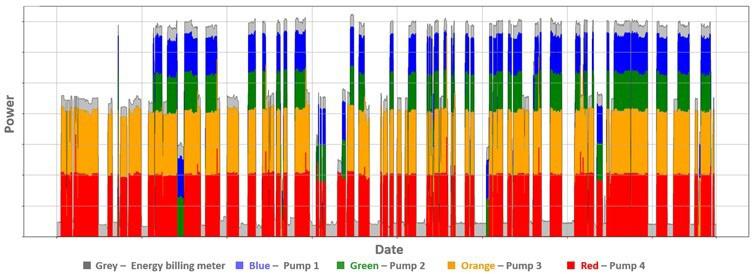
Pumps and compressors are the mechanical workhorses of pipeline infrastructure, ensuring a steady flow of hydrocarbons through the vast networks of large diameter transmission pipelines spanning the globe. The challenge operators face is that pumps and compressors, at scale, are energy intensive machines. The US Department of Energy’s Office of Industrial Technologies (OIT) reported that pumping systems account for 20 - 25% “of the energy usage in certain industrial plant operations.”1 High electricity usage generates high operating costs and carbon emissions. Over time, these increase with the everyday wear and tear of equipment, decreasing efficiency and causing unplanned downtime, further harming productivity and profitability.
We cannot overstate the importance of pumps and compressors, so optimising these assets should top the list of areas operators are looking to improve. The industry must harness new data-driven technologies to take care of and improve the use of these vital assets.
Systems-level modelling for optimisation (routes, products, VSDs and more)
The performance of pumps and compressors depends highly upon the system they are a part of. A carefully designed system with optimally sized pumps may change significantly over time due to changes in pumped products, asset degradation/renovation, expansions, closures within the network, and much more. A system with multiple routes from source to destination may also require certain compromises.
Pump and compressor optimisation is ideally performed for each experienced system curve. For complete analysis, data must be sorted based on each system curve encountered. Presently, this process involves valuable but laborious automation, necessitating semi-bespoke software to scrutinise an array of data – including flow, pressure, density, and valve status – to pinpoint these instances. Given AI’s pattern recognition abilities, it would not be a stretch to imagine AI algorithms capable of interpreting P&IDs and parsing SCADA
could be trained to identify, sort, and calculate all the system curves each asset experiences in near-real-time.
Once the operational conditions are understood, analytical means can compute various beneficial metrics. Most critical for optimisation would be the HvQ curves for each operational condition, and their associated energy-per-volume and averagethroughput statistics. Armed with this information, it becomes a classic engineering challenge to decide on optimisation techniques, such as drag reduction agents, changes to RPM profiles, or asset refurbishment/replacement. The benefits of pump optimisation are clear. If operators know the optimal route or time to pump, they can lower energy usage and reduce operating costs while maintaining throughput.
Case study
Klarian, a UK-based data company, is one company harnessing the power of AI and data analytics to optimise pump and compressor operations. Klarian has teamed up with one of the UK’s leading – and most innovative – onshore pipeline operators, British Pipeline Agency (BPA), to optimise its pumping operations. As a first step, Klarian leveraged its big data analytics capabilities to quantify BPA’s current performance. Analysis included the standard metrics such as efficiency and pressure versus flow curves, system curves, energy costs, and identifying new peak efficiency points.
While the SCADA system provided excellent data for operations, it lacked the granularity required for some of BPA’s ambitious analysis goals. Klarian meticulously added ‘virtual’ instrumentation across the network of interest, crafting a bespoke model for each new sensor (Figure 1). It enabled in-depth analysis for every pump, generating many opportunities and recommendations for further improvement. Klarian then took this a step further, mapping the pipeline network into its software platform to automate the identification of which route each pump was serving at a given moment and the associated system curves. This per-pump per-route analysis unlocked the potential to pinpoint optimal routes and schedules to maximise a variety of key performance indicators to lower energy costs for reduced OPEX. Furthermore, Klarian’s data analysis produced
28 World Pipelines / OCTOBER 2023
Figure 1. Anonymised example of an output from a virtual instrument. In this case, the power for four pumps has been calculated using the billing meter from a pumping station combined with a variety of other data sources and knowledge of the pump specifications.
a wealth of decision-ready information (Figure 2), enabling BPA to identify the best candidate pumps for refurbishment and pipe sections for drag-reducingagent.

As BPA and Klarian continue to work together, Klarian will expand their analytics platform and AI across BPA’s wider network to help guide their ongoing infrastructure investments as well as supporting their efforts to never experience unplanned downtime.
Unlocking hidden insights: AI
Beyond the evident ability to optimise operational performance with pumps and compressors, AI unlocks numerous opportunities across various domains to elevate overall operational efficiency. Some further examples include the following.

Optimisation roadmap
One task where we see AI excelling is automating the conversion of physical pipeline networks (diagrams, P&IDs, etc.) into
mathematical models and/or code. While a necessary step for more complex system-wide analysis and digital twinning, it’s a laborious, error-prone, and manual process where AI could save significant time and resource.
Virtual instrumentation
Another tangential area is the creation of so-called ‘virtual instrumentation’ (VI), in which data sources required for analysis are simulated because they are physically lacking. This is done using data from nearby/hydraulically linked sensors and a good understanding of physics/fluid dynamics. AI has already
Figure 2. Anonymised example of per-pump per-route analysis output. Shows energy cost contribution of each pump (different colours) which contributes towards serving a particular route. Routes are ordered (and labelled) by their average throughput per destination.
been demonstrated as capable of replicating and sometimes surpassing the hand-crafted VI models.
Energy forecasting
One area where AI outshines traditional methods is in predicting energy prices, a crucial component of operational costing. If a pipeline is flexible over when it moves product, then why not do so when energy is cheapest? Analytical methods to predict energy prices struggle to incorporate the huge variety of contributing factors and must often rely upon a few crude inputs. In contrast, AI can infer future prices from past trends, processing a far greater volume of data inputs (e.g. weather forecasts, commodity prices, and energy usage patterns) for more accurate forecasting. Although incredibly valuable, operators must be aware that AI models remain vulnerable to sudden, rare events like sanctions or natural disasters, which can invalidate the applicability of historical patterns.
Anomaly detection
Anomaly detection is another area where the combination of analytical and AI methods can benefit pipeline operations. Analytical methods are excellent for identifying major anomalies and serve as vital sanity checks over AI systems. However, AI really shines by learning the specific performance characteristics of each individual asset under various conditions. This enables rapid recognition of anomalies when historical trends do not continue as predicted and allows for performance forecasting and predictive maintenance. In this
way, AI enables operators to optimise maintenance schedules and maximise operational efficiency, ultimately reducing downtime and minimising costly disruptions.
Conclusions
Looking into the future, AI and big data analytics will manifest in pipeline digital twins for the energy industry. The digital twins will consist of trained AI, safe-guarded and sanity checked by analytical models. A pipeline system model will no longer be a silent participant. Instead, it will converse with operators, highlighting its needs and alerting them to upcoming maintenance requirements and potential failures. Operators could discuss objectives with it and receive precise and calculated advice on how best to achieve them. This scenario may sound far-fetched today, but the rapid pace of development in AI and data science suggests that this dream may not be far from becoming reality. Continued research, investment, and collaboration between industry stakeholders, technology providers, and policymakers will be essential in reaching this point.

For immediate impact, operators can harness the power of AI and data analytics to optimise their pumps and compressors. Technologies such as Klarian’s offer transformative solutions to drive greater efficiency and sustainability within the industry.


References
1. https://www.energy.gov/eere/amo/articles/pump-life-cycle-costs-guide-lccanalysis-pumping-systems-executive-summary
www.piggingsmarter.com TRIDENT APEX-500 The ONLY combined pig tracker and pig signaller in one unique multi-functional device Used for: • Pig Location • Pig Launch / Receipt Confirmation • Pig Passage Signalling • Confirm EM Transmitter Operation • Simultaneous Multiple Pig Tracking • Magnetic Pig Detection EM Receiver / Magnetic Pig Signaller / Bluetooth Capable / IP Rated / Android Device c/w PigView Software / Portable Carry Handle / Audible Alarm TRIDENT - The Future of Pig Tracking
Red Paley and Gary Fitch, Sulzer, look at the technology that is available to support pipeline pumping systems and keep them in optimal condition.
here are over 2 million miles (3.5 million km) of pipelines used around the world to transport fluids across vast distances and even over mountainous regions. Designing and maintaining the pumps that are integral to these systems to run at optimum efficiency keeps running costs to a minimum and can also help to improve the operator’s sustainability credentials. Pumps that operate at peak performance have improved reliability and less downtime for maintenance: the key is implementing the best design for the application.
Current projections for the next five years forecast significant pipeline extensions in Asia to meet ever-increasing demand for oil, gas and petroleum products. At the same time, further additions to the existing pipeline network are expected in North America, Africa and the Former Soviet Union to meet both export and domestic demands.
Counting the cost
At the heart of every pipeline pumping station are the pumps, which need to be expertly specified, designed and installed to ensure that operations run as efficiently as possible. For any new-build pipeline, the efficiency and energy demand of the pumps will dictate the size and cost of the electrical infrastructure that needs to be installed to support the system.
Once a pipeline has been built and commissioned, the running costs are predominantly made up of the energy bills for operating the pumps. Therefore, finding the most efficient pump design for each station is essential to minimising the costs throughout the service life of the equipment which could extend up to thirty years or longer. At the same time, the financial value of the fluids and the sheer volumes being transported, mean that any unexpected downtime can have a very significant cost in lost revenues.
More recently, the global focus on greenhouse gases has led to the implementation of carbon taxes, which also affect pipelines directly – the greater the energy usage, the higher the carbon tax. This change in policy is causing more renewable sources to be used to power pipelines where possible, making them more cost-effective both financially and ecologically.
To keep operating costs to a minimum, the pumps need to perform as close to their best efficiency point (BEP) as possible. For those running in the megawatt range, the consequences of working outside the preferred operating range (POR) can be very significant. The fluid is no longer in equilibrium and the flow becomes disturbed; prolonged operation can lead to reduced reliability and a shortened mean time between failure (MTBF).
Design from the ground up
The first step in the journey to optimum efficiency is calculating the most effective layout in terms of location for the pumping stations, and how many need to be constructed to deliver the required performance. Involving the pump designer at the earliest possible stage is important in achieving the most cost-effective solution.

31
Optimal efficiency not only delivers the lowest running costs for the operator, it also offers the lowest carbon footprint, which should be considered by all businesses today.
In an application where a 1% improvement in efficiency can save over US$1 million/yr in running costs, an optimised design is crucial to achieving the best overall solution. For this reason, bespoke pump designs should be considered for each station. The annual savings over a ‘standard’ pump far outweigh the additional investment in the optimal design and manufacturing of a custom pump.
Building to a plan
For new-build projects, understanding the energy requirement for each pumping station has a direct effect on the cost of the power infrastructure that needs to be installed. Each station is equipped with pumps of sufficient size to transport the fluids to the next station. Pump design is central to the number of pumps required as well as the total power consumption. The total number of stations, pumps in each station, and the size of the equipment all affect the overall plan. With a design life in excess of 30 years, optimising running costs should be the prime objective, and this includes taking account of future operating conditions.
For example, when designing a number of multi-stage pipeline pumps for one project, Sulzer was able to offer a set of pumps that delivered the initial flowrate and head with excellent efficiency figures. When demand from the pipeline increased, the rotating elements could be swapped for high-flow components that delivered the same head as well as 53% more flow. This could be achieved with a simple in-field swap of parts without any changes to the casing, the pump footprint, or surrounding infrastructure.
Flexible flow technology
The same can be realised for single-stage pump designs, which make up the majority of pipeline applications. Flexible flow insert technology enables pumps to be constructed for an initial flowrate operating at BEP with a high efficiency. When the pipeline application changes, the insert can be updated, along with the impeller, to a high-flow design that increases the efficiency rating of the pump operating at the high flow BEP. This forward-thinking approach to equipment design minimises the time for the changeover, enabling the pipeline to be back in production as quickly as possible. In addition, the amount of materials required is minimised, plus the energy and work needed to create a new casing is completely avoided, making it much more sustainable.
Keeping a watchful eye
Pipelines cover vast distances and different topography, which influences the location of pumping stations and the specifications of the pumps. In addition, the remote nature of these locations means that an onsite maintenance presence may not be desirable, so digital technologies are increasingly being used to remotely monitor the pumps and control their operation.
Maintenance is no longer based around certain time periods; it is determined by condition monitoring systems that maximise the intervals between servicing and highlight any issues, hopefully, before they develop into unplanned downtime. For example, using oil analysis technologies to assess the condition of the lubrication
system and reporting any anomalies allows the operator to take proactive measures and avoid unexpected downtime.
Modern condition monitoring has been taken to the next level with the introduction of advanced analytics that use AI as well as expert human input to identify bad actors, predict failures and determine the most effective course of action. Sulzer’s BLUE BOXTM solution uses existing pump data resources to identify pre-failure conditions and flag potential issues with sufficient time to act where necessary. This is supplemented by the Equipment Optimisation Specialist (EOS), an experienced pump expert who supports the operator in verifying anomalies, providing remediating options, evaluating inventories and closing knowledge gaps.
Advancing technology
Just as the expertise developed in Formula 1 has made its way to our cars on the road, so the technologies used in aviation are now being used to support pumps and other equipment. One good example is 3D printing, or additive manufacturing, which is being used to create remanufactured parts as well as new components, such as impellers, much quicker than traditional casting and machining processes.
This has significantly reduced the cost of repurposing a pipeline and changing the fluid to an alternative to satisfy market requirements. A change in fluid density needs adjustments to the hydraulic design to maintain optimum efficiency. However, the lead time for new components could be measured in months, whilst remanufacturing the original can be achieved in weeks.
Using 3D laser scanning, the existing design of a pump can be digitalised and converted to a virtual model that can be modified and refined using computational fluid dynamics. This has not only reduced the time to deliver new parts, it has made the whole process more cost-effective, making it more accessible to mainstream industries.
Unique parts, quickly
Once the model is complete, additive or hybrid manufacturing can be used to create the new parts with a minimum lead time. With so many unique pump designs in one application, using additive manufacturing to create replacement parts is a cost-effective solution.
A variety of materials are available for this purpose to ensure resistance to erosion and corrosion. For pipeline applications, typically, the majority of the sand is removed from the oil before it enters the system; impellers are therefore made from carbon or chrome steels, and there is no need for more exotic metals such as super duplex.
The abilities of 3D printing, a type of additive manufacturing, are increasing all the time; the range of materials that can be used is growing along with the complexity of the components that can be created. One of the current challenges is heat treatment, which has a significant effect on the material’s composition and physical properties, but currently, within the pipeline industry, these more advanced techniques are not required for the majority of components.
Making fast changes
Since every pump on the pipeline is almost certainly unique, any changes to the design will be bespoke to that asset, so a flexible
32 World Pipelines / OCTOBER 2023
When we built the DD600, we built it based on direct customer feedback. The reason? So you could have it all. Well, almost all. AmericanAugers.com/DD600
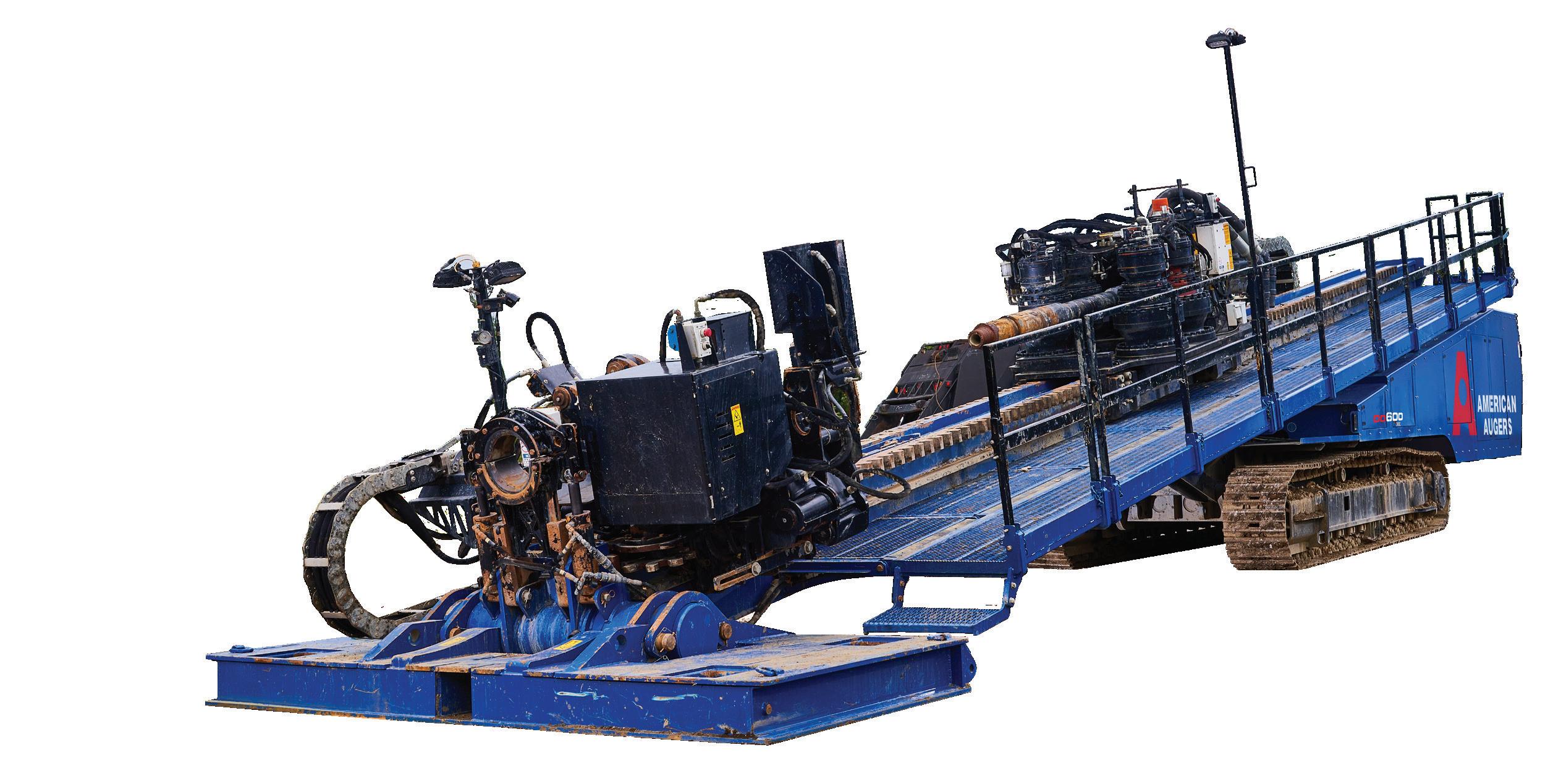
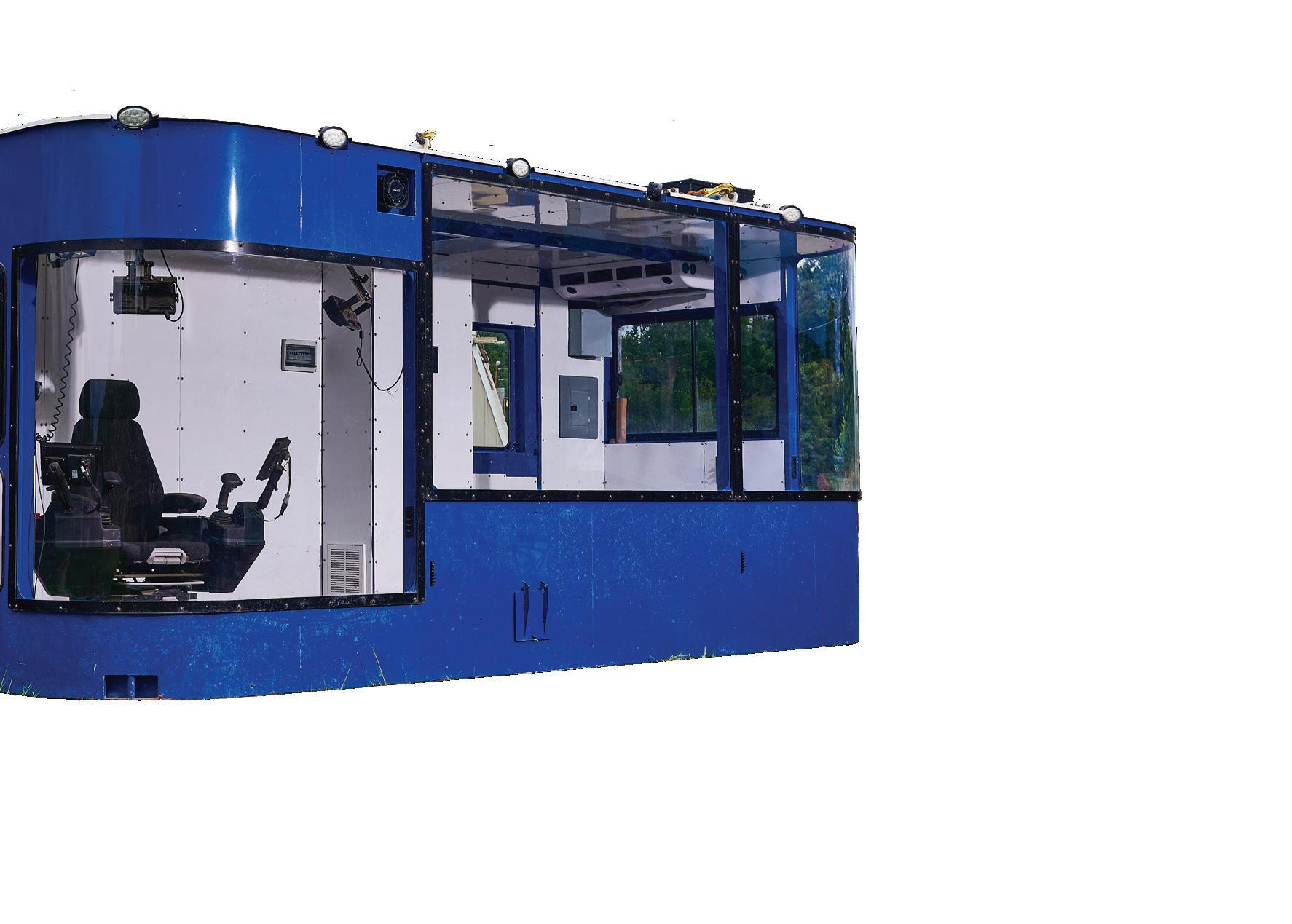






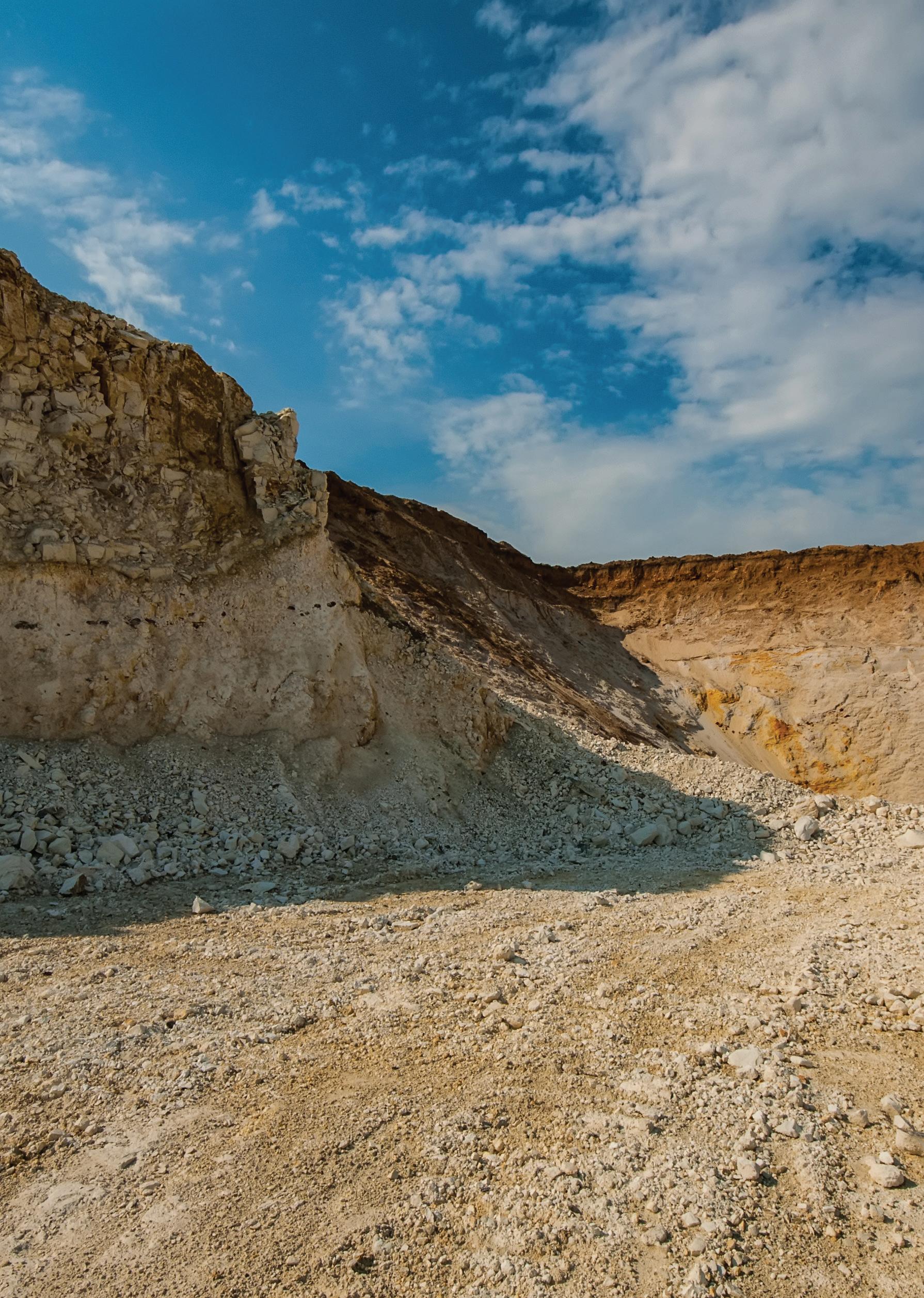
©2023 The Charles Machine Works, Inc. No DEF required. Faster Setup. New open-top wrench design. Gets the new guy to show up on time.
approach is required. Retrofits usually come about when the pumping application changes, such as when the pipeline output is altered or the fluid specifications change.
When it comes to retrofitting existing pumping stations, it is usually more cost-effective to install new hydraulic components, rather than replacing the whole pump assembly. Traditionally, pump components, especially the impellers, were cast and then machined to their final dimensions – this process can have a long lead time, especially if the revised design needs to be created from scratch.

Fortunately, cutting-edge processes, such as additive manufacturing, are becoming mainstream solutions, but they still need to be delivered by experienced suppliers that have the expertise in pump engineering. The use of 3D laser scanning now enables a component to be digitalised relatively quickly and the design can be enhanced to suit the new application before a new component is manufactured. This has led to a significant reduction in lead times, as well as costs.
Driving improvement through design

At a time when sustainability is at the forefront of all industries, the pipeline sector is being supported by pump manufacturers such as Sulzer by optimising energy efficiency and reducing running costs. This applies throughout the life of the installation, from initial manufacture, through to any upgrades in performance and routine maintenance. By working in partnership with experienced suppliers, pipeline operators can achieve optimum pump efficiency throughout the service life of their equipment, as well as enhancing business performance.
Pipelines are used across the world and, as the network continues to grow, more infrastructure will be required. To help minimise the environmental impact of these installations and the pump manufacturing process, Sulzer operates a global virtual factory that uses the facilities closest to the customer to manufacture the equipment. The design will come from any number of centres of expertise in the Sulzer network, but the pumps will be built in localised sites using the company’s high specifications.
Pushing the boundaries of what is possible to achieve better efficiency figures is becoming increasingly important. Modern design tools such as computation fluid dynamics (CFD), advanced coatings to minimise friction and wear, can all help. The most significant savings are now coming from extending reliability and minimising maintenance costs through the use of digitalisation, predictive maintenance techniques, and reducing repair costs using additive manufacturing.
Well-established pipeline installations of all kinds require skilled technicians to run and maintain them. Over time, some of the experience and knowledge that was in place originally moves to new positions and may not be replaced. It is important for operators to back-fill any lost knowledge through a programme of training and up-skilling. This is especially important when changes to the assets within the pipeline take place.
Meeting the challenges of constructing and operating pipelines requires many skills and varied expertise. Working with a partner, such as Sulzer, that has a comprehensive knowledge base and a global footprint, can help to deliver significant savings from day one.
The objective for carbon capture and sequestration is not to isolate turbomachinery component design from the thermodynamic cycle, but to design the turbomachinery as an integrated system so as to increase the efficiency of the entire process rather than just the machine. This requires customised solutions that are often not commonly available with off-the-shelf or turbomachinery products. Design challenges include:

) System performance (efficiency) and operability (variability).
) Cyclic operation.
) High pressures and temperatures.
) Hostile environment.
From a purely thermodynamic perspective, carbon dioxide (CO2) is relatively easy to compress. This means that the pressure ratio per compressor impeller stage is high, and compressors with low stage counts or speeds are required. Because of the high pressure ratio per stage, however, CO2 also has a rapid specific volume decrease with pressure and a very high heat of compression. Consequently, CO2 will heat up when compressed, which requires stage intercooling to maintain the gas temperature at reasonable levels so as to not damage the seals and bearings of the compressor. Furthermore, because of its rapid density change with pressure, there is a significant flow volume reduction that requires a wide range of aerodynamic high-to-low flow compression stages.
Since both reciprocating and screw compressors are severely flow limited, they cannot be practically
35
Klaus Brun, Brian Pettinato, Stephen Ross and Todd Omatick, Elliott Group, and Joseph Thorp, Aramco Ventures, introduce a promising technology for large-scale carbon storage compression applications.
used for large-scale industrial carbon sequestration applications. Viable technology options rely on proven centrifugal compressor or pump impellers but use different layouts and stage arrangements. Two of the most promising options for typical 30 - 2100 psia carbon storage compression applications are an intercooled centrifugal barrel compressor feeding a dense phase pump and integrally geared compressor with inter-stage cooling.
Compressor design
The target for a centrifugal compressor design is to compress the CO2 gas from near atmospheric suction pressure to above the critical point (1070 psia) and into the supercritical gas regime to about 1100 - 1150 psia. Above that pressure, the gas is in dense phase (either as a supercritical fluid or a liquid), and it is advantageous to utilise a pump for any further pressure increase to the required discharge pressure. To reduce cost, it is desirable to maintain the compression process from suction pressure to above the critical point in a single compressor casing.
A case study was devised for a CO2 compressor design for a typical carbon separation and sequestration application at a 500 MW natural gas combined cycle plant. Depending on its efficiency and loaded operational hours, this plant will produce 1 - 2 million tpy of CO2


If a pre-combustion carbon separation process is used, the CO2 would be available at approximately 30 - 60 psia, while for a flue gas clean-up, the pressures would be 15 - 35 psia. On the
discharge side, it is assumed that the CO2 will be injected into a pipeline operating at 2100 psia. Therefore, the following design conditions were selected for a hybrid CO2 compressor and pump:
) Ps = 30 psia.
) Pd = 2215 psia.
) Ts = 100˚F (37˚C).
) Q = 1 million tpy (70 lb/s or 52 million ft3/d).
) Gas = 100% of CO2
The compressor is designed for a 30 - 1150 psia pressure rise, and the downstream supercritical pump for a 1100 - 2115 psia pressure rise. A conservative 50 psia pressure drop is assumed to account for discharge cooler, pipe, and valve losses between the compressor and the pump.
Figure 1 shows a six impeller stage barrel-type centrifugal compressor layout and cross-section with multiple nozzles for intercooling or side-streams. Figure 2 shows a multi-stage horizontally split compressor with nozzles for two intercoolers driven by an electric motor through a gear-box. This is a typical design only, but it is representative for the application. Typical CO2 carbon separation operating conditions for these machines are suction pressures from <50 psia to discharge pressures of >1100 psia. At 1100 psia, the compressor discharge gas will be in the supercritical state, and after cooling, it can be fed directly into the dense phase pump for higher pressure pipeline transport or storage injection.
Supercritical pump design
Pumps for supercritical CO2 pumping for pipeline boost have been demonstrated in transport and enhanced oil recovery applications and are derived from standard products. For the required operating conditions of 1100 - 2115 psia, a 10-stage pump running at 3600 revolutions per minute (rpm), using 15 in. impellers, and requiring 1850 hp, could satisfactorily provide the service. Figure 5 shows a schematic of this supercritical CO2 pump. The efficiency of this pump is around 70%. Thus, depending on the application, total compression system efficiency is also 65 - 75%. In a non-adiabatic system, however, efficiency is of limited significance.
Performance
Polytropic and isentropic efficiencies are of limited value for processes that have intercooling or other heat losses or addition. In these cases, it is more practical to look at total power consumption for a quantitative evaluation of the effectiveness of the process. The total power demand of a CO2 compression process is strongly path dependent and can vary widely based on the number of stages of cooling and cooler performance. It is also a function
Figure 1. Multi-stage barrel centrifugal compressor design for CO2 (Source: Elliott Group).
36 World Pipelines / OCTOBER 2023
Figure 2. Centrifugal compressor with multiple intercooling nozzles (Source: Elliott Group).




ALL
L AYING - BENDING - WELDING CO2 neutral rental STAAMmoc. MAATS.com
STRENGTH, PERFORMANCE & RELIABILITY UNDER
CIRCUMSTANCES.
of the compressor and pump performance. For this case study, a total power consumption of approximately 15 000 hp was estimated with the compressor requiring about 13 000 hp and the pump about 2000 hp. The compressor speed is approximately 8500 rpm, and the pump speed is 3600 rpm. These performance numbers are a strong function of ambient cooling conditions, valve/pipe losses, gas purity, cooler design, and other system variables.
CO2 compression rotordynamic challenges
The main causes of lateral vibration are unbalance, misalignment, and instability. The primary methods for ensuring acceptable vibration are eliminating sources of excitation such as unbalance and misalignment, and desensitising the rotor to sources of excitation through proper design and rotordynamic analysis.
Rotordynamic requirements are set by API standards and include achieving separation margin from critical speeds and achieving required logarithmic decrement stability values. Separation margins from lateral natural frequencies are largely determined by rotor sizing, bearing selection and coupling selection.
Logarithmic decrement stability is similarly dependent on rotor sizing/configuration and bearing selection and support system for what is known as a basic log decrement (δb). Destabilising excitation sources, such as aerodynamic cross coupling and gas seals, act to further reduce the rotor stability. Stabilising mechanisms such as shunts, swirl breaks, damper seals, and/or squeeze film dampers (SFDs) act to improve stability. Analysing the full model, including all mechanisms influencing the rotor, will result in a final log decrement (δf).
Specifically, in the case of beam-style CO2 compressors, one or more intercoolers are often applied to improve performance. Applying one or more intercoolers to a beam-type compressor requires multiple sections, which can be easily handled using multiple compressor bodies, but at a considerable cost. A far less expensive solution is to place multiple sections in a single beam machine, but this typically requires a long bearing span resulting in high rotor flexibility, which can be a difficult problem with respect to rotordynamics, both in terms of the critical speed separation margin as well as the stability. In addition, the gas density for compressed CO2 is also high, which tends to create a higher risk with respect to rotordynamic stability.

As an example, Figure 3 shows the rotordynamic model of a beam compressor suitable for compressing CO2 up to a cavern storage pressure of roughly 1900 psia (130 bara). The compressor has two sections in a back-to-back arrangement with three stages in each section. A centre seal is used to seal the two sections from each other. The centre seal tends to have considerable influence on the rotordynamics of the machine as well as the overall performance. Centrifugal compressor rotordynamics are heavily dependent on the aerodynamic path. Most OEMs offer a series of aerodynamic stage solutions to solve problems such that the required compression can be performed in a small number of compressor bodies. In this case, the smaller bore coincides with the first section of the machine having the highest flow coefficient wheels, whereas the larger bore coincides with the second section having the lowest flow coefficient wheels. These wheels are somewhat optimised with respect to stage space to reduce the overall rotor length.
Plotting the critical speed ratio (operating speed/critical speed on stiff supports) vs the average gas density of this compressor indicates that the compressor
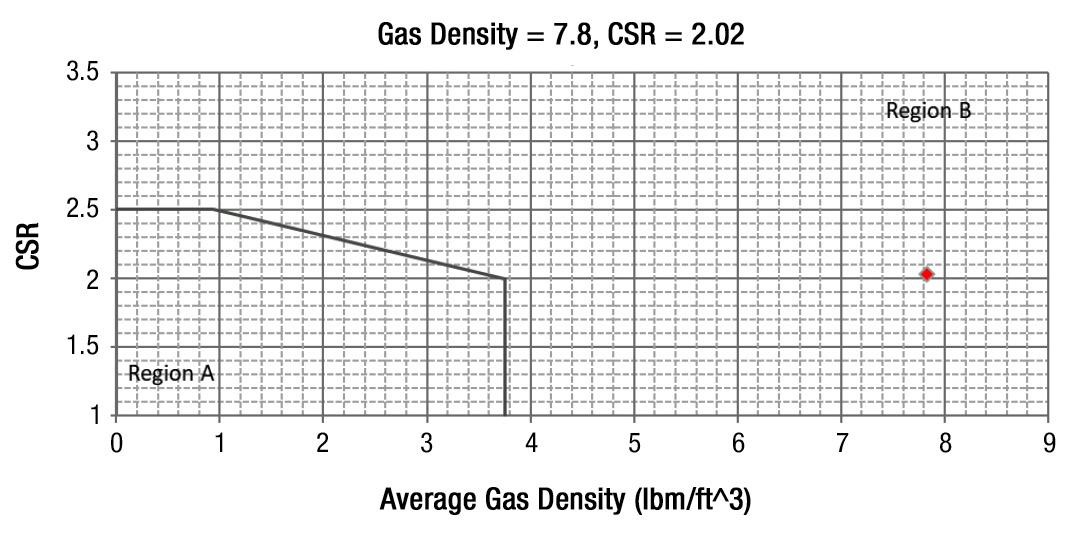
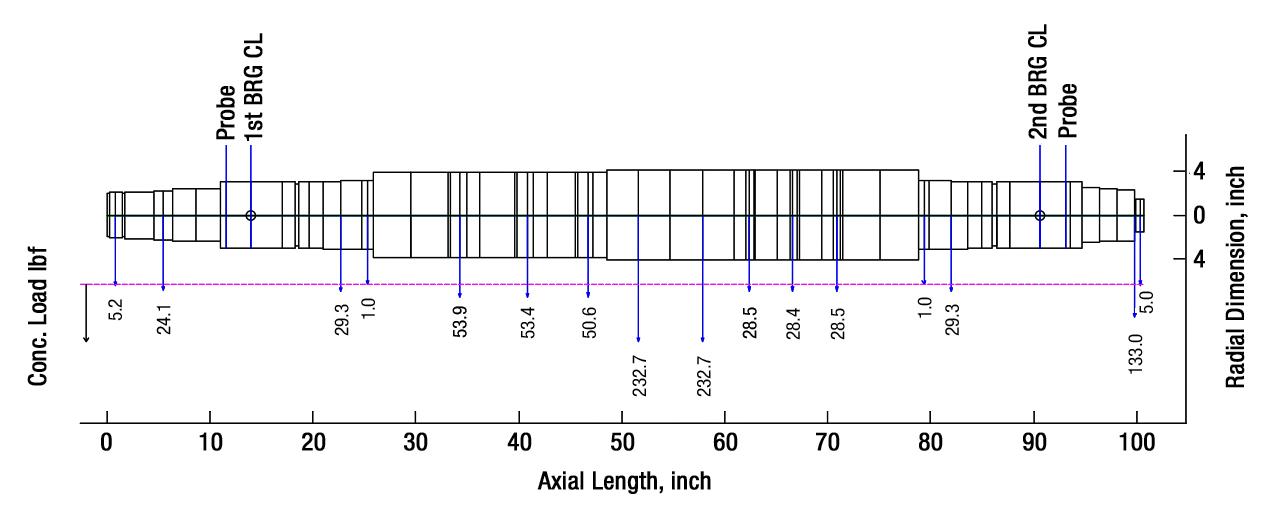 lay within API
Figure 3. Small bore CO2 compressor rotor with centre seal.
Figure 4. API stability experience plot.
lay within API
Figure 3. Small bore CO2 compressor rotor with centre seal.
Figure 4. API stability experience plot.
38 World Pipelines / OCTOBER 2023
Figure 5. 2000 hp supercritical pump CO2 with 10 stages (Source: Ebara Corporation).
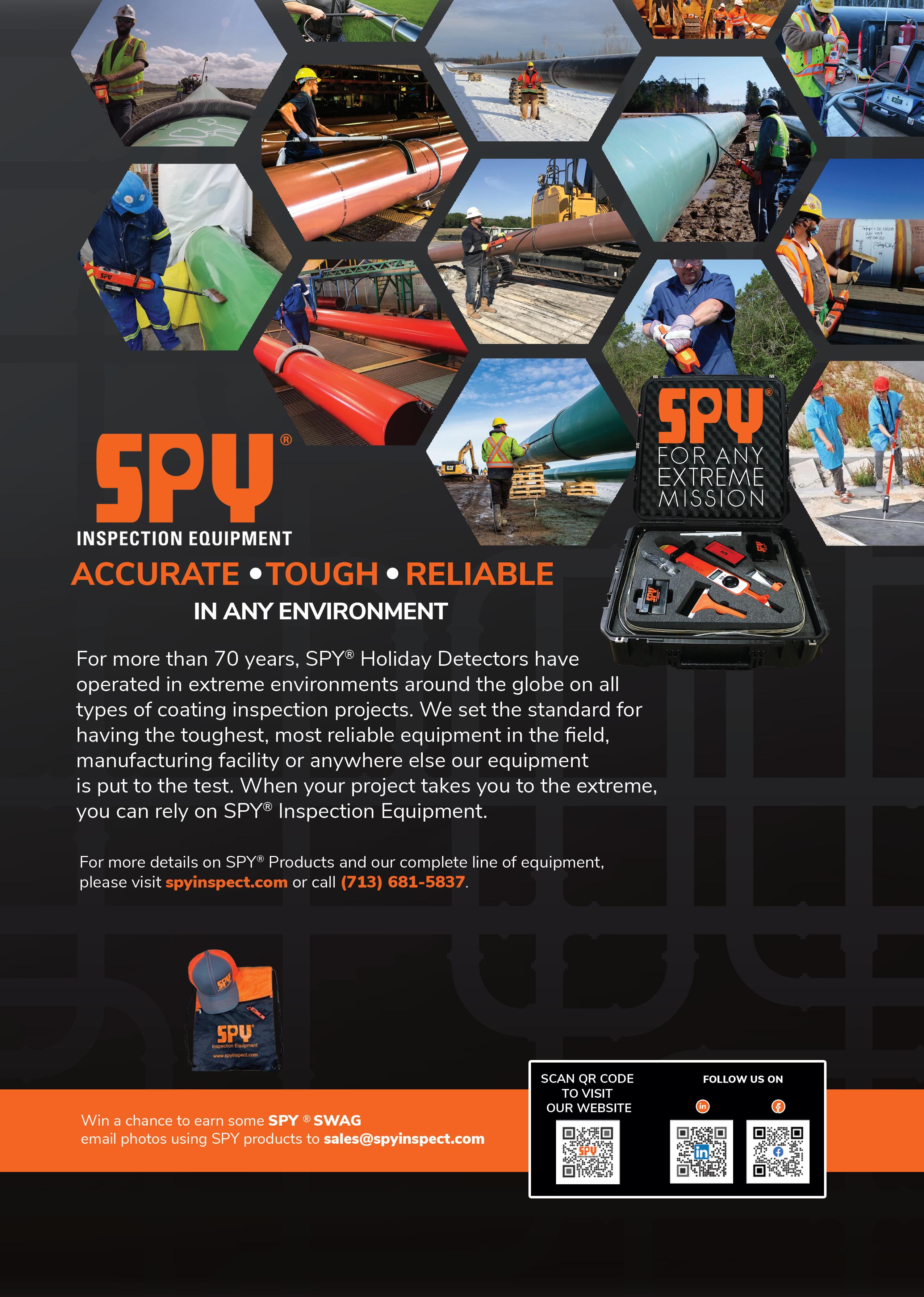
Region B of the stability experience plot (Figure 4), further indicating a rotordynamic stability challenge.
Further rotordynamic details of this selection are summarised in Table 1. As seen in the table, the final stability of this rotor is heavily dependent on the centre seal type and main shaft diameter. The standard labyrinth seal, in combination with a small bore rotor, is predicted to be unstable. The use of a hole pattern centre seal improves the rotordynamic stability considerably, achieving a final logarithmic decrement (δf) that is greater than 0.1. A large bore rotor can also provide improved
stability that also achieves an acceptable logarithmic decrement. Additional ways to reach an acceptable solution including SFD bearings, applying swirl brakes at each stage, or some combination of methods. The final selection will be a design that provides the best combination of overall performance and reduced cost.
CO2 materials issues
CO2 gas can present a corrosion risk to metallic components. When moisture is present, the CO2 reacts with water to form carbonic acid which can result in a general corrosion attack occurring at the surface of a carbon on low-alloy steel grade. ‘Sweet’ corrosion occurs when carbonic acid is formed when CO2 is contacted by water (weak acid).
This general corrosion attack creates a corrosion product which covers the entire exposed surface. Stress corrosion cracking and surface pitting are not concerns with CO2 gas unless chloride or sulphide impurities are included. While carbon steels are susceptible to a general corrosion attack, stainless steels are resistant to corrosion from CO2 and carbonic acid. This corrosion resistance applies to all forms of stainless steels including martensitic (400 series), austenitic (300 series) and duplex (200 series) grades of stainless steel.
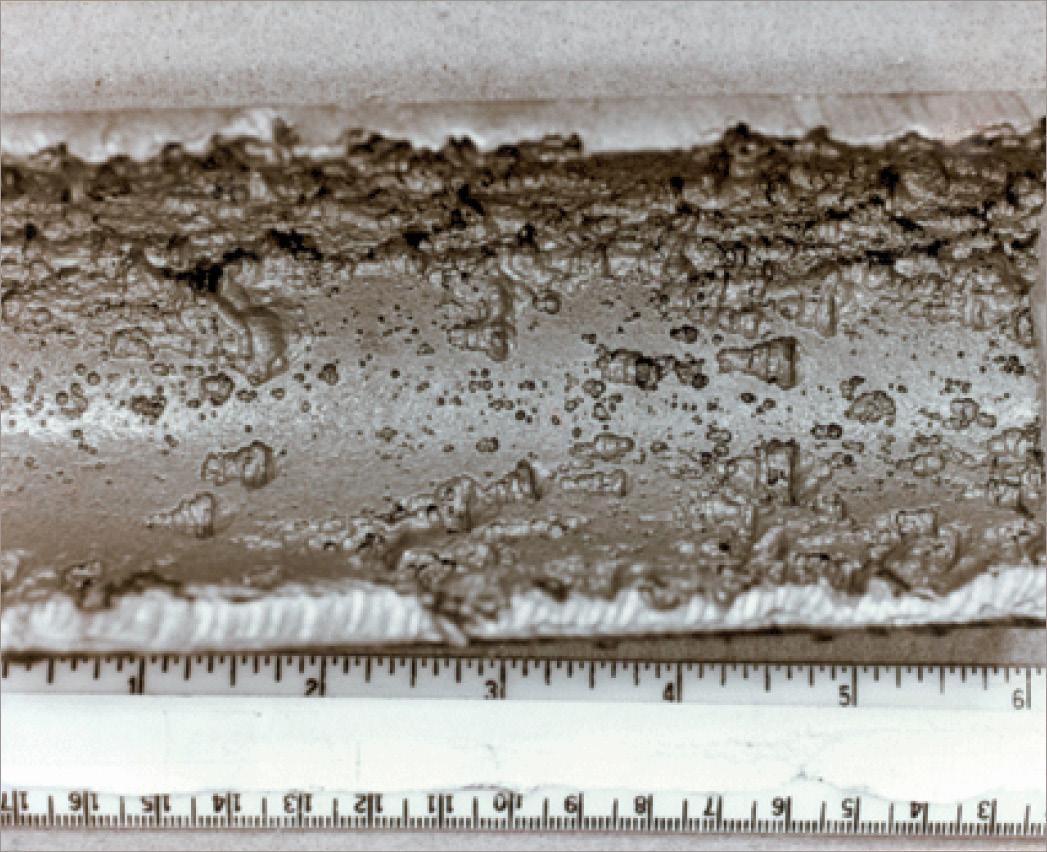
In summary, basic material concerns with CO2 compression thus are:
Base material
• Carbon steel (C-Mn) – suitable if stream is dry.
• Stainless steel – required if H2O is unavoidable.
• Application may be subjected to rapid temperature swings due to isenthalpic effect.
Elastomers are susceptible to explosive decompression
• May result in blistering or rupture (Figure 6).
Conclusion
One promising technology for large-scale carbon storage compression applications is a hybrid combination of a centrifugal compressor to compress the gas to slightly above its critical point in series with a dense phase pump to reach the desired process discharge pressure. Both low-pressure CO2 compressors and dense phase pumps are proven technologies, but their hybrid combination has not seen significant service in the industry.
A case study with representative operating conditions for a typical power plant carbon separation and sequestration application using a hybrid compressor pump package for CO2 compression was presented. Rotordynamic and material constraints, as well as machine, package design, layout options, footprint, and performance parameters, were provided.
Many other viable compression paths and technologies exist. Some of these are commercially available, while others are still in development. Regardless of the type of compressor, it is important to be aware of the compression issues and to recognise that CO2 compression has technical challenges that are often application specific and must be individually addressed for all new carbon sequestration technologies.
Small bore rotor Small bore rotor with hole pattern seal Large bore rotor Centre seal type Labyrinth Hole pattern seal Labyrinth Bearing span, L (in.) 76.6 76.6 74.1 Main diameter, D (in.) 7.7 7.7 8.8 Shaft L/D (dim) 9.9 9.9 8.5 Nma (rpm) 6481 6487 6602 Nmc (rpm) 8587 8587 8747 FCSR (rpm) 4243 4243 5910 CSR (dim) 2.02 2.02 1.48 ρ ave (lbm/ft3) 7.8 7.8 7.2 δ b 0.46 0.306 0.708 δ f -0.521 1.101 0.798
Table 1. Rotor description and rotordynamic stability
40 World Pipelines / OCTOBER 2023
Figure 6. Blistering in elastomeric materials due to rapid decompression of CO2
MAKING SUBSEA CONNECTIONS COUNT
Aiden Hardy, STATS Group, UK, writes about the role of mechanical connectors and clamps in the subsea pipeline industry.
The pipeline industry network is an essential component in the safe extraction and transportation of oil and gas resources across continents and indeed further around the world. This global network, which covers a total length that would stretch around the earth’s circumference
over 30 times, includes onshore, transcontinental and subsea pipelines. These critical pipelines ensure that reliable and sustained sources of energy are provided to businesses and consumers, supporting trade and allowing economies to grow. It is essential that these strategic pieces of critical infrastructure are protected and
remain online to ensure stability of energy provision for the billions of people which rely on them everyday.
While the majority of pipelines are located onshore there is very often a need for these pipelines to be routed through harsh subsea environments either from offshore extraction or linking continents to reach their end users. Any
41
interruption to the flow of oil and gas through the international pipeline network can have significant impact on the energy supplies for millions of people and can result in the suspension of industrial activities. It is therefore essential that in the event of an issue, repairs can be implemented quickly and safely with the best possible technology solutions to restore their operation and ultimately energy supply.
Mechanical connectors and clamps
The use of proven technologies such as mechanical connectors, couplings and repair clamps enable defects to be safely and efficiently resolved, while minimising the total downtime required for their implementation.

STATS Group has a long-established track record in delivering industry leading repair solutions to energy operators along with main EPC contractors globally, with proven dual sealing technology at the core of their product and service offering.
STATS SureConnect™ range of subsea connectors and repair clamps all feature a lock cage system which, regardless of application, includes dual compression seals and taper grip locks providing an in-situ test facility along with full structural integrity. SureConnect products are used across a variety of subsea pipeline applications such as tie-in of new lines to existing infrastructure, or capping of redundant pipelines during decommissioning, but also commonly as part of repair activities.
Connector products are available in several configurations:
) Flanged connectors for pipe to spool connection.
) Couplings for pipe to pipe connection.
) End caps for capping plain-end redundant pipework.
SureConnect products are commonly integrated as part of an emergency pipeline repair package and held in stock as contingency for quick deployment in the event of an incident.

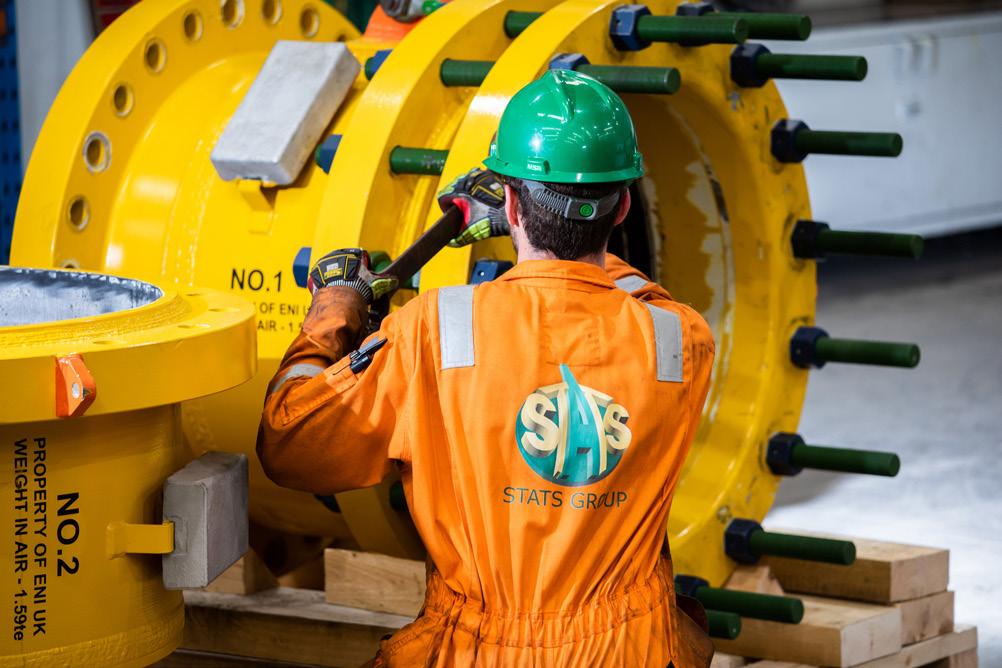
STATS connector, coupling and repair clamps are designed to be stronger than the parent pipe they are being installed onto, providing full sealing and structural integrity to the systems design pressures in a wide variety of materials. SureConnect products are considered as a permanent means of connection or repair under DNV F101 and RP 113 codes, with DNV certification available.
A key technical differentiator of STATS SureConnect range is the dual seal arrangement with compression flanges which engage independently of the taper grip locks. This configuration enables the seals to be energised and the seal annulus void (cavity between the seals) to be pressure tested to 1.1 times the maximum allowable operating pressure, even if the pipe is depressurised in the case of repair clamp installation.
This sequence of seal activation and testing ensures both seals are fully proven to above the system design pressure and that there is no single failure point which
Figure 1. SureConnect lock and dual seal arrangement.
Figure 2. 30 in. SureConnect connectors, Class 300.
42 World Pipelines / OCTOBER 2023
Figure 3. 36 in. SureConnect connector installation, offshore Nigeria.
Expect A Higher Standard

could cause a leak. In the event a successful seal leak test does not occur, then the clamp or connector can be easily removed from the pipe for inspection prior to redeployment as the lock segments have not been activated at this stage of the installation.
Once the seal testing has been completed and proven, the locks can then be independently engaged against the pipewall by energising a separate set of activation studs without disturbing the tested and verified sealing arrangement. The clamp locks provide the structural connection and comprise of pairs of lock and lock bowl segments. The lock segment includes a bore to mate with the pipe outside diameter and lock profile which engage with the pipe wall. The grip is optimised to restrain axial movement; however, the lock profile penetration has the additional benefit of resisting rotational loads.
The interface between the lock and lock bowl is one or more conical ramps, these deploy the locks by compressing the lock bowl and transferring the ejection load radially, further engaging the locks to the pipe wall and lock bowl to the clamp body. The lock/lock bowl segment pairs are separated by lock cage pillars. Although the primary purpose of the pillars is to compress the seals prior to the locks being set, they also prevent relative circumferential movement of the lock and lock bowl segments.
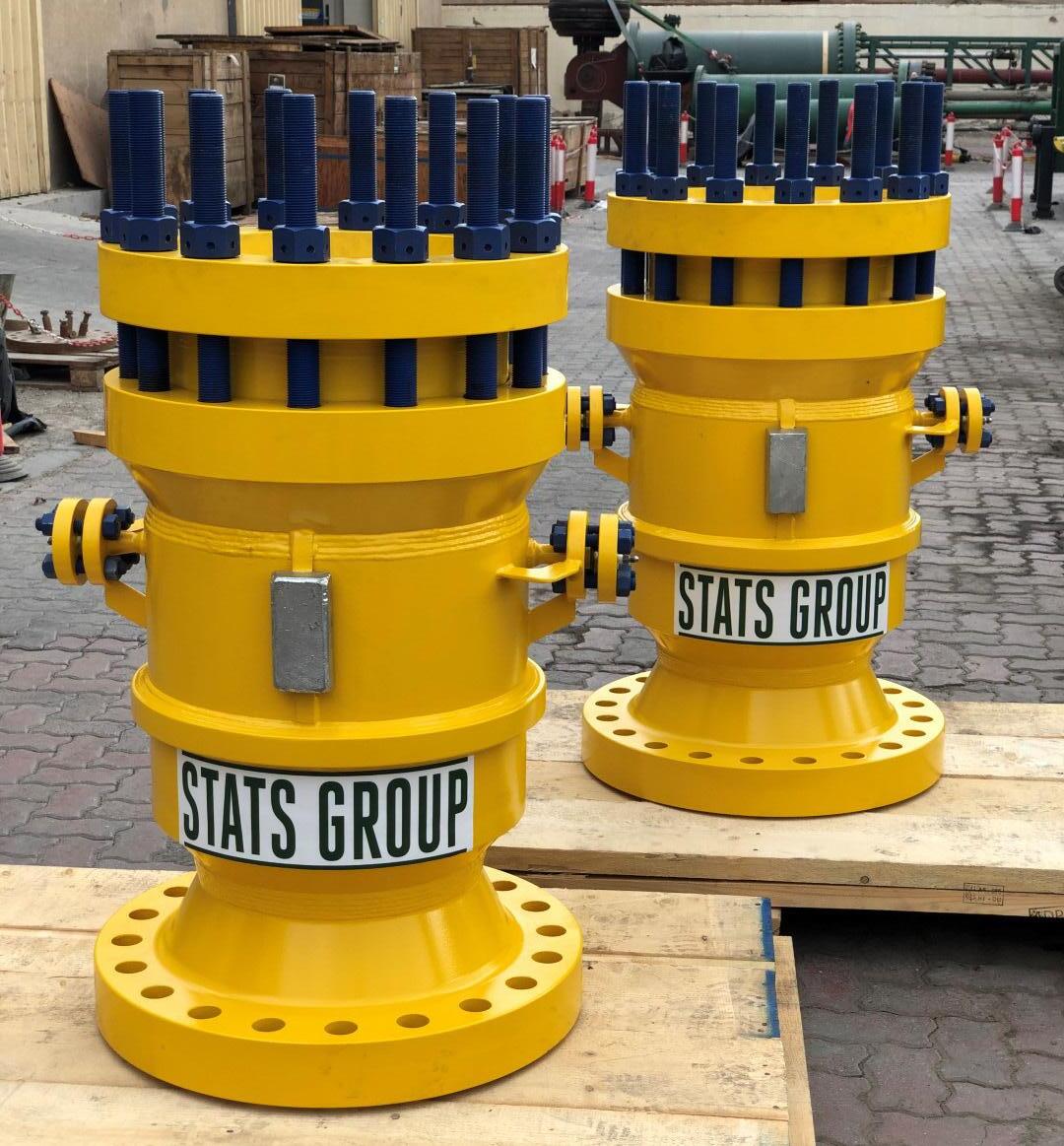
The use of SureConnect mechanical connectors, couplings and repair clamps provide pipeline operators and contractors versatility of repair and significant benefits as part of their project workscopes including ease of installation when compared to other industry solutions, saving on crucial vessel and diver time.
The SureConnect product range is designed to be adaptable to client specific pipeline configurations considering factors such as specialist materials, nonstandard diameters, pressures, line services and installation methods while also overcoming challenges such as pipe ovality.
Utilising SureConnect products for tie-in, repair or connection activities, operators can realise cost benefits along with enhanced safety and reliability, by confirming the integrity of the installed unit in-situ with a design that is tailored specific to its individual application. The approach of using a proven mechanical design provides significant time and cost savings for project plans in comparison to traditional subsea connection methods such as hyperbaric welding.
SureConnect equipment has a long-standing track record of successful deployments, making it a safe and reliable solution for challenging subsea projects which are further highlighted in a variety of industry applications.
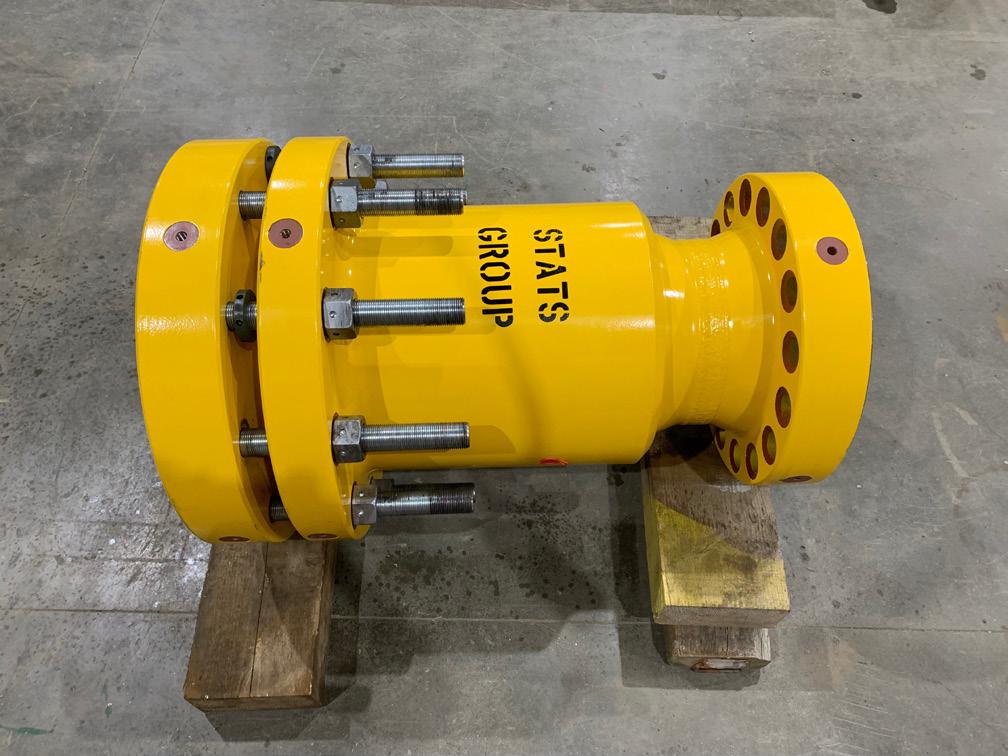
Subsea connector for pipeline repair STATS Group provided two class 2500 (420 bar) subsea SureConnect mechanical connectors for a subsea flange repair project in the North Sea, UKCS. During installation of spool pieces for a new field development, damage was discovered on the sealing face of the platform riser base flange intended for pipeline tie-in.
 Figure 4. 18 x 12 in. SureConnect mechanical tie-in clamp, Victoria, Australia.
Figure 5. 16 in. SureConnect connectors, Class 900.
Figure 4. 18 x 12 in. SureConnect mechanical tie-in clamp, Victoria, Australia.
Figure 5. 16 in. SureConnect connectors, Class 900.
44 World Pipelines / OCTOBER 2023
Figure 6. 14 in. SureConnect connector, Class 2500.
The operator planned an in-situ repair but also developed a contingency solution in case the repair failed, which involved cutting and replacing the damaged flange with a 14 in. class 2500 mechanical connector directly onto the bare pipe end. This ensured that the commissioning schedule for the new pipeline would not be compromised.
To guarantee technical assurance, two mechanical connectors were provided, with one subjected to bend fatigue testing as a test to destruction. Both connectors underwent a factory acceptance test (FAT) and were witnessed by an independent verification body and the client. However, following the successful repair of the platform riser base flange, the connector was not utilised, and is currently stored for the client in a state of readiness for future planned or emergency repair scenarios.

Subsea hot tap clamp enables pipeline tie-in STATS was contracted by a global engineering and construction company to provide a subsea SureConnect mechanical clamp and hot tapping services in the Bass Strait, offshore Australia. The project involved designing and manufacturing an 18 in. mechanical clamp with a 12 in. branch, which would serve as a tie-in point for a new gas field to be connected to an existing 18 in. gas pipeline.
Following completion of a FAT, the equipment was mobilised to Victoria, Australia, where diver familiarisation training was conducted. The hot tap assembly, including the STATS SureTap® hot tap machine, 12 in. valve, and mechanical clamp, was then positioned near the pipeline. The mechanical clamp, featuring dual seals and locks, was hydraulically activated, closing around the pipeline to provide a secure connection. The seals were tested to ensure leak-tightness before setting the locks, which engaged independently onto the pipeline to accommodate pipe ovality.
Once the clamp was proven to be structurally sound, a leak test was performed against the closed valve. The hot tapping operation was carried out while the pipeline remained pressurised, and the cut pipe coupon was retracted before the 12 in. valve was closed. The hot tap machine was then removed, and a short pipe spool was connected to the 12 in. valve, creating a new tie-in point for a 6 km flowline.
Similarly, STATS provided an 8 in., 143 barg SureConnect mechanical hot tap clamp for permanent installation on a new subsea development in the Norwegian North Sea. The purpose of the hot tap was to tie in a new gas lift line to an existing gas pipeline.

This project was the first time a mechanical clamp was used as a permanent fitting on the Norwegian Continental Shelf. The use of the clamp over the traditional method of hyperbaric welding a tee onto a subsea pipeline provided significant cost and time savings and importantly safety to divers during installation. The permanent clamp was successfully installed and the project was delivered on time and within budget with no safety incidents.


Investing in energy security

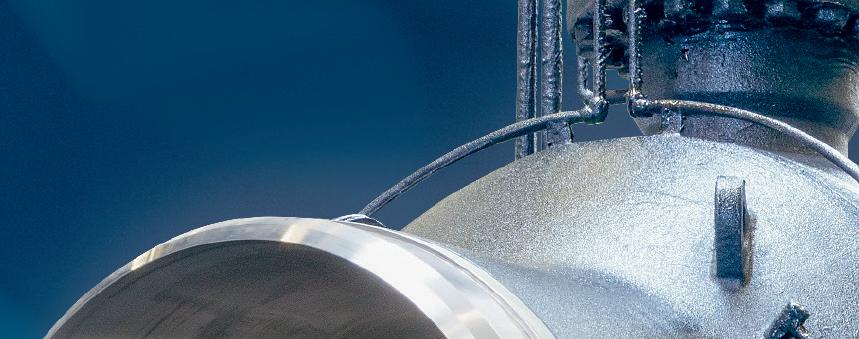
As the global demand for energy continues to grow, the importance of protecting and maintaining the integrity of the pipeline network cannot be overstated. STATS Group’s innovative and reliable SureConnect range stands at the forefront of the industry, allowing operators and contractors to efficiently carry out planned maintenance or quickly respond to emergency scenarios to ensure that interruption to energy supplies is minimised.
STATS SureConnect technology provides operators with significant safety, technical and cost benefits in performing subsea tie-in, repair and connection activities while ensuring project schedule risks are minimised.


The pipeline industry must continue to invest in advanced technologies and reliable repair solutions to safeguard the stability of energy provision for the world’s growing population and ensure a sustainable future for generations to come.

OUR BALL VALVES GO BEYOND THIS DISPLAY AND YOUR EXPECTATIONS! www.boehmer.de OIL, GAS, HYDROGEN, DISTRICT ENERGY & VARIOUS APPLICATIONS 1/8’’ - 56 ‘‘ CLASS 2500 AND HIGHER
Surge relief in liquid pipelines

46
surge relief in liquid pipelines refers to mitigating or reducing the pressure surge in a pipeline system due to sudden fluid velocity or flow rate changes. A surge is a pressure wave that travels through the pipeline and can cause damage to the system, such as pipe ruptures, leaks, or equipment failure.
Consequences of high-pressure pipeline surge may include axial separation of flanges, pipe fatigue at welds, or longitudinal splits of the pipe. Pumps can be knocked out of alignment, and severe damage can occur to piping and piping supports, as well as specialised components such as hoses, filters, bellows, etc. In turn, these failures can result in unplanned downtime and product loss or spoilage, impacting profitability. There may be wider consequences, too, ranging from environmental pollution and clean-up costs to injury or loss of life.
Surge relief devices are typically installed at strategic points in the pipeline system to protect against surge pressures. These devices can include relief valves, surge tanks, or other specialised equipment designed to absorb or dissipate the surge energy and reduce the pressure spikes that can occur.
The selection and design of surge relief systems depend on various factors, including the type of fluid being transported, the length and diameter of the pipeline, the terrain and geography of the area, and the operational conditions of the pipeline system. Proper surge relief is essential to maintaining the safety and integrity of liquid pipelines and ensuring reliable and efficient transport of fluids.
Anyone responsible for the design, operation, and maintenance of fluid handling systems must therefore understand the causes of transient pressure surges and ensure

adequate mitigation measures are in place.
Causes of surge
Any hydraulic system, from a simple rising water main to that of a complex petrochemical process network, will be subject to surge pressures if operational changes cause velocity fluctuations. Surge pressures may vary from being virtually undetectable to having sufficient severity to cause a catastrophic failure leading to a major disaster.
Many of us have experienced the ‘thump’ that follows when we shut off the water flow to our garden hose. This effect is often referred to as a ‘water hammer’ and a transient pressure surge causes the sound. When an appliance’s low pressure and small diameter are scaled up to the much larger piping and high-pressure arrangements commonly found in tanker terminals, oil and gas facilities, and chemical processing plants, that little thump can become a big problem. The noise alone is terrifying, and its surge is potentially hazardous.
Rapid changes in pipeline flow rate are usually caused by pump shutdown or valve closure generating pressure waves, which travel upstream and downstream from the point of origin. The pressure in the pipeline behind these propagating waves rapidly increases or decreases. Typical propagation velocities can range from 1100 ft/sec. for a water pipeline to 3300 ft/sec. for a typical crude oil line.
In addition, long pipelines are subject to a phenomenon known as line pack, where pressure slowly builds. Due to frictional losses in a pipeline, pumps must generate higher discharge pressures to move the liquid column downstream. Pump flow is maintained substantially after valve closure as the pump packs the pipeline.
Using the IoT to capture pressure data in real-time adds further functionality and analysis of surge events, says Eduardo Zani and Pedro Flores, Celeros Flow Technology, USA.
47
In most cases, the final pressure locked in between the pump non-return check valve and the closed valve exceeds the maximum discharge of the pumps due to pressure oscillation in the line during this packing period.
Controlling surge
A complete computer model of the pipeline profile should be completed early in the pipeline design. Experienced engineers use computer-based numerical simulation techniques to determine the effects of unsteady flow of liquids transmission in pipelines and piped networks.
Operational and control problems are identified during this phase, and proposed solutions are verified.
Staging pump shutdowns with the closing of main pipeline valves can help cancel the high-pressure wave travelling in the opposite direction from the closing ESD or MOV valve. Using a remote or local high-pressure or lowflow sensor can achieve pump shutdowns.
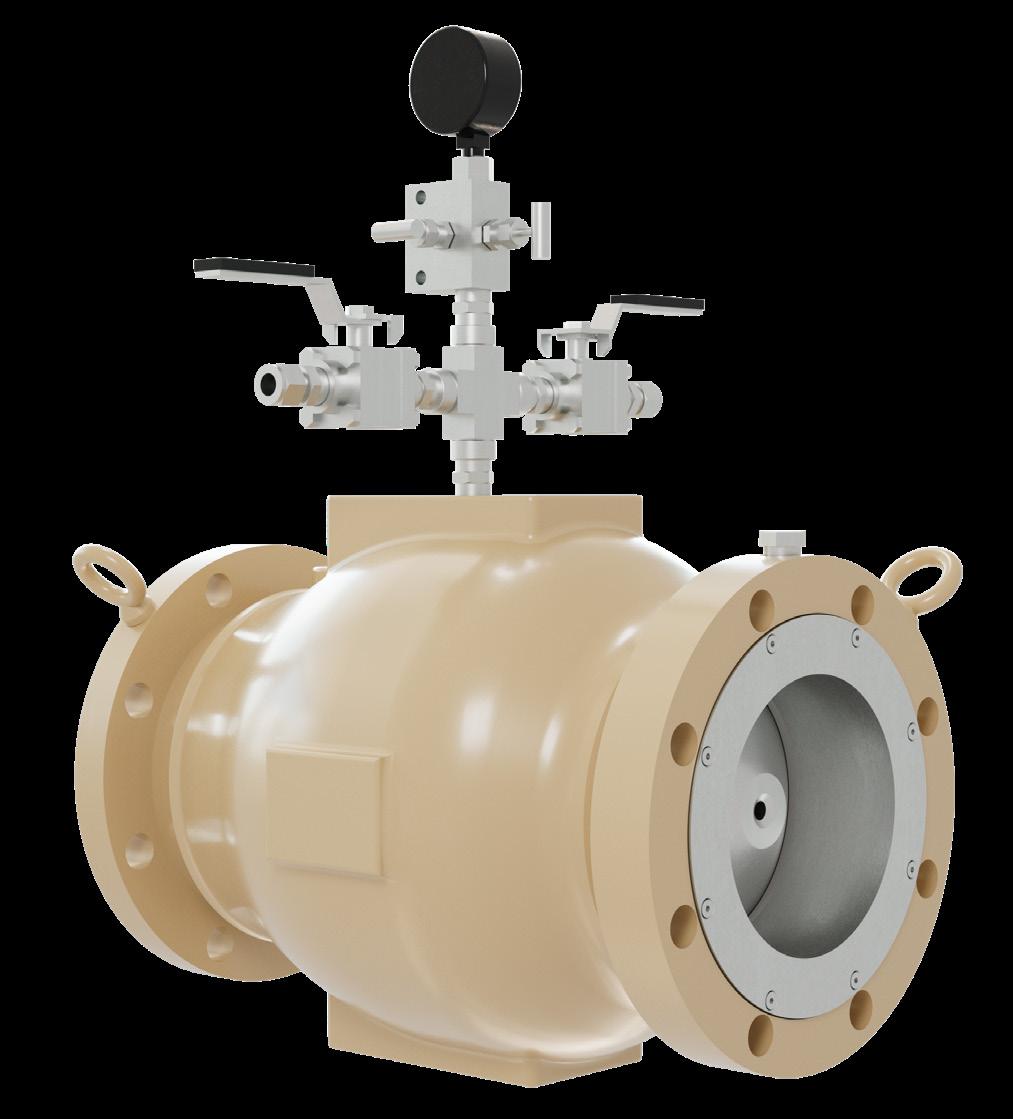
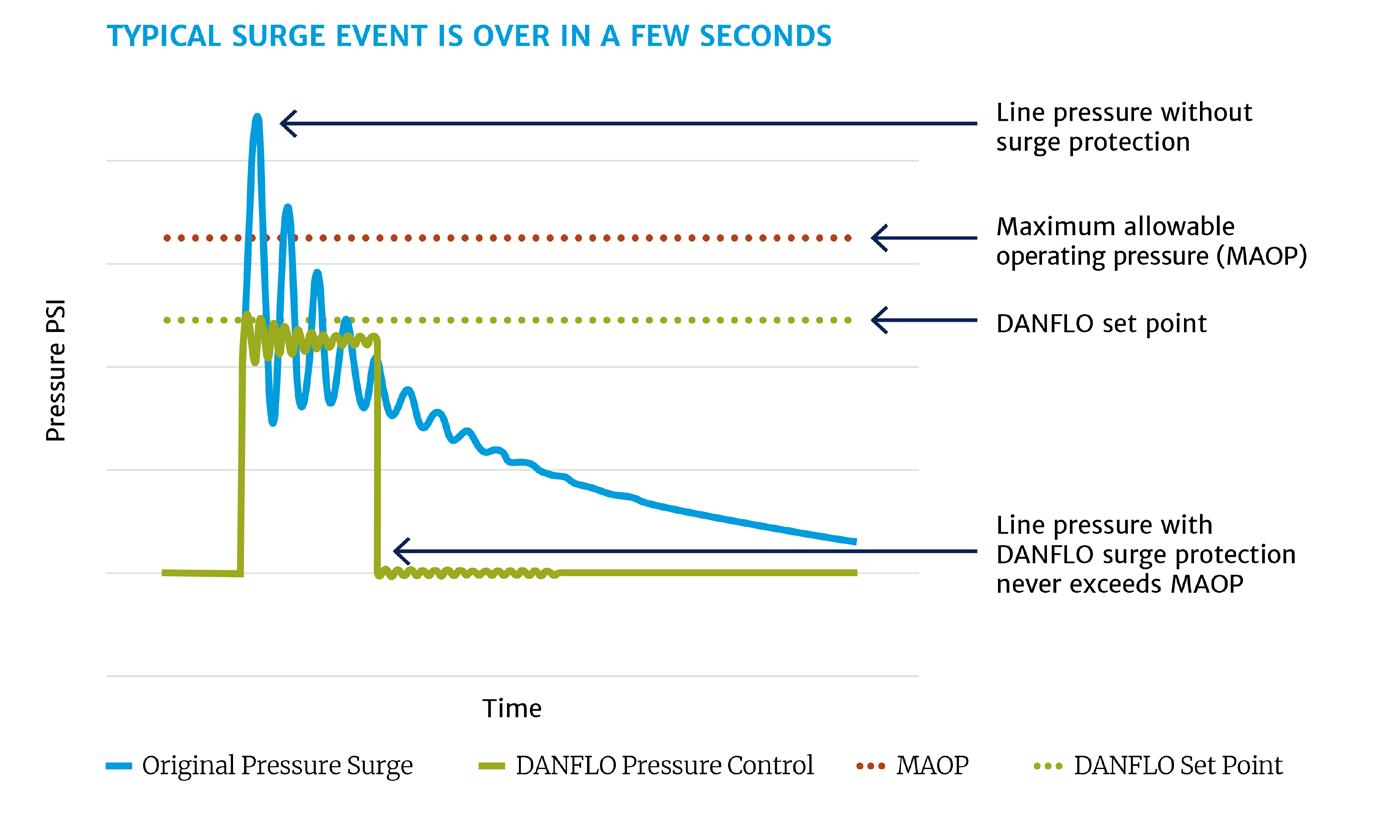
As discussed, valve closure times can affect surge pressures in the pipeline. Extending the valve closure time can achieve a more gradual flow decay. Closing cycles of different styles of valves (e.g. ball, butterfly, globe, or gate valves) can also affect flow decay. In addition, a surge pressure relief facility should be installed to protect the system. The type and location of the relief facility is governed by two factors: set pressure and location. The most basic relief system design can be used by adopting the lowest set pressure allowed by the hydraulic transient surge study. All relief facilities should be located nearest the point where the increased pressure can occur, e.g. main pipeline ESD or MOV valve.
Equipment solutions
Once the location of the surge relief facility is decided, the next decision is what type of relief facility to install. Several options are available:
Accumulators
These gas-precharged bladder-type vessels expel the product immediately back into the system. They are ready for immediate reuse after a pressure surge has occurred. However, individual accumulators can only relieve a small amount of fluid. If a large pipeline system is being used, a large bank of accumulators may be required, which could be very expensive and require additional space to install.
Rupture discs
Rupture discs’ chief advantage is their ability to provide a high relief flow capacity. Their main disadvantage is that the relief system has to be shut in order to replace the rupture disc, which can involve depressurising and repressurising the pipeline. In addition, metal fatigue of the disc can sometimes occur and cause premature relief, which can create additional operational problems.
Relief valves
There are two types of relief valves: spring-loaded and gas loaded. Although spring-loaded safety valves are sometimes used, relief capacities are limited, and they can be prone to ‘chattering’ – i.e. they slam open and closed during relief operations. This causes secondary surge waves to occur. Pilot and gas-loaded axial flow style valves are a better choice for surge relief service. They can respond to a surge event within 100 m/sec. and then
Figure 1. Celeros Flow Technology has combined a traditional surge pressure relief valve (pictured) with a predictive pressure rate-of-rise system to allow pre-emptive action against a developing surge event.
48 World Pipelines / OCTOBER 2023
Figure 2. Comparison of pressure surge with and without a Danflo control valve.




pipelayer machine INNOVATIVE AND CUSTOMIZED INNOVATIVE AND CUSTOMIZED SOLUTIONS FOR EVERY CHALLENGE since 1958 Parma, Italy spx - 903 FOR MORE INFORMATION SCAN HERE spx series 260 / 460 / 670 / 803 / 903 / 960 HYDROSTATIC TRANSMISSIONS ANTI-TIPPING SYSTEM www.scaipspa.com VARIABLE GAUGE (3M WIDTH) CLOSED CABIN WITH ROPS / FOPS
modulate to control the surge wave by keeping the system operating pressure below the maximum allowable pressure. However, pilot-operated valves are generally limited for refined or clean media product pipelines.

Technology improvements
As a specialist manufacturer of fluid control systems, Celeros Flow Technology is focused on developing technologies that meet current and future customer needs. We aimed to develop a surge relief system that proactively responded to pressure change, was tamper-proof, and reliable in remote locations.
Our solution combines a traditional surge pressure relief valve with a predictive pressure rate-of-rise system to allow pre-emptive action against a developing surge event. This patented solution utilises a spring-biased reference chamber which imparts a pressure differential across a fixed orifice. The fixed orifice pressure differential is constantly monitored and will trigger the main surge relief valve to open upon reaching a preset limit.
As the surge dissipates, the valve closes without slamming shut, preventing ‘chatter.’ It is then ready to act again on any subsequent surge. So, the line is constantly protected from a build up of pressure surges.
Because it uses no electronic devices, this system is unaffected by power loss, communication disruption, or cyberattacks, making it far less vulnerable to external factors. The mechanical circuit provides a reliable hydraulic safety barrier against transient pressure surges. The system not only reacts to high-pressure surge waves to prevent the process from exceeding the maximum allowable operating pressure,
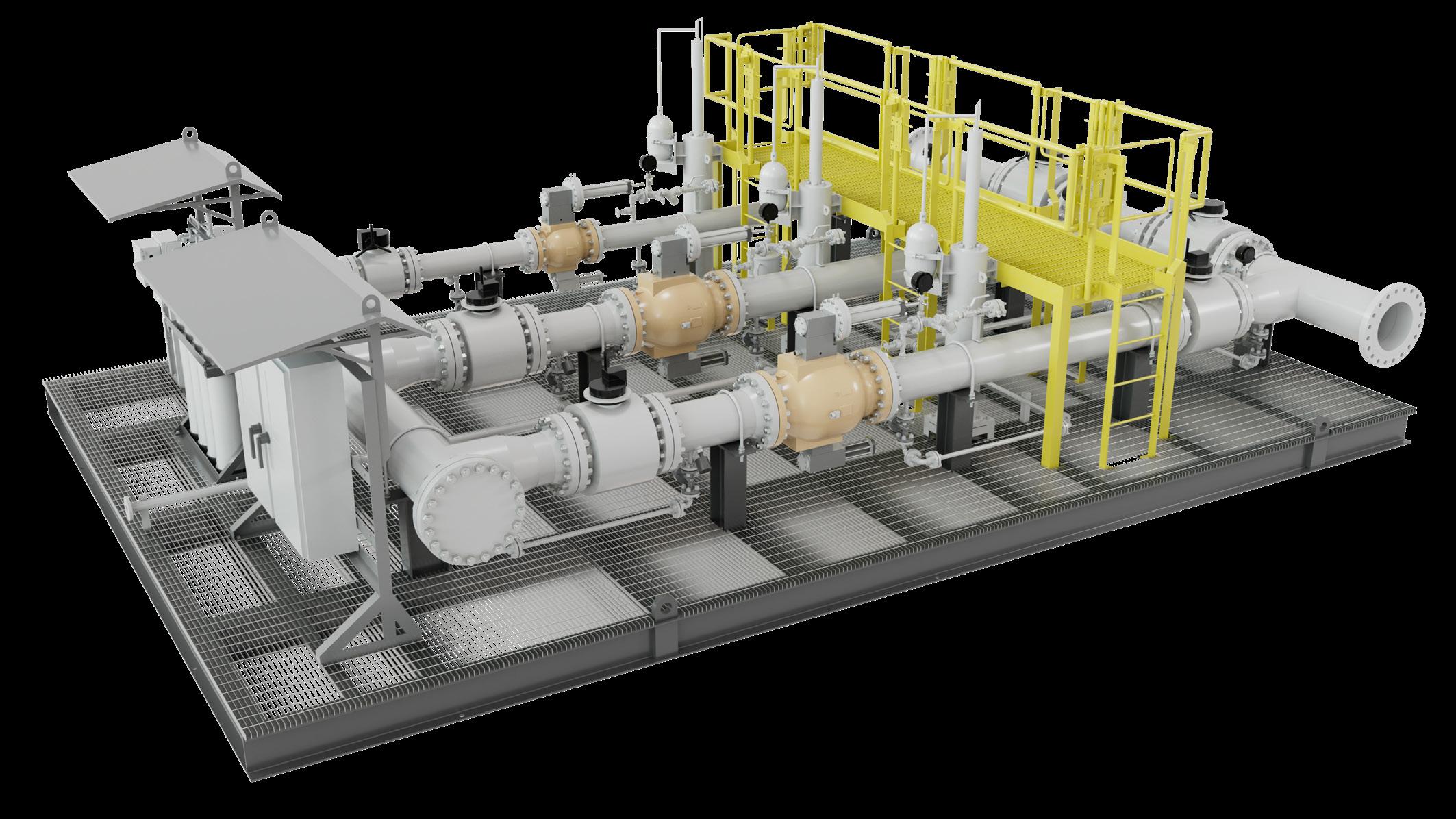 Figure 3. Because it uses no electronic devices, the Celeros Flow Technology surge relief system is not affected by power loss, communication disruption or cyberattacks.
Figure 3. Because it uses no electronic devices, the Celeros Flow Technology surge relief system is not affected by power loss, communication disruption or cyberattacks.
50 World Pipelines / OCTOBER 2023
Figure 4. A Celeros Flow Technology rate-of-rise skid being prepared for shipment by air.
PROTECTIVE OUTERWRAPS
HEAT SHRINKABLE SLEEVES
SOIL-TO-AIR INTERFACE
DENSO™ are leaders in corrosion prevention and sealing technology. With 140 years’ service to industry, our mainline and field joint coating solutions offer reliable and cost effective protection for buried pipelines worldwide.




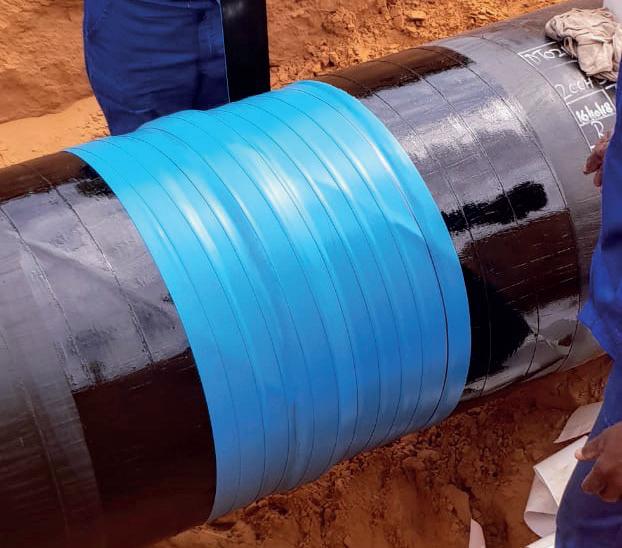










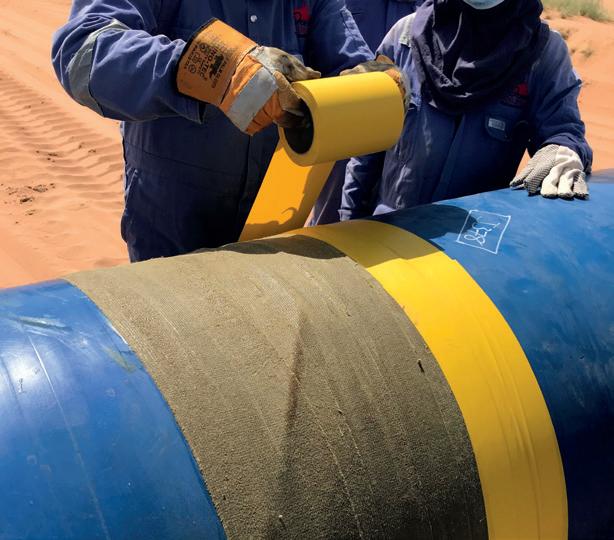
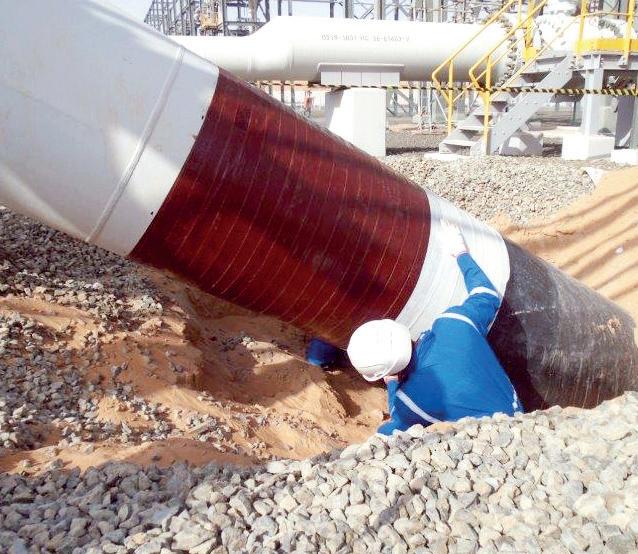

United Kingdom, UAE & India
USA & Canada
Australia & New Zealand
Republic of South Africa
FOR CORROSION PREVENTION
www.denso.net
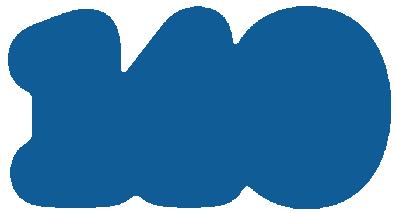
www.densona.com
www.densoaustralia.com.au
www.denso.co.za
LIQUID EPOXY COATINGS
PETROLATUM TAPE WRAP SYSTEMS
BUTYL TAPE WRAP SYSTEMS
INTERNAL PIPE LININGS
BITUMEN TAPE WRAP SYSTEMS
A MEMBER OF WINN & COALES INTERNATIONAL
VISCO-ELASTIC COATINGS
but more importantly, it continuously detects the rate of pressure rise in the system and will react before a surge event can occur. It therefore supports condition monitoring and preventative maintenance regimes.
In addition, its high flow capacities mean smaller and fewer valves are used, saving installation costs and weight. A set-pressure test port makes it easy to comply with regulatory testing requirements (such as DOT), and an additional reserve flow capacity means the system can even cope with unexpectedly large surge transients.
High-resolution IoT data





High-resolution data capture for pressure, transmitted via the Internet of Things (IoT), refers to collecting detailed

and accurate data on pressure-using sensors and other IoT devices. These sensors can be placed in various locations, such as pipelines, storage tanks, and other equipment, to monitor and measure pressure in real-time.
The information about pressure collected through highresolution data capture can be transmitted via the IoT to other devices, systems, or applications for further analysis or processing. This data can provide valuable insights into the performance and operation of equipment and help identify potential issues before they become critical.



For example, in the oil and gas industry, high-resolution data capture for pressure via IoT sensors can monitor the pressure in pipelines and identify potential leaks or other issues before they become serious. This can help prevent accidents, minimise downtime, and reduce maintenance costs.
High-resolution data capture can also enable businesses and organisations to understand their operations better and make more informed decisions based on realtime data. This can help improve safety, increase efficiency, and reduce costs.
Celeros Flow Technology has also developed and patented high-resolution, data capturing IoT devices to measure pressure transients 100 times per second. This allows for a complete description of the pressure wave to understand not only the surge but also to identify if there are possible systemic problems, as well as predict if the surge equipment needs to be serviced.
Summary
Typically, pipeline pressure safety has been an attempt to control a single variable – pressure.
The Celeros Flow Technology patented rate-of-rise system adds a new dimension by mechanically detecting and triggering the main valve to open before an actual surge wave has reached a damaging level of intensity. Using the IoT to capture pressure data in real-time adds further functionality and analysis of surge events.
As a result, the complete system provides not only pipeline safety protection, but overall pipeline system stability, minimising possible downtime and allowing operations to continue without interruption.
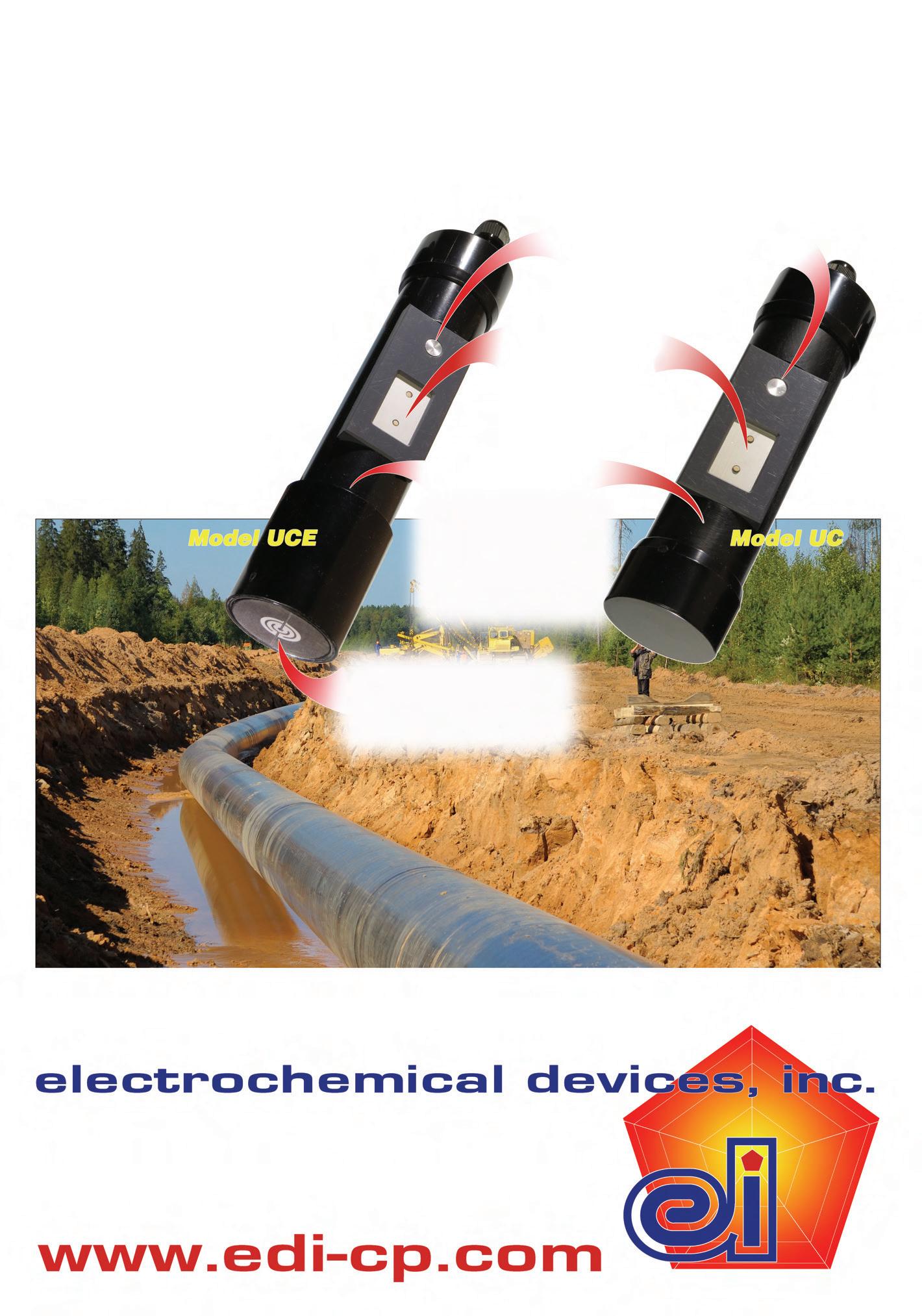
REMOVING
THE GUESSWORK
Aaron Madden, T.D. Williamson, USA, writes about how an algorithm can help ensure an effective emergency response.
When the emergency line tripped and leak detection alarms sounded on a 36 in. crude oil pipeline in a remote region of the United States, some 150 miles from the nearest major city, the emergency intervention and isolation response was so accurate, technically precise and responsive that it allowed the operator to avoid as much as US$1.2 billion in lost revenue. And behind it all was an algorithmic equation.
From GPS to Google search, algorithms are an increasingly potent part of our daily lives. Loosely defined as step-by-step, computational procedures, algorithms help solve problems and accomplish tasks, like getting your car from here to there, or helping you find which seafood restaurant is nearby and open.

In this case, an algorithmic mitigation approach helped the operator and global pipeline solutions provider T.D. Williamson (TDW) strengthen its longstanding emergency response operational readiness (EROR) programme. EROR programmes are intended to ensure the right technology and technicians will be ready and easily mobilised in case of an unplanned event.
Among other features, the operator’s EROR programme strategically positions isolation fittings in storage facilities so they will be onsite within 48 hours of an unplanned event anywhere in the continental US – a considerably faster turnaround compared to the standard lead time. The operator may also elect to store their fleet of STOPPLE® isolation
equipment – which covers multiple fitting sizes – at a TDW location.
Knowing that in just two days their isolation fittings would arrive at the worksite and the rest of the equipment would be there soon after, the operator could immediately start sequencing the starting time of each task associated with the repair. Perhaps more importantly, this process returned the pipeline to service quicker.
Insured against the inevitable
The concept of an EROR programme is nothing new; in fact, TDW and the operator have had theirs in place for more than a decade. These arrangements are a little like insurance policies against the inevitable. In our industry, the question isn’t ‘if’ an unplanned event will occur but ‘when’. An EROR programme helps ensure the isolation fittings and equipment (usually owned by the operator but stored and maintained by the service provider at their facilities) will be ready to be placed into service at a moment’s notice. That way, when there’s a loss of containment or service interruption, the operator can react quickly to depressurise the system, minimise product escape, identify and remedy the root cause and resume service.
In the past, optimising the operator’s equipment investment depended largely on experience and instinct – art as much as science. And while that has proven to be a reliable way to prepare for an efficient and effective emergency
53
intervention or isolation, applying an algorithmic mitigation approach takes any guesswork out of the EROR programme development process. It also maximises the operator’s equipment investment and minimises risk exposure.
“The algorithmic approach helps us understand where the total cost of equipment ownership provides the most benefit with regard to reducing exposure, reducing response time and potentially reducing insurance premiums,” Ed Guidry, TDW Senior Director of Intervention and Isolation, stated.
Capitalising on known variables
Planning a successful emergency response centres on two things: considering all the variables, known and unknown, that precede, initiate and occur during an unplanned event; and then identifying and sequencing the actions required to improve the outcome.
These are not small tasks, especially the first. After all, the list of unknowns can be long and daunting. It’s impossible to know exactly when a third party will strike a line, whether today is the day that corrosion will reach its breaking point, if an inspection tool will get stuck in a bend, or whether heavy rainfalls, eroding soil or earthquakes will shift the pipeline enough to degrade containment integrity. And even if those incidents could be predicted with a high level of accuracy, there’d still be no sure way of knowing precisely where they’ll happen.
That may sound foreboding, but the good news is that there are plenty of known variables to work with when creating an EROR programme, including system geography, the range of pipeline diameters in the system, the type of product being carried and the chronological order of activities required to respond to the event. Each of these known variables has a limited range that can be used as a minimum and maximum boundary to encompass unknown variables. For example, because the operator knows how many miles of pipeline are in the network as well as the range of diameters and the distance covered by each diameter pipe, those known variables become the boundaries for the algorithm.
Let’s say a natural gas network comprises 4 - 24 in. pipelines. The range represents a known boundary. Of
course, the operator can’t know which diameter pipe will be affected by an unplanned event – that’s an unknown variable.
By understanding the known boundaries, the operator can plan for the variation. In this instance, that would include investing in fittings and equipment that work with every pipe size from 4 - 24 in. and strategically positioning everything to reach the area of coverage within a specific time frame.

But what does strategically positioned mean, and how can operators determine the ideal time frame? An algorithmic mitigation approach helps answer both questions.
Guiding complex timetables
In addition to accounting for the variables associated with unplanned events, another key tenet in EROR programme planning is understanding the chronological sequence (and urgency) of each step in the intervention and isolation process, including when simultaneous operations occur.
Getting all of the participants and equipment scheduled and mobilised is a complex undertaking involving excavation, welding, X-ray inspection and isolation contractors as well as the shipment of fittings and isolation equipment.
Using an algorithm like this to create a timetable can keep everything on track:
TR + TE + TFt + TEt + TIso = TSafeOut
Where:
TR = Time for response (planning and activation timeframe).
TE = Time for excavation (activate, mobilise, complete excavation).
TFt = Time for fitting transit.
TEt = Time for equipment transit.
TIso = Time for isolation.
TSafeOut = Time for safeOut of isolated section.
Keeping the isolation project moving forward efficiently isn’t the only benefit of this exercise, however.
Understanding the chronological sequence of the activities (locate, excavate, weld, hot tap, isolate) and their urgency also aids in setting shipping expectations. And that helps identify fittings and equipment storage and mobilisation locations. Here is how that might unfold.
) The operator estimates it will take six hours from the trigger event to get the dig team on site and for them to complete excavation. That means the fittings must be stored close enough that they can be shipped to arrive around the time the excavation wraps up.
) The next step, welding and X-ray examination, is expected to take 14 - 24 hours. This is the window for delivery of the isolation equipment.
54 World Pipelines / OCTOBER 2023
Figure 1. Most pipeline incidents occur in remote locations. But with an EROR programme in place, the intervention and isolation response can be quick and efficient in any location.
We are running out of space...
Our inventory in sales & rental in pipeline equipment is out of this world. We have a huge amount of machines from all the big brands that are ready for worldwide delivery, or even further if you want...
You can build on BAUMA!

und Handels GmbH
BAUMA-PIPELINE.COM Vermiet-
In the example shown in Figure 3, the operator requires a six hour coverage area for fittings and a 20 hour coverage area for equipment. Coverage areas can be increased or decreased to optimise risk tolerance while leveraging cost stewardship.

“The algorithm takes into account the customer needs –the geography of the piping system and internal requirements to be onsite,” Guidry explained. “A six hour radius coverage area for the fittings allows for a 20 hour coverage area for the equipment. This allows strategic positioning of the fittings and equipment to fully leverage the initial investment.”
Once the algorithmic concept is understood and modified to fit an operator’s unique needs, it can be scaled and applied to every aspect of the EROR programme. Here’s an example of how to leverage it for returning a pipeline to service.
Case study: when the alarms sounded
Hypotheticals and plans are great, but the proof of how valuable this approach can be is in the response to the loss of containment on that remote crude oil pipeline. With the operator’s equipment stored at the TDW facility in Tulsa, Oklahoma, and delivered to the worksite according to the

EROR plan, the TDW team was able to successfully execute a 36 in. double STOPPLE® isolation within 10 days. This saved the operator precious time by allowing them to avoid waiting for typical fitting lead times, which may take as long as 30 - 40 days just to source 36 in. fittings.
Day 1: Leak detection alarm trips.
Day 2: Operators put TDW on notice .
Day 3: Operator requests mobilisation; TDW ships fittings and equipment.
Day 4: Equipment and fittings arrive at worksite.
Day 6: TDW technicians mobilised.
Day 8: Fittings welded.
Day 9: Hot tapping begins.
Day 10: TDW sets the STOPPLE tools; repair crews begin work.
The typical 36 in. EROR programme will have an initial investment of US$2.5 million and an annual storage and maintenance fee of approximately US$150 000, which equates to a six year investment of just over US$3 million. However, when you compare that to the lost opportunity cost of transporting 600 000 bpd of crude oil running at US$74/bbl, on average, this equates to US$44 million/d of lost revenue. You can quickly conclude that the return on investment happens in the first hour of returning a pipeline to service.
“Examples like this make it very easy to show the value of a well-built EROR programme,” stated Jake Pytlik, TDW Director of Sales Operations. “Getting your pipeline back up and running in a safe, timely manner is not just vital for the environment and to mitigate any public response you might face, but also for your company’s bottom line.”
Obviously, the goal is to never have a loss of product containment along any pipeline or in any facility. But when that does happen, the key is responding appropriately, which is where EROR programme planning comes in.
By understanding all the variables then categorising and ensuring that the unknown variables have a boundary, operators and service providers can develop a multifaceted solution to cover the entire range. This is where an algorithmic mitigation approach can support and improve the overall planning process.
Figure 2. A typical waterfall project sequence helps define critical milestones.
56 World Pipelines / OCTOBER 2023
Figure 3. Coverage areas are determined by understanding pipeline geography and other variables, plus the operator’s unique needs and risk tolerance.
Simon Herrenknecht, Herrenknecht AG, Germany, explains how fast, safe and proven horizontal directional drilling is increasingly important for eco-oriented pipeline and electricity transmission projects.
To have a major positive impact, renewable energy solutions such as offshore wind and hydropower schemes need to be developed and connected to a power grid. Also, solar and wind energy can be used to produce ‘green’ hydrogen – net-zero hydrogen – which can then be stored or used to directly serve industry, consumers and district heating. New pipelines or connections to existing
networks will be needed in this context, and in all cases new pipeline and grid networks should be designed to keep pace with future requirements.
Trenchless pipeline installation methods generally offer the rapid installation of protected, resilient underground pipelines and cables with minimal impact on the surroundings. New trenchless methods and improved existing technologies now provide energy

57
Figure 1. All-electric HK300TE HDD Rig on pilot project in Belgium (© Van Leeuwen Sleufloze Technieken)
suppliers, grid operators and construction companies with a wide range of choices for project implementation. These methods help to balance and reconcile economic and environmental aspects, and the concerns of residents and landowners.
Over long and short distances, and particularly when crossing obstacles such as rivers and in built-up areas, horizontal directional drilling (HDD) is often the preferred way of building and increasing pipeline and power grid capacity. HDD’s other applications include fibre optic cables, gas, oil and gravity sewage lines.
Trenchless methods
A remarkable number of trenchless installation methods have been developed over the past 50 years. Basically, these installation methods originate from the fields of pipeline installation and tunnel construction. Successive further development in terms of diameter, range, geological suitability for use, installation accuracy and the various pipe materials to be laid have made these techniques ever more economical and versatile.
Process and technology developments such as the two-step E-Power Pipe® technology have been aimed at new applications, including the laying of underground cables, where the subsequent operation of the pipeline places new requirements, e.g. accessibility, with impact on the possible construction method to be used.
Selecting the appropriate trenchless method depends largely on the specific project parameters. The pipeline as such can be installed, as with HDD or the Direct Pipe® method, or casing tunnels are created using pipe jacking or segment lining, into which the pipeline is inserted in a second step.
Application fields
In pipeline and power grid construction, trenchless methods have several application fields and face some comparable challenges. The landfalls of export cables coming from offshore windfarms are usually located in sensitive coastal areas where
the operation of heavy construction equipment is not possible due to environmental protection requirements. Also, when dyke structures have to be crossed, this sets further increased demands on the safety aspects of respective trenchless installation methods.
Even if HDD presents a common technology for the installation of steel casings for subsequent pull-in of the export cables, the alternatives with controlled micro-tunnelling systems such as pipe jacking or Direct Pipe need to be carefully investigated. In any case, the drilling works can be carried out from onshore to offshore, whereas the protective pipe is typically inserted from the seaward side in a second step.
Similar safety considerations also play a role where rivers have to be crossed along the route of pipelines and cable lines. According to the width of the river and possible coverage, it is usually advised to design the crossing as a tunnelled casing to provide a functional discharge of the cable heat emission by a tunnel ventilation system additionally installed in the largediameter tunnel. The heat generated by the cables and the magnetic field are also important in route planning over land. Depending on the temperature and the required limit values of the magnetic field at the surface, the depth and spacing of the cables (e.g. for separate installation with the E-Power Pipe method) must be decided.
Finally, these parameters have a major impact on the required corridor width, planning of the alignment and the resulting approval process. Especially for crossing agricultural land, further aspects such as route accessibility, the separation of soil layers, re-cultivation measures and restrictions to use bentonite further determine the possibilities for open-trench and the various trenchless methods.
In inner-city conditions, where more cables are placed underground to gain space on the surface and to protect the lines from external impacts, trenchless is mostly imperative. There are typically severe space restrictions above ground and cable tunnels often have to go deep to pass beneath existing infrastructure.
Advantages of trenchless methods
Reliable, quick, safe and environmentally friendly installation of onshore networks, landfalls and crossings of natural and structural obstacles are important to gain a high level of public acceptance and for the fastest possible approval procedures. On some sections, an open-cut method is the most efficient installation solution. With these, however, it is usually not possible to safely cross beneath existing obstacles above and below ground, such as traffic routes or bodies of water, without disrupting life above ground. Only trenchless methods can do this. Trenchless technologies cover the entire geological spectrum, with high flexibility in terms of diameters, drive lengths and depths of the network sections to be installed. Complementing proven methods from pipeline and tunnel construction, additional
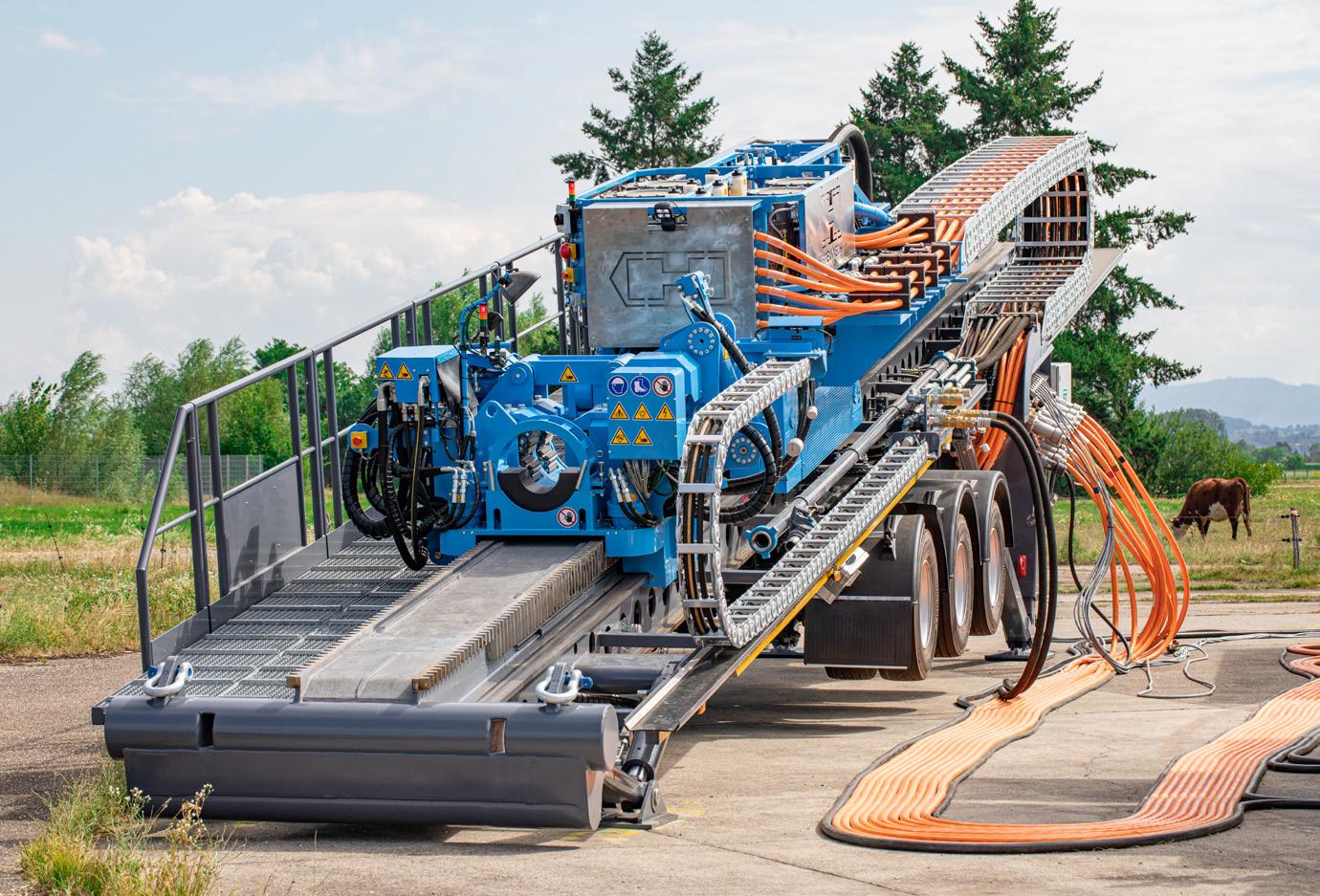
58 World Pipelines / OCTOBER 2023
Figure 2. HK300TE: Herrenknecht´s first all-electric HDD trailer rig with 300 t pull force.
technologies have been developed that show their strength where the long-established methods reach their limits in terms of feasibility.
Ever better and greener HDD
For many years, the trend in HDD was for longer and larger crossings to meet requirements along pipeline routes. In this context, high-torque HDD rigs have been developed and auxiliary equipment, such as the pipe thruster for flexible power reserve, is available to support challenging crossings. Nowadays, with a rising number of HDD projects for the installation of underground cables, smaller installation diameters are required. This increases the potential for smaller rig sizes, reducing emissions and saving resources.
As is the case in the automotive industry, downsizing is a preferred solution for new HDD rigs in the market. The pull force of the rig, which defines the rig size, remains the same or is often being reduced, while simultaneously the torque is being increased. It is not uncommon to see 100 - 150 t rigs with a torque drive of a former 250 t or even 300 t rig. Today’s precision in drilling is so high that the pull forces during pipe pull-in are more controllable. Therefore, large rigs are only needed on special projects to be on the safe side. These days, torque in relation to small footprint is the key.

For HDD operations, environmental aspects include fuel consumption and emissions, water and bentonite consumption, disposal of drilling fluids and excavated muck, jobsite footprint, and fluid release. In the future, contractors will have to provide environmental evidence as part of an increasingly important part in contract awards.
Equipment manufacturers’ environmental initiatives include the electrification of the complete jobsite. Running the jobsite only on electricity, including the HDD rig itself, enables the contractor to operate with considerably lower CO2 emissions.
Even producing the electricity with generators improves the jobsite environment; the engines in the generators run continuously at an optimum revolution range, and are often better maintained. With an intelligent control system, several generators can even be connected to each other and only turned on when a certain amount of power is needed.
Digitalisation also finds its way to the pipeline industry; to ensure communication between all components,

the jobsite equipment has to be connected intelligently. This is the basis for good performance, facilitates remote access and allows continual data recording and evaluation. With increasing automation, less manual interference is needed, for example, on the drilling process and pipe handling. In the future, even the separation system and mud mixing could adapt automatically to the geology.
A preferred way to start a new concept is to stay as close as possible to the existing design and convert only single parts into the new technology. Therefore, in a first step the ‘problematic’ diesel engines have been replaced by electric motors. The drilling itself has not changed much and the equipment still keeps its hydraulic system, creating the so-called Hybrid HDD Rig.
Dairyland Electrical Industries is the world’s leading manufacturer of solid-state decoupling products for the corrosion protection industry. We’ve been making rugged and reliable products since 1983. After 40 years in business, 99.99% of them still work.
Learn more about our Always Rugged Promise: Dairyland.com /AlwaysRugged
FOR 40 YEARS, WE’VE BUILT THEM RUGGED SO YOU CAN RELY ON THEM TO PERFORM
The Hybrid Rig and the complete jobsite spread can now be operated both directly from the grid or by generators.
A hybrid rig
To cope with the requirements of drilling in urban areas, and to make the use of green energy effective in the long-term, Herrenknecht has developed a compact Hybrid Rig HK80CK on a crawler base. This rig can push or pull 80 t and has a torque of 60 000 Nm powered by a 250 kW electric engine. Several design features achieve a small footprint on the site and allow high mobility for ease of relocation. The Hybrid Rig is also much quieter and has lower exhaust emissions for operation in urban areas. The unit is autonomous and runs all drilling functions from one electrical source. Electrical power can come either directly from the grid or from a separate generator. This generator can run not only the rig, but also the recycling system, transfer or mixing tanks, breakout wrenches and even the high-pressure mud pumps. All accessories are available in electrical versions, so the Hybrid Rig is simply getting in line with all existing electrically driven equipment.
New all-electric HDD Rig
Another new development, the HDD Rig HK300TE, will be a further significant step towards the energy transition, making green energies usable in the drilling industry. The first field testing of the HDD Rig HK300TE was successful.
A directly electrically driven rig enables the use of green electricity and assures higher efficiency without the losses associated with the hydraulic system. Once fully developed and tested, the principle can be transferred to all rig sizes, creating a new generation of all-electric HDD rigs.
Former electrified drill rigs, so-called hybrid rigs described above, exchanged the diesel engine for a three-phase induction motor powering the hydraulic system. Relatively simple, it enabled the driller to power the rig electrically while keeping the hydraulic system, and for the operator it felt like any other conventional rig. However, efficiency was not at its best as conversion to the hydraulic system is linked to power losses.
Outlook
Driven in part by greater environmental awareness and requirements, HDD is constantly evolving and an increasingly important method in construction projects for power grids and pipeline networks. Besides pipeline construction, which will not disappear, the emphasis is shifting from oil and gas to alternative green fuels, e.g. hydrogen, and new applications such as carbon capture storage, fibre optic cables and more. The simplicity of HDD compared with other mechanised tunnelling methods, for example, is more and more appreciated and is playing a bigger role for projects where time and money are important, as long as the ground conditions allow a safe drilling process.
XXL PIPING SYSTEMS
HDPE piping systems for horizontal directional drilling
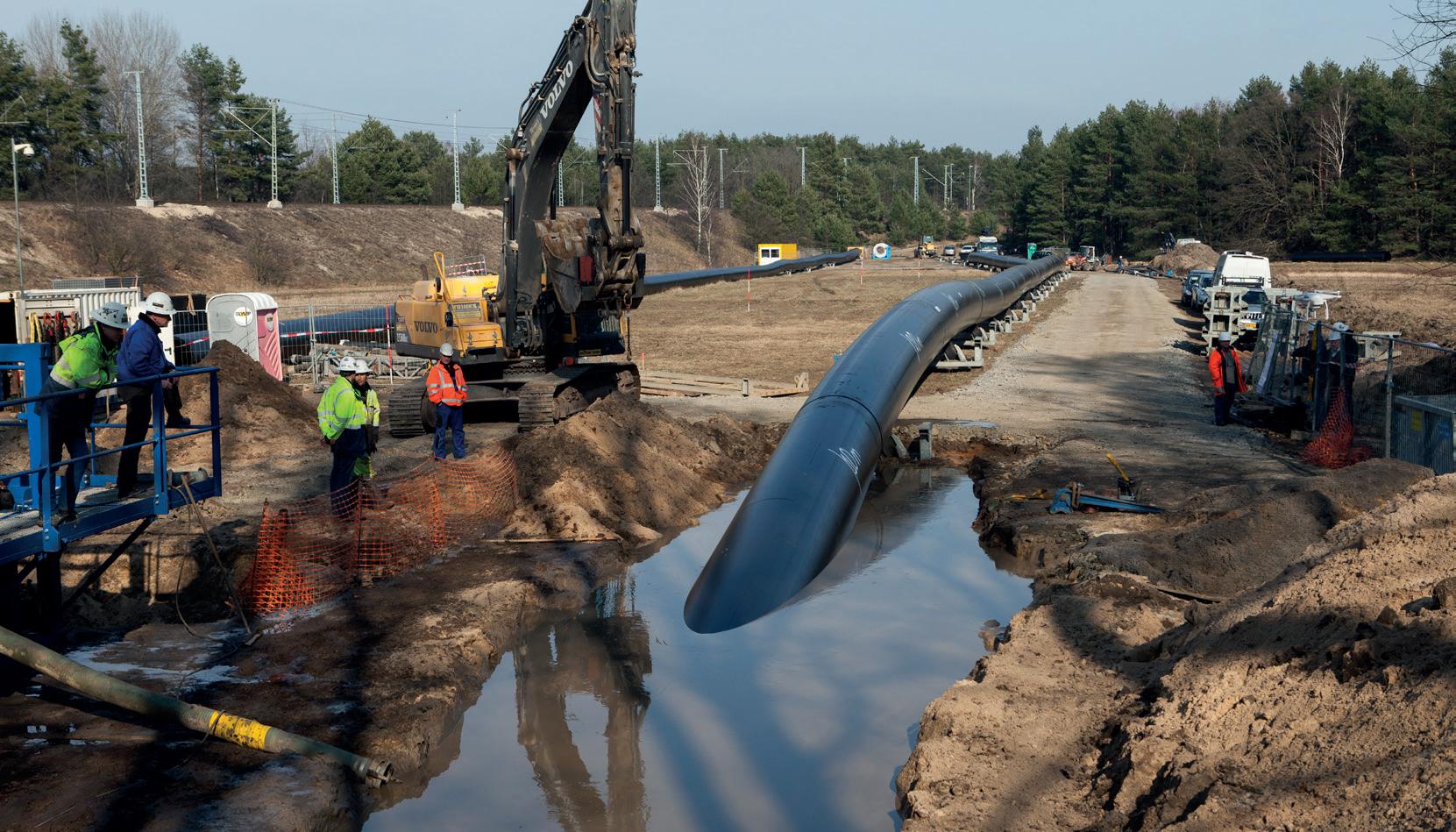
OUTSTANDING LIFE SPAN
Corrosion-free PE reduces lifecycle costs of large diameter pipes significantly
FAST AND EASY INSTALLATION
High flexibility, low weight and safe joining methods
FOR HIGH-VOLUME FLOWS
Compatible fittings and pipes available up to OD 3500 mm
HIGH-QUALITY MATERIALS
Selection of raw materials according to the PE 100+ Association guidelines
EXPERTISE IN PLASTICS PROCESSING
Decades of experience in plastics processing, research & development
agru Kunststofftechnik Gesellschaft m.b.H. | Ing.-Pesendorfer-Strasse 31 | 4540 Bad Hall, Austria T.+43 7258 7900 | office@agru.at | www.agru.at | @agruworld |
Guided boring at its best
John Barbera, Barbco, USA, discusses the many benefits of guided boring for trenchless pipeline installation.
The 21 st Century has opened the doors for contractors to a variety of different trenchless installation methods. Each method has its own set of unique advantages, whether it be safety, accuracy, efficiency, or cost effectiveness.
Guided boring
When installing underground utilities, guided boring has proven to be one of the most cost-effective and accurate forms of trenchless installation. Guided boring is defined as the steered use of a pilot tube
61
machine in conjunction with an auger boring machine, to achieve pinpoint line and grade accuracy. Having the ability to steer your head with the utmost accuracy makes this form of boring perfect for the installation of gravity lines. Guided boring systems utilise a camera mounted on a digital theodolite, which is set to the predetermined line and grade. An LED target located within the lead pilot tube identifies the centre of the pilot tubes, and a monitor mounted to the guided boring machine (GBM) displays the camera’s image of the LED target. This setup allows for the machine operator to be extremely in tune with the orientation and direction of the pilot bore. Barbco’s state of the art GBM, the Pathfinder, allows for contractors around the world to do just that. Barbco Inc. is an international trenchless manufacturer that brings to the market auger boring machines (ABM), GBMs, cutting heads, auger, and other trenchless related products since 1989.
In 2004, Barbco introduced its first Pathfinder GBM to the market. The Pathfinder was, and still is, offered in two sizes: the PF500, and the PF1000. The purpose of building the Pathfinder machine in two different specs is to give contractors a variety of capabilities specific to the caliber of jobs they would typically undertake. Equipped with 22 000 ft/lb of rotational torque delivered through 5.5 in. diameter pilot rod, the PF500 has sufficient power to take on most pilot bores. However, Barbco’s PF1000 boasts 40 000 ft/lb of torque through the 7 in. heavy duty pilot rod, which makes it a great candidate for longer, more aggressive jobs as the internal sight tube increases giving the operator additional tolerances when obstacles are encountered in the bore path.
Using the guided boring method
Barbco’s Pathfinder is currently being used by utility contractors across the country in many different geological formations. One of its largest proponents is located south of Barbco headquarters, in Georgia (USA). Brent Scarbrough and Company out of Newnan, Georgia has been using the Pathfinder 500 for over five years, with a 100% success rate. Trenchless Division Leader, Chad Cox, has been in the auger boring industry since 1996, learning all facets of auger boring installation by utilising the boring methods and technology available at that time. He began his employment with Brent Scarbrough in 1999 and has been with them ever since. In 2018 the company purchased a Pathfinder 500, their first pilot machine. This was the beginning of a new endeavour for Mr. Cox. Having much experience on the auger boring side of trenchless installation, Chad found himself in new territory when he began utilising the guided boring method. “Chad’s contribution has definitely evolved our product to what it is today”, says David Barbera, Co-Owner of Barbco Inc. Since they started in 2018, the Brent Scarbrough team has successfully completed over 200 pilot bores.
The importance of understanding the equipment and method used day in and day out cannot be overlooked.


Chad states, “you can’t just buy this machine and expect it to do it for you. You have to learn it, you have to study it, you have to respect it. 90% of your job, whether it be
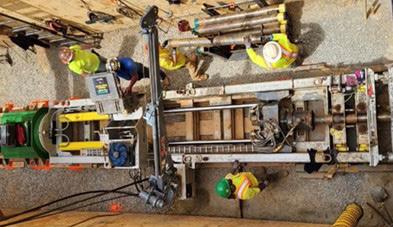 Figure 1. Barbco Pathfinder 500 utilising a right angle push plate, allowing the power unit to be operated from outside the pit.
Figure 2. Brent Scarbrough & Company’s first project using the Pathfinder 500, one of four crossings 500 ft long. This project won the Mosaic Platinum award for excellence in 2018.
Figure 1. Barbco Pathfinder 500 utilising a right angle push plate, allowing the power unit to be operated from outside the pit.
Figure 2. Brent Scarbrough & Company’s first project using the Pathfinder 500, one of four crossings 500 ft long. This project won the Mosaic Platinum award for excellence in 2018.
62 World Pipelines / OCTOBER 2023
Figure 3. Chad Cox operating a Barbco Pathfinder 500.

ADVERTISERS’ DIRECTORY
a pilot drive or auger bore, relies on the initial setup. No setup is quite the same.” He approaches each crossing with emphasis on safety, orderliness and efficiency of the worksite. His excavations are well thought out and aesthetically pleasing. Individual factors such as soil classification, depth, and groundwater all play a role in determining pit design. In addition, the consideration of the equipment footprint and how it relates to the proposed bore path to achieve an accurate outcome takes immense amounts of pre-task planning. Let’s not forget about the potential change of formation and how it can affect the tooling and loading of the machine in the launch pit. “You can’t hit the target, at any distance if your gun keeps moving”, says Chad. Securing the equipment in place is very important and an adequate backstop is critical. If the equipment can be easily moved before you start it’s not likely to improve during the pilot phase of the project.
Training
Proper training puts the contractor in a place of comfort. Experience gives the contractor the tools and ability to succeed, even in tough conditions. Research and proper due diligence bridge the gap. Chad can rely on his team and their training and in-field experience when any issues arise. He created a routine that his crew follows for the pilot process. Everyone knows their responsibilities and understands the critical path to completion. Successfully completing over 200 pilot bores is an achievement alone, but what’s just as notable is the fact that all targets have been hit within millimeters. Hitting an 8 in. manhole boot from 400 ft away, time and time again, isn’t luck. It’s skill. Chad runs a crew consisting of himself and seven other individuals who all play integral roles in the production process. It’s a well-oiled machine at this point. For Chad, one of his keys to success is promoting a 100% effort mindset in the workplace. Each Monday, he holds a routine toolbox talk with his crew to go over new ideas, things to work on, and how to improve their overall processes. This is essential to keeping his crew informed and establishes dedication to getting the job done as swiftly and safely as possible. It’s known by many that when you couple a highly motivated group of individuals with well-maintained equipment, extraordinary results are possible. Chad and his team have successfully completed pilot bores north of 500 ft and has yet to be on a job that his crew couldn’t handle. It is Chads attitude, commitment and dedication that really makes the difference!
Conclusion
When working in poor ground conditions with little to no room for error, guided boring can be the best course of action. The guided boring method allows for critical line and grade to be maintained in ground that is densely populated with other utilities. In today’s environment, many contractors are faced with this dilemma. No more ‘poke and hope’! Guided boring method gives contractors the assurance that jobs can be completed successfully with a high level of accuracy.
Advertiser Page 3X Engineering 02 AGRU 60 American Augers 33 Argus OBC BAUMA 55 Böhmer GmbH 45 C.A.T Group IBC CRC-Evans 04 Curtiss-Wright 07 Dairyland Electrical Industries 59 Darby 43 DeFelsko 26 Denso Inc. OFC, 51 Electrochemical Devices, Inc. 52 Girard Industries 34 IPLOCA 22 Maats B.V. 37 OES 25 Palladian Energy Podcast 63 Pigs Unlimited International LLC 29 Pipeline Inspection Company 39 Propipe 30 Qapqa bound insert ROSEN IFC SCAIP S.p.A. 49 Stark Solutions 13 STATS Group 11 T.D. Williamson 17 Trenton 21





The Argus Pig Valve allows cleaning and inspection of once ‘unpiggable’ lines, improving the efficiency and longevity of your pipeline.







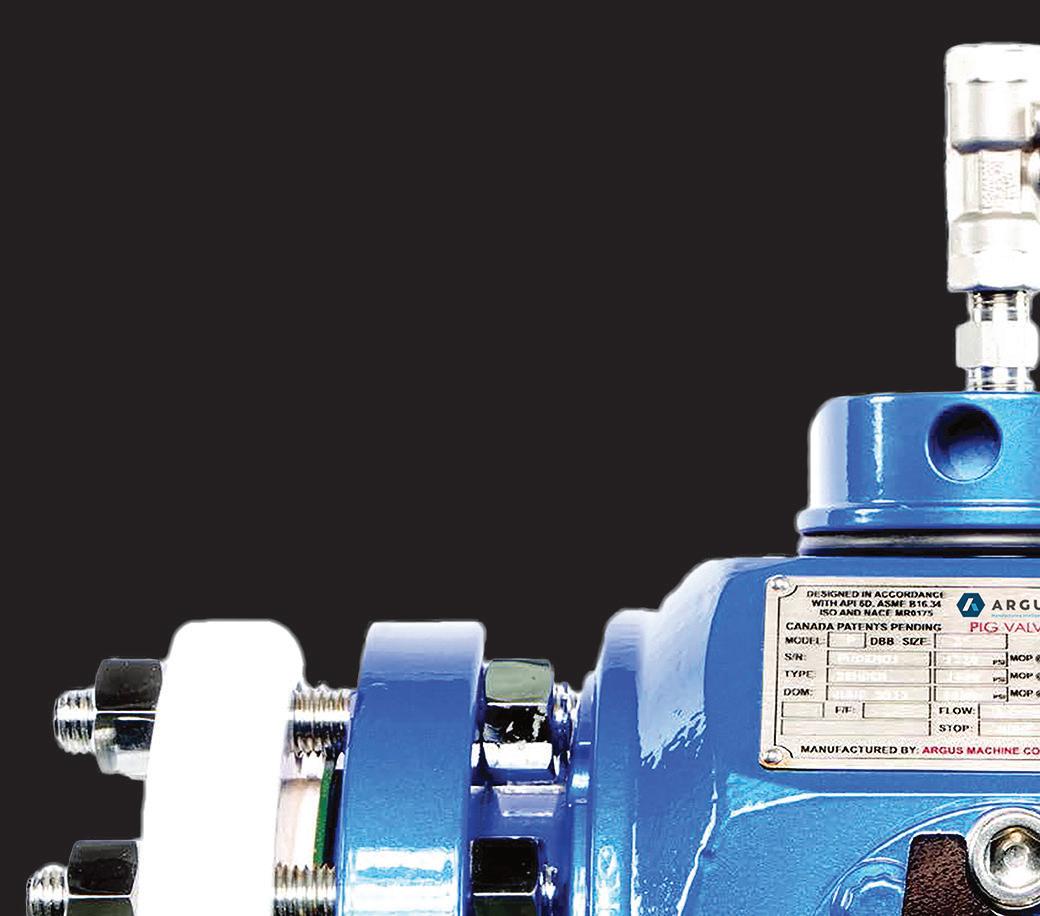
$


































































































































































































 lay within API
Figure 3. Small bore CO2 compressor rotor with centre seal.
Figure 4. API stability experience plot.
lay within API
Figure 3. Small bore CO2 compressor rotor with centre seal.
Figure 4. API stability experience plot.








 Figure 4. 18 x 12 in. SureConnect mechanical tie-in clamp, Victoria, Australia.
Figure 5. 16 in. SureConnect connectors, Class 900.
Figure 4. 18 x 12 in. SureConnect mechanical tie-in clamp, Victoria, Australia.
Figure 5. 16 in. SureConnect connectors, Class 900.


















 Figure 3. Because it uses no electronic devices, the Celeros Flow Technology surge relief system is not affected by power loss, communication disruption or cyberattacks.
Figure 3. Because it uses no electronic devices, the Celeros Flow Technology surge relief system is not affected by power loss, communication disruption or cyberattacks.
































 Figure 1. Barbco Pathfinder 500 utilising a right angle push plate, allowing the power unit to be operated from outside the pit.
Figure 2. Brent Scarbrough & Company’s first project using the Pathfinder 500, one of four crossings 500 ft long. This project won the Mosaic Platinum award for excellence in 2018.
Figure 1. Barbco Pathfinder 500 utilising a right angle push plate, allowing the power unit to be operated from outside the pit.
Figure 2. Brent Scarbrough & Company’s first project using the Pathfinder 500, one of four crossings 500 ft long. This project won the Mosaic Platinum award for excellence in 2018.









